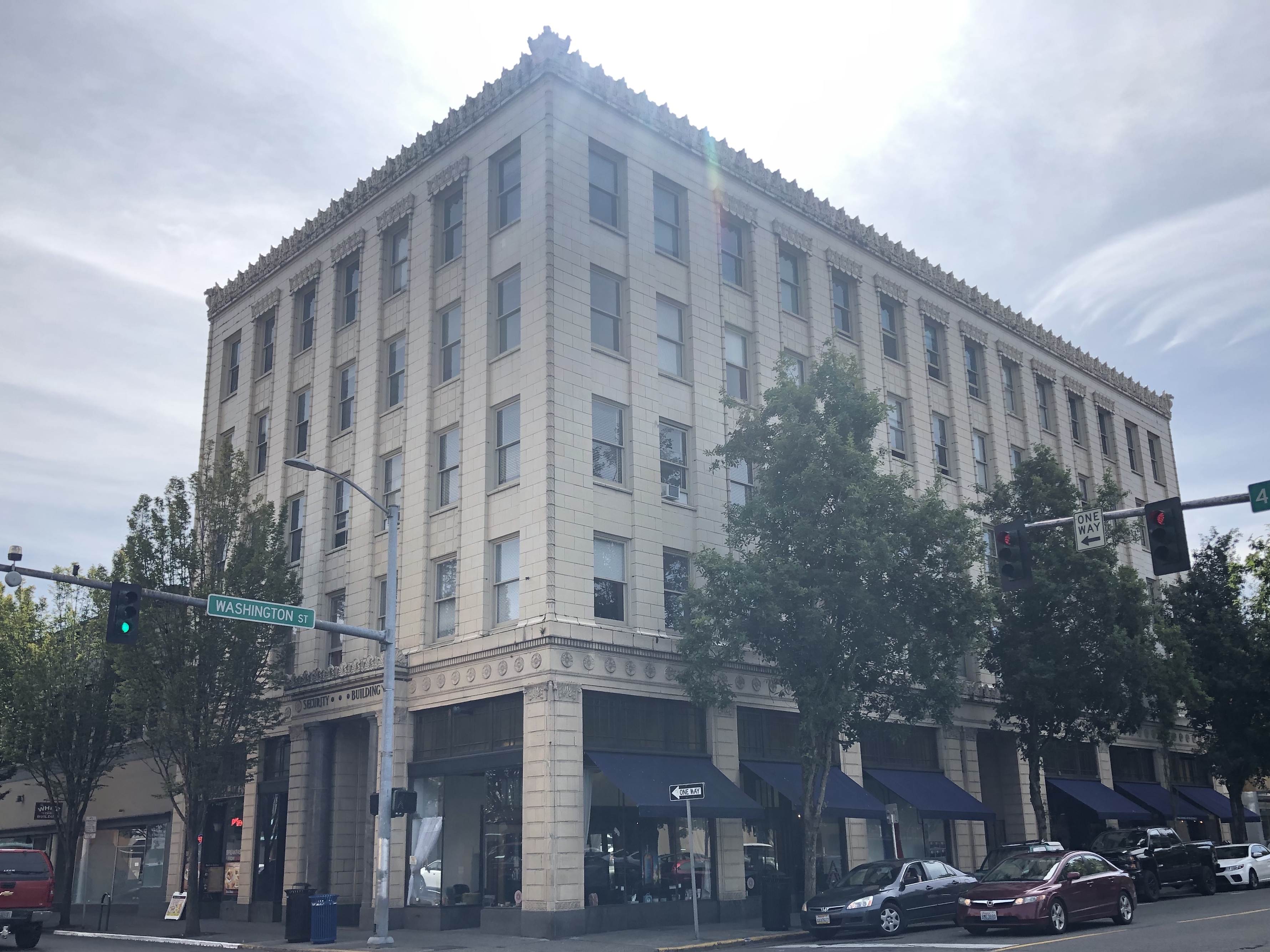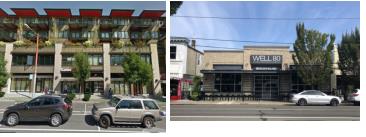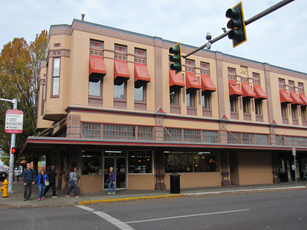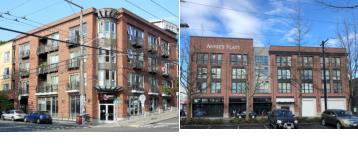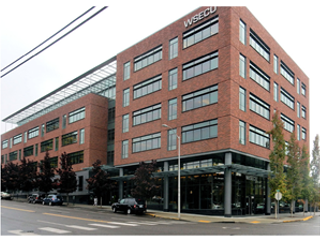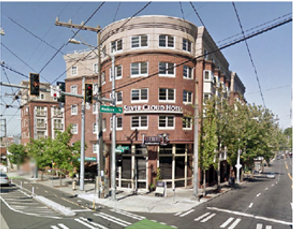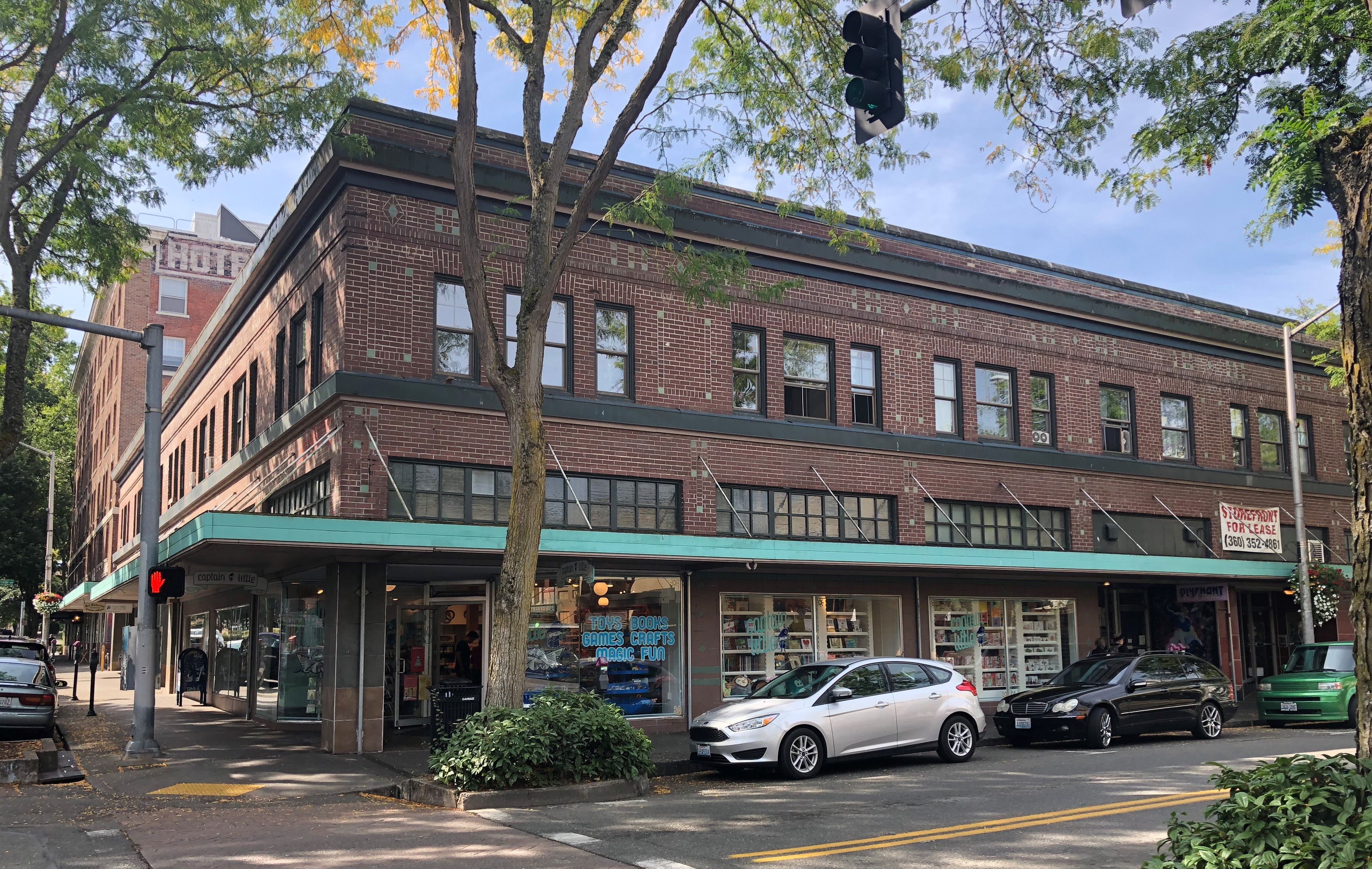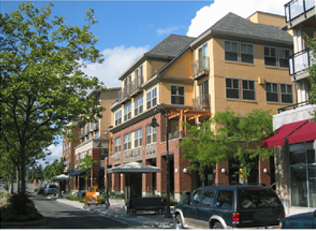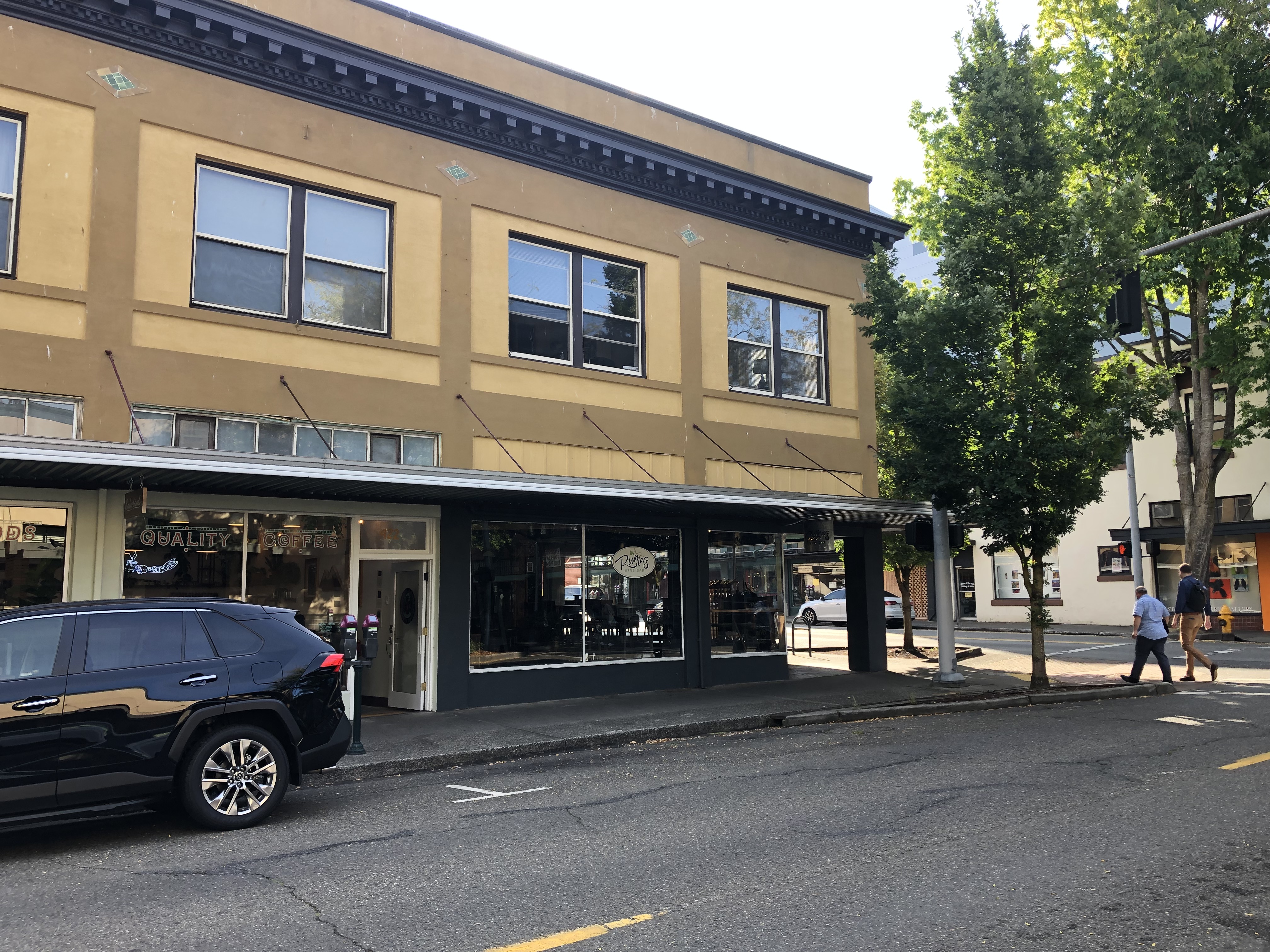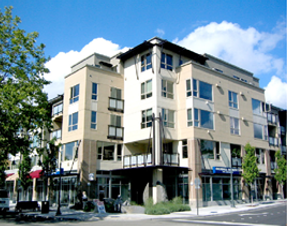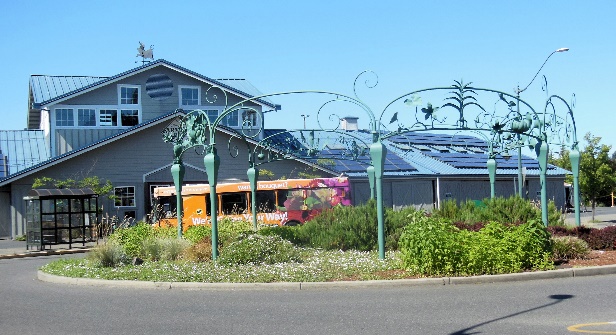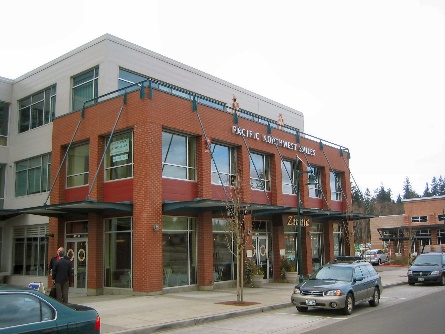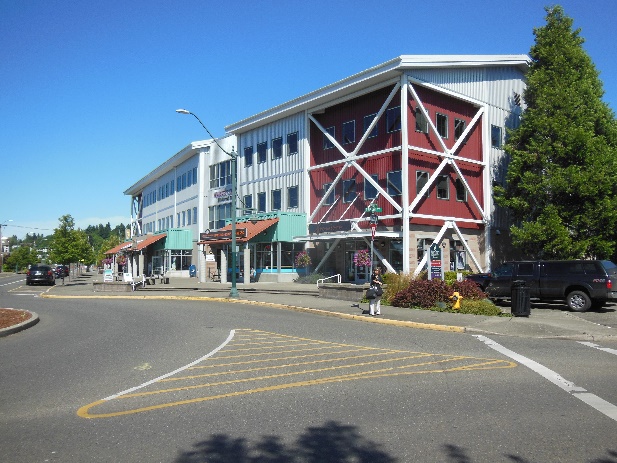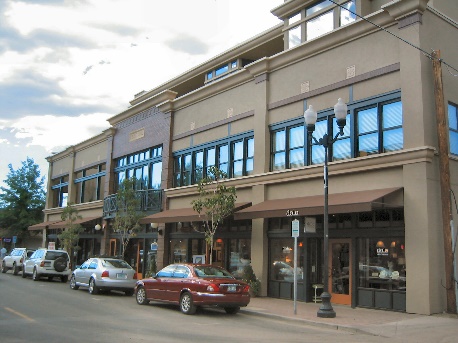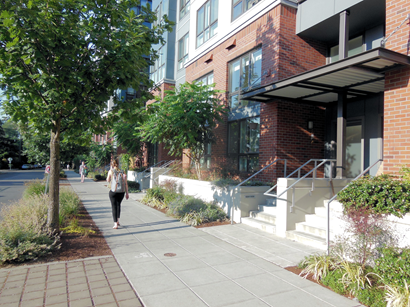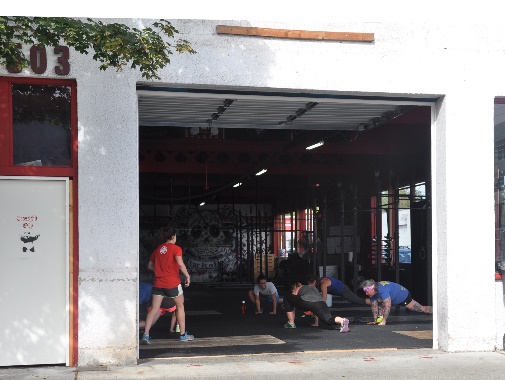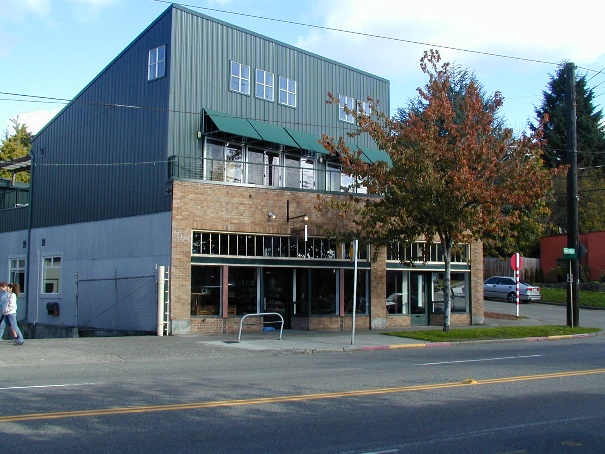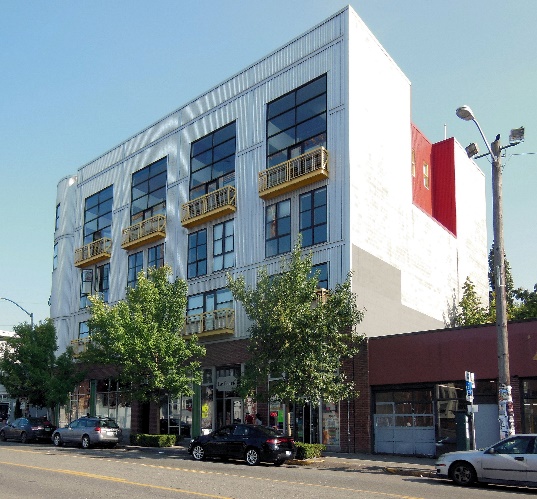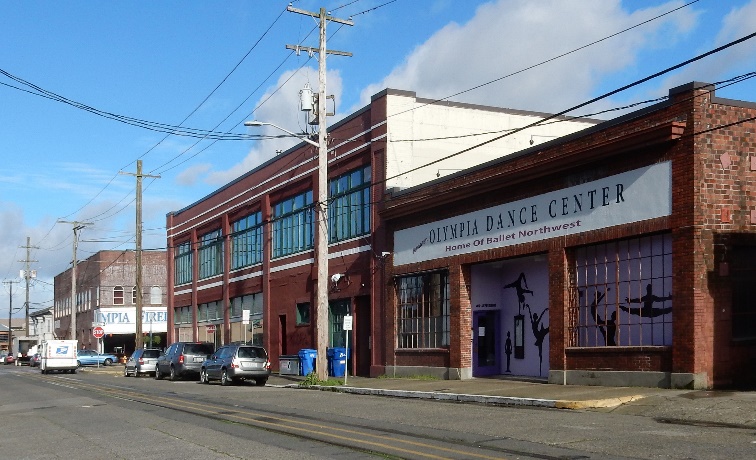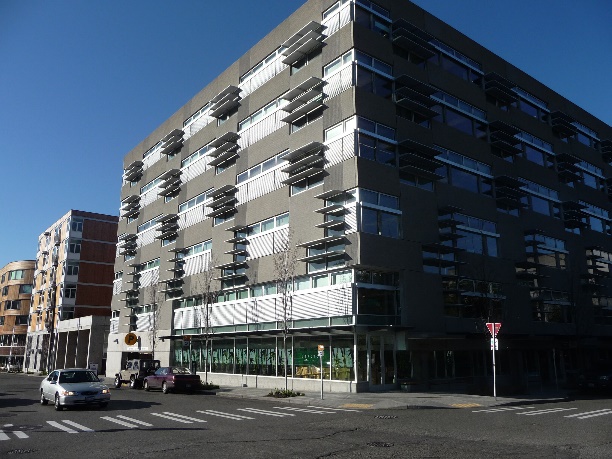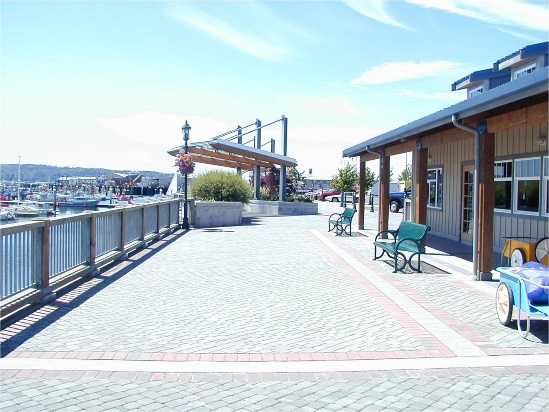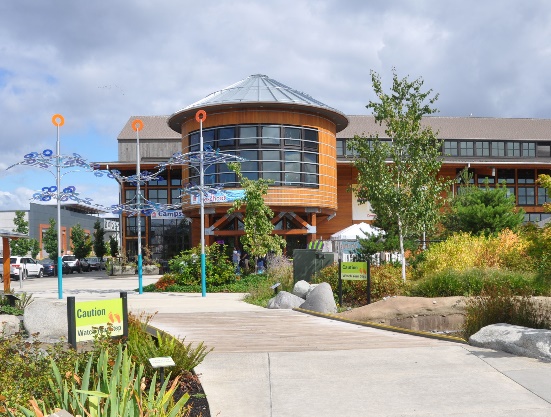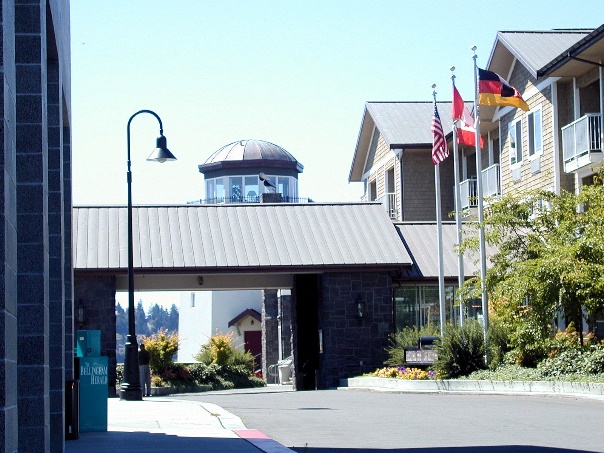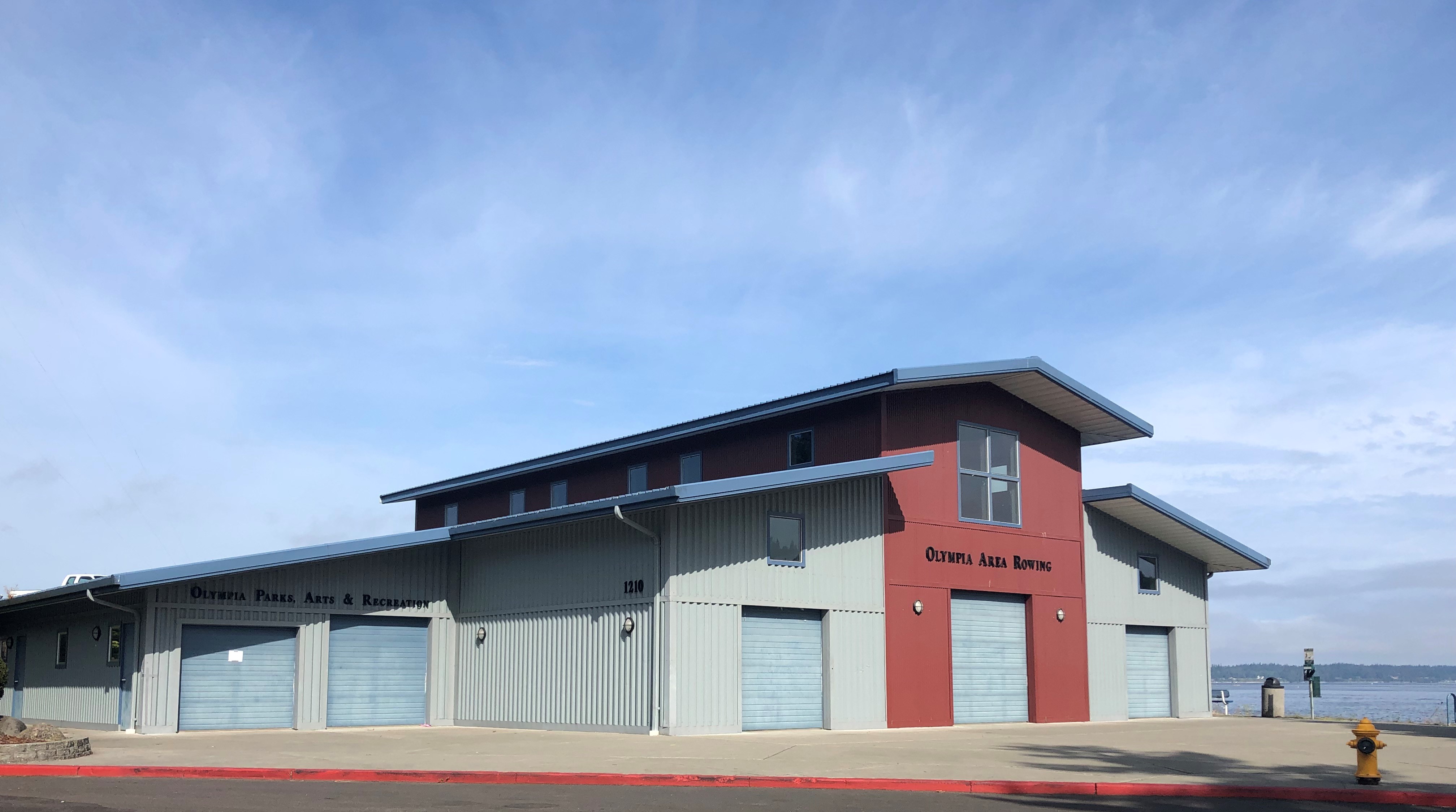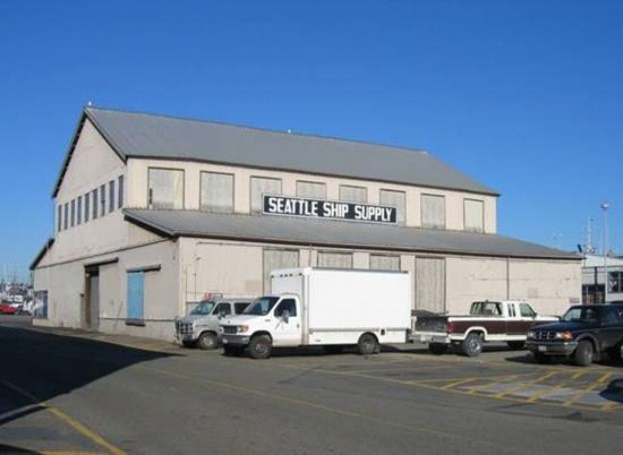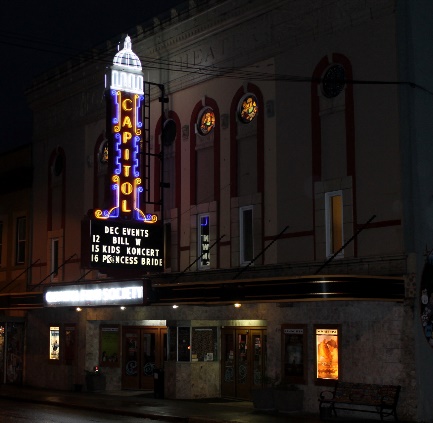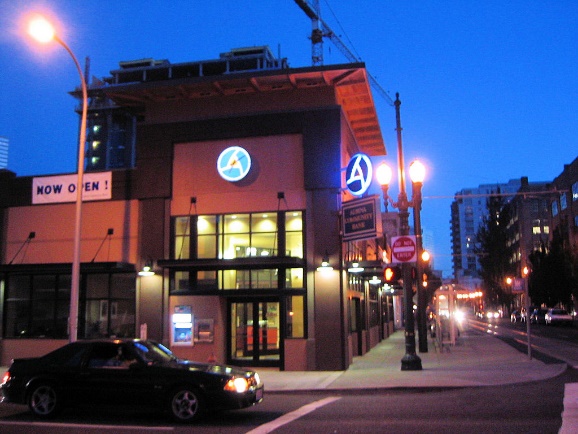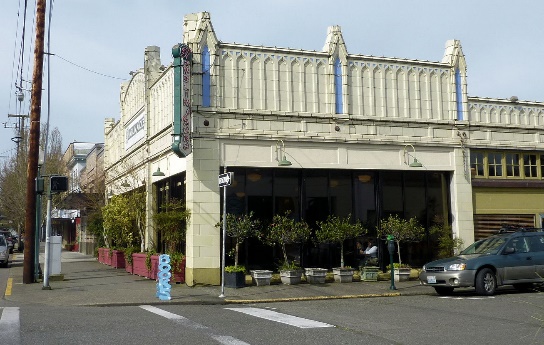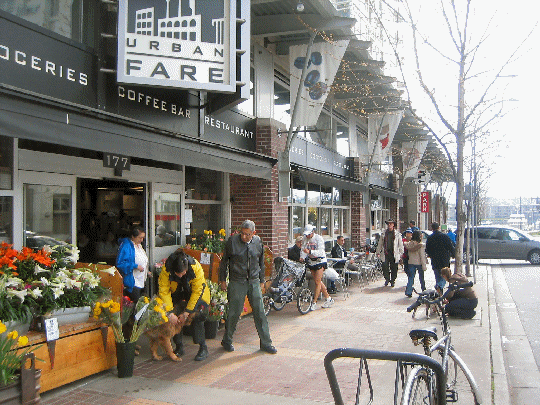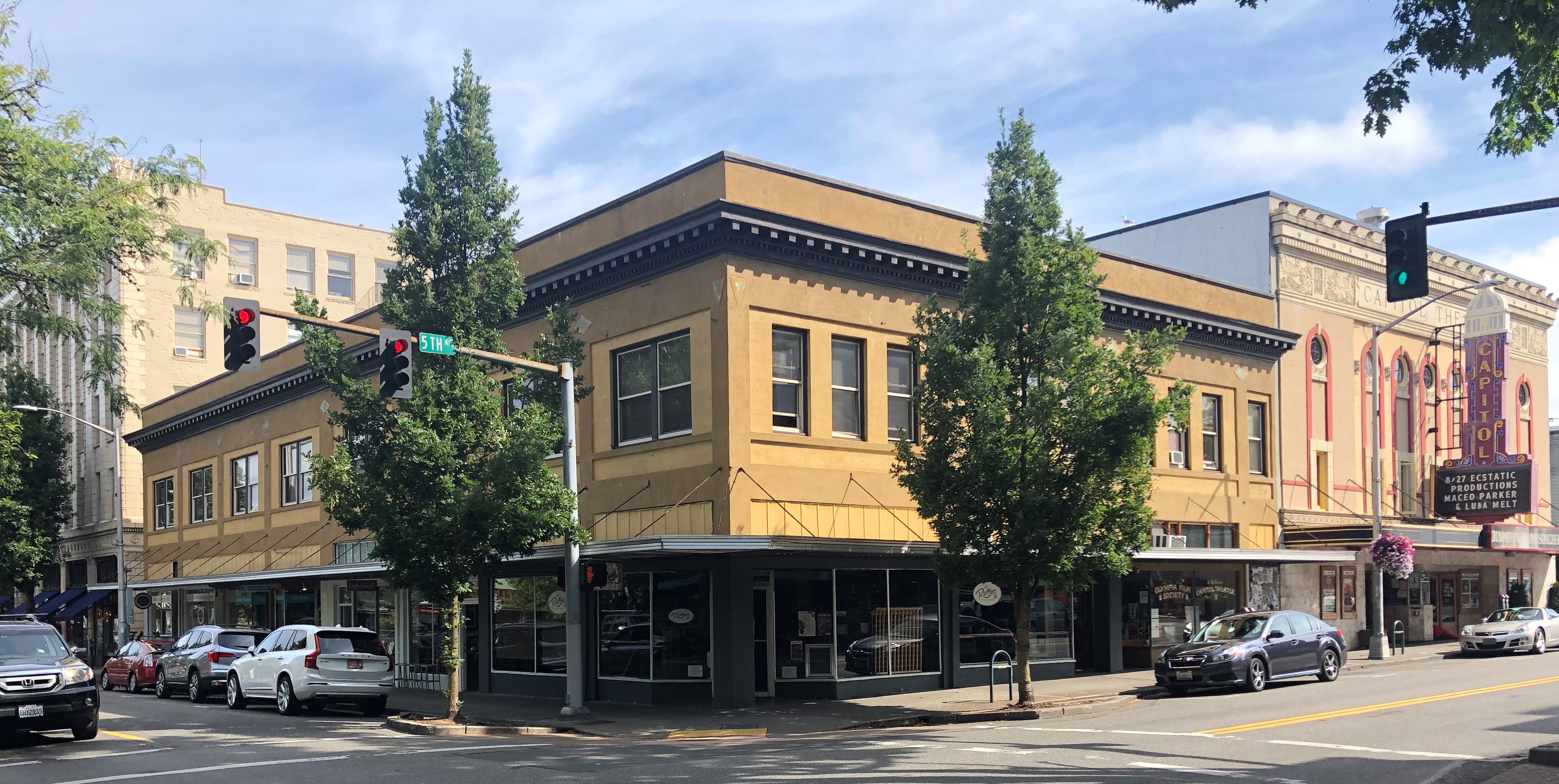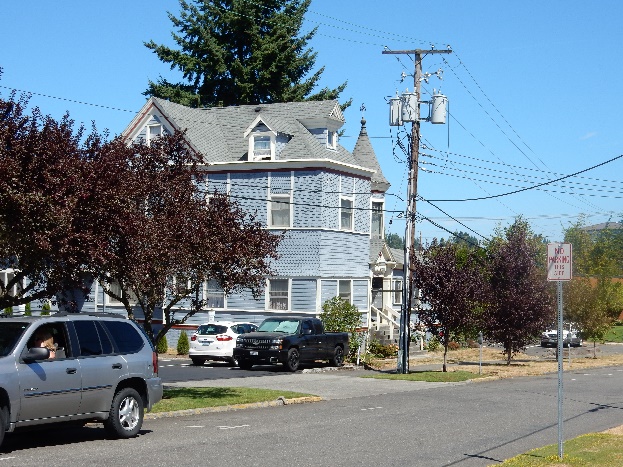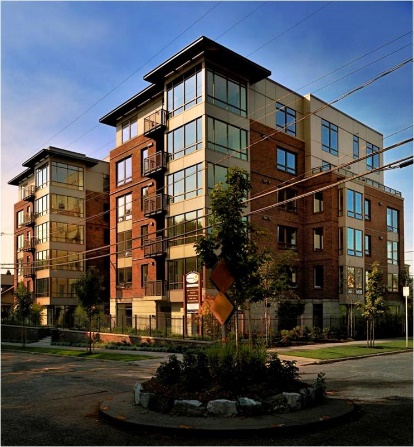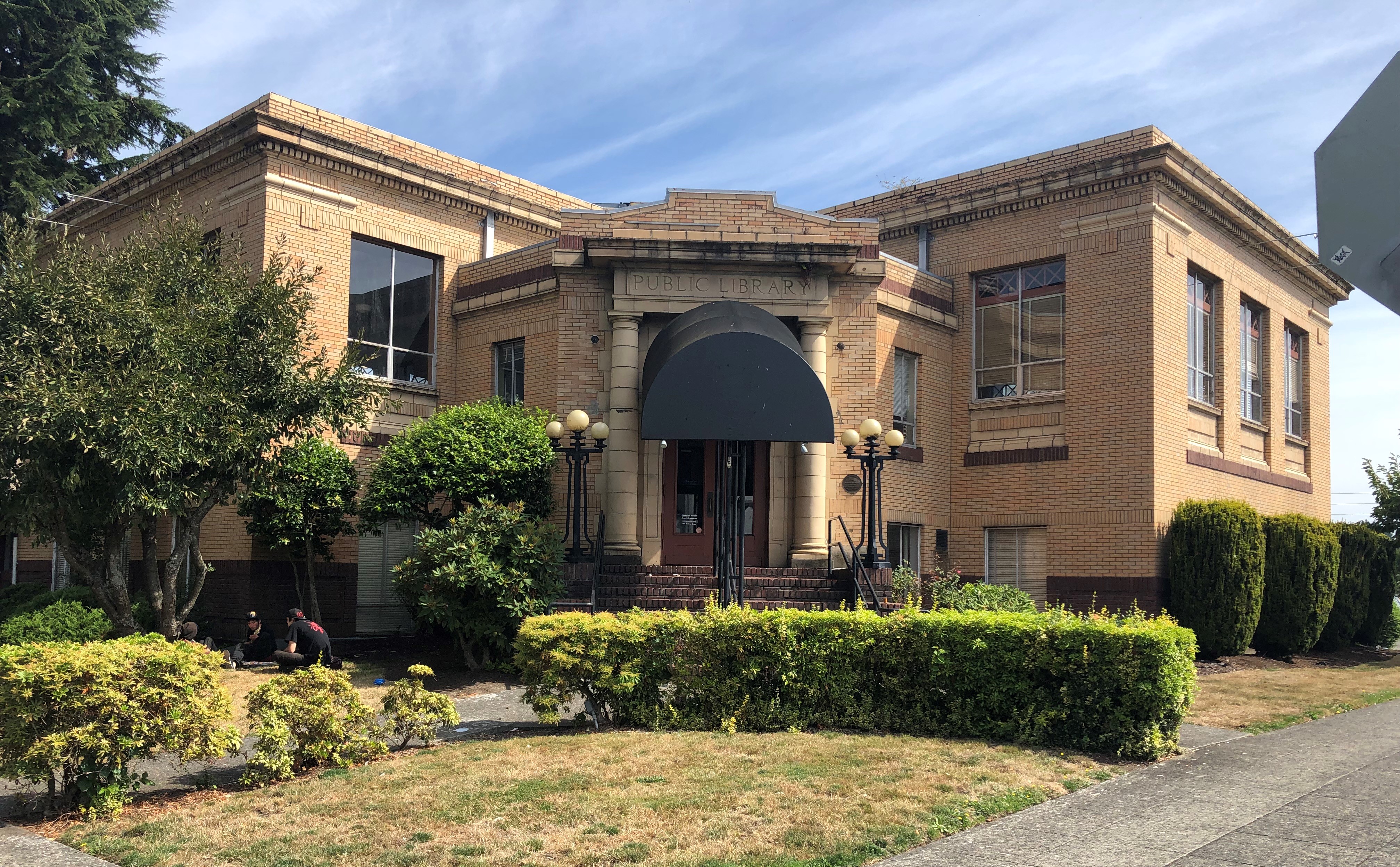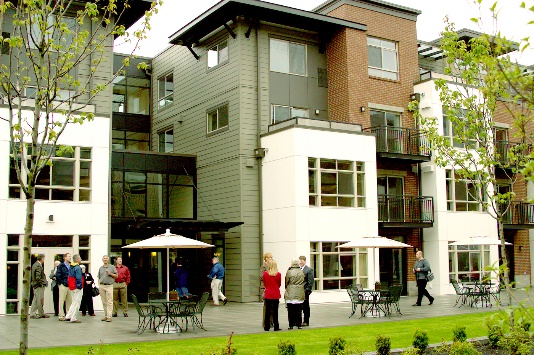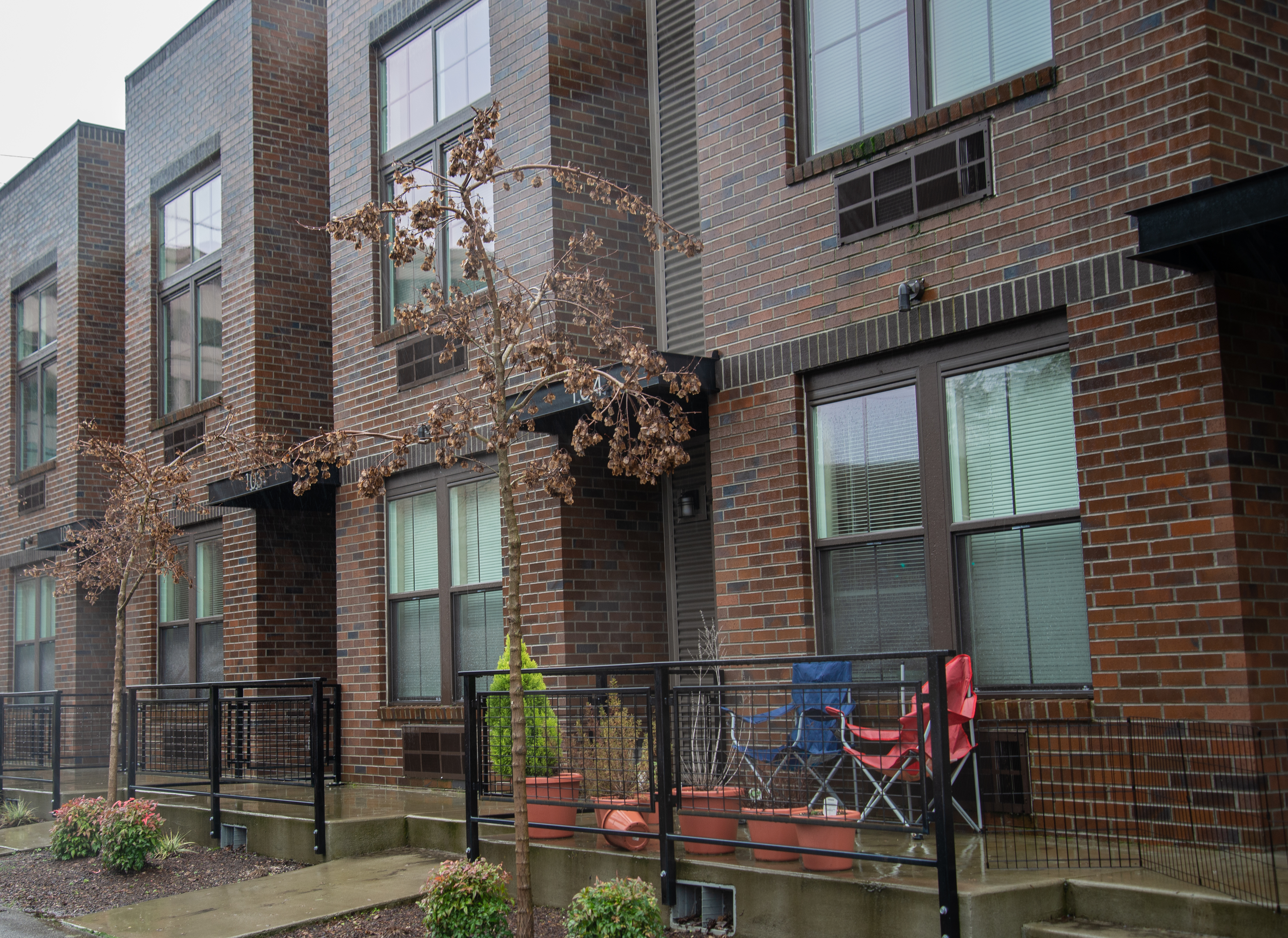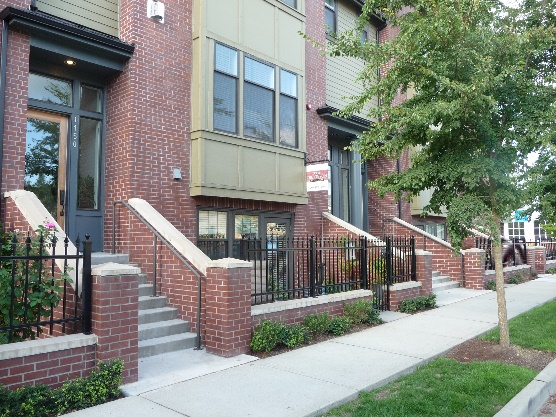Chapter 18.120
DOWNTOWN DESIGN CRITERIA
18.120.000 Chapter Contents
Sections:
18.120.100 Introduction.
18.120.200 Site planning.
18.120.300 Site elements and design.
18.120.400 Building Design.
(Ord. 7244 §1 (Exh. A), 2020).
18.120.100 Introduction
Section Contents:
18.120.110 Purpose.
18.120.120 Applicability and procedures.
18.120.130 Downtown design sub-districts.
18.120.140 Designated street types.
18.120.110 Purpose
The purpose of Chapter 18.120 is to implement the Comprehensive Plan by:
1. Promoting high quality urban design.
2. Enhancing the pedestrian environment.
3. Activating the streetscape.
4. Reinforcing unique character areas.
5. Preserving the Downtown’s historic character.
(Ord. 7244 §1 (Exh. A), 2020).
18.120.120 Applicability and procedures
A. PROJECT REVIEW PROCEDURES
The guidelines within these chapters apply to all properties within the area shown in Figure 18.120.130.A.1. The applicability and review procedures for these guidelines are as described in OMC Chapter 18.100, except as follows:
1. Design guidelines do not apply to public projects within the public right-of-way.
2. Where two or more Sub-Districts are indicated in Figure 18.120.130.A.1, the applicant may select which Sub-District will apply. All regulations for that Sub-District will then apply.
3. In the event there is a conflict for a property that is located within the historic district, or an individually listed historic property, 18.12.090 takes precedent (see language of Chapter 18.12.040.c).
B. DEFINITIONS. Some terms are only used in the context of these design guidelines. These terms are as follows:
1. Architectural Scale: The perceived height and bulk of a building relative to that of neighboring buildings.
2. Blank wall: Any wall or portion of a wall that has a surface area of 400 square feet of vertical surface without a window, door, or building modulation or other architectural feature or any ground level wall surface or section of a wall over 4 feet in height at ground level that is longer than 15 feet as measured horizontally without having a ground level window or door lying wholly or in part within that 15-foot section.
3. Building Details: Smaller building components such as lights, furniture, artwork, signs, and door and window moldings that are perceived from a short distance from the building (less than 80 feet away).
4. Building Elements: Larger building features such as balconies, cornices, bay windows, and turrets that can generally be seen from a distance (80 feet or more).
5. Building Modulation: The stepping back or extension forward of a portion of a building façade.
6. Custom, Decorative, or Hand-Crafted: Distinctive or “one-of-a-kind” elements or unusual designs that require a high level of craftsmanship. However, these terms do not necessarily mean that the elements are ornate. They may be simple if finely detailed or manufactured. It is more important that the façade details fit the style and character of the building.
7. Fenestration: The design, proportioning, and disposition of windows and other exterior openings of a building.
8. Human Scale: Addresses the relationship between a building and the human body. Human scale design is optimized for human use, with elements sized with the human body in mind.
9. Massing: A unified composition of two-dimensional shapes or three-dimensional volumes, especially one that has or give the impression of weight, density, and bulk.
10. Pilaster: A column that is built into the façade but projects out from it.
11. Street wall: A relatively continuous building edge along or near the back of the sidewalk.
12. Transom Window: A strip of smaller windows located above display windows.
13. Woonerf: A “living” street which includes shared spaces, traffic calming design and techniques, and very low speed limits. It is shared pedestrian, bicyclist, and vehicular space, with preference to non-motorized users.
(Ord. 7244 §1 (Exh. A), 2020).
18.120.130 Downtown design sub-districts
A. INTENT
These Guidelines were informed by Olympia’s Downtown Strategy and establish Downtown Design Sub-Districts (Sub-Districts). The purpose of the Sub-Districts is to achieve greater variety of uses and design character as well as greater design unity within specific Sub-Districts and along streets within the Downtown. These Sub-Districts are identified in Figure 18.120.130.A.1.
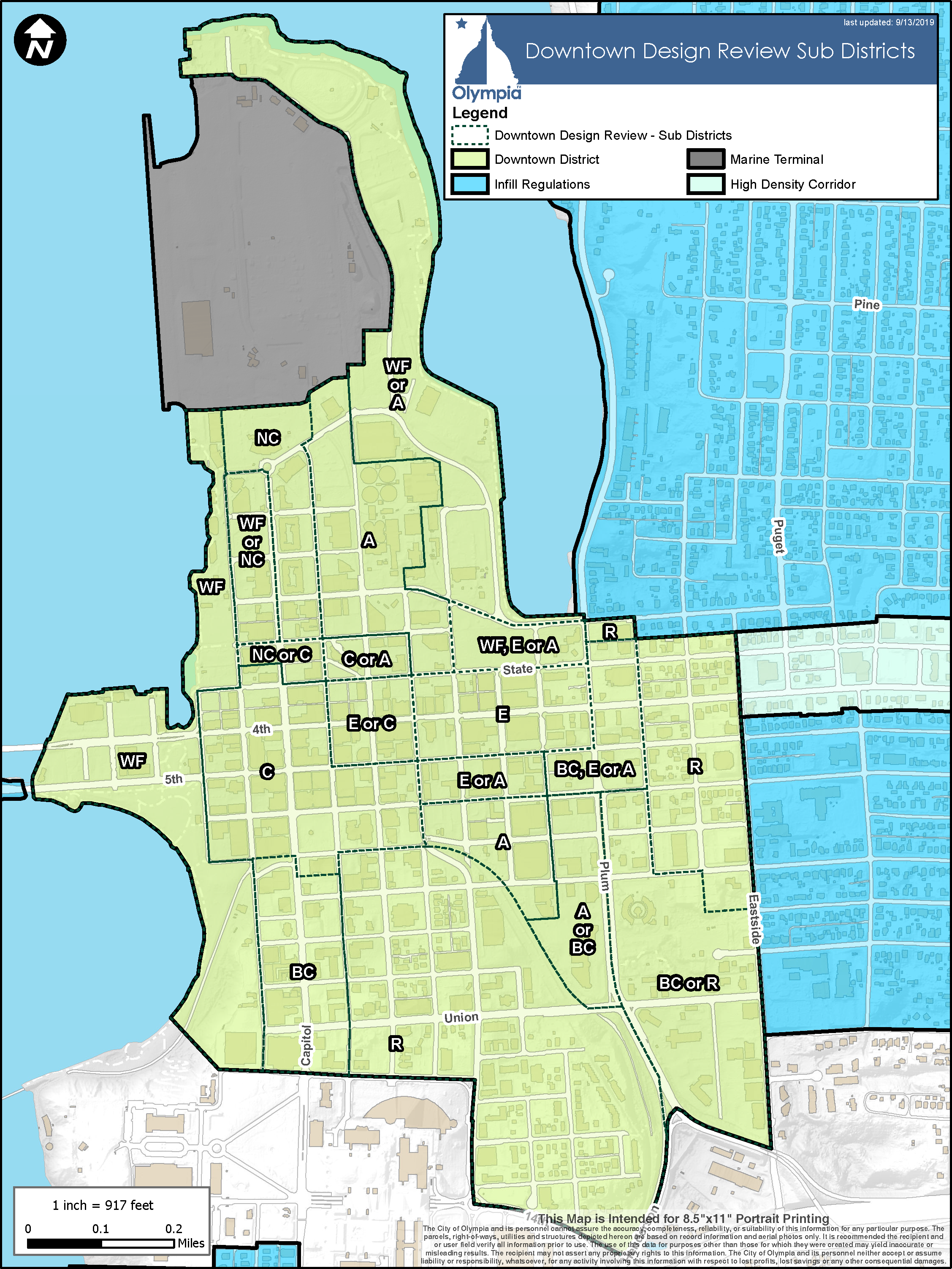
Figure 18.120.130.A.1: Downtown Design Sub-Districts (Sub-Districts). Where there are multiple Sub-Districts in a group the project applicant may choose which Sub-District applies.
B. DESCRIPTION OF DOWNTOWN DESIGN SUB-DISTRICTS
1. Core: General objectives: Enhance and complement historic architecture. The existing historic architectural styles and influences are varied, including Neoclassical, Art Moderne, Chicago Style, Romanesque, Victorian, Mission Revival, and Art Deco. Activate streetscapes with storefront building design and wider pedestrian pathways. Within the historic retail core, design elements should complement the surrounding historic architecture with sensitivity to neighboring buildings’ proportions and rhythms; “classic main street” furnishings, finishes, and styling; and materials drawing inspiration from surrounding historic materials like sandstone, brick, terracotta, and granite. New buildings may exhibit contemporary styled architecture but must not detract from the overall historic character of the Sub-District. New buildings should complement the Sub-District’s character through design features and qualities such as materials, scale, façade composition, and proportion, but not try to replicate historical styles.
2. Art/Tech: General objectives: Utility is a design driver for the informal Art/Tech Sub-District, suggesting opportunities for adaptive reuse of existing buildings, and street improvements that promote new pedestrian and bicycle uses. The incorporation of “warm industrial” materials such as weathered wood or metal, and design elements such as garage doors or large entryways that engage the street or parklets are examples of how architecture and streetscape designs might complement the area’s do-it-yourself character. The retention of historic materials when present is encouraged.
3. Entertainment: General objectives: Art, creativity, and imaginative expression defines this hub of dining, nightlife, and the performing arts. Design elements here may reflect aspects of the Core and Art/Tech Sub-Districts, but a focus on art, theatricality, imagination, and night lighting that enhances building design and public spaces will distinguish this area. Buildings and streetscapes such as wider sidewalks, consistent lighting, and clear wayfinding that support entertainment needs.
4. Waterfront: General objectives: Better connection of Downtown to its waterfront location—visually, physically, and symbolically—is a primary goal of this Sub-District. Elements that reflect the shoreline ecology, local maritime activities, Northwest Native American history, historic industrial uses, sailing and boating, fishing and aquaculture, and commercial trading are encouraged. Examples include those design elements found at Percival Landing such as furnishings, light fixtures, marine hardware, wood pilings, boardwalks, and rope may be incorporated into streetscape improvements and new developments to help draw the aesthetics of the waterfront deeper into Downtown.
5. North Capitol Way: General objectives: One of the Olympia Downtown Strategy’s important urban design concepts is to improve the visual connections and pedestrian experience along Capitol Way between the Capitol Campus and Farmers Market. In the North Capitol Way Downtown Design Sub-District, this means providing streetscape improvements in the public right-of-way that are consistent with other segments of Capitol Way. New development should include a variety of architectural and landscaping treatments that feature attractive, inviting building fronts and that accommodate a variety of uses so that all buildings present a welcoming face to the street. Maintain a mix of historic and new pedestrian-friendly development.
6. Business Corridor: General objectives: This Sub-District along Capitol Way and portions of the Plum Street SE corridor is currently characterized by older hotels, small commercial buildings, parking lots, banks, and older office buildings. Substantial redevelopment is envisioned that adds human activity and upgrades the pedestrian routes between Downtown and the Capitol Campus. This will take the form of substantial, urban scale commercial, institutional, and mixed-use buildings with refined façades that complement Campus and Downtown Core buildings. Buildings will include active ground floor uses and inviting facades with weather protection. Enhancements to the streetscape to improve uniformity will include amenities such as lighting, paving, and landscaping to create a strong visual connection between the Campus and Downtown Core.
7. Residential Neighborhood: General objectives: This Sub-District is envisioned as an urban residential neighborhood with a mix of uses and architectural variety in building types with landscape plantings in streetscapes, medians, and on private property. Office development is expected where zoning allows. New development is anticipated, and is expected to be compatible with the residential character. Retaining historic buildings is encouraged.
(Ord. 7244 §1 (Exh. A), 2020).
18.120.140 Designated street types
In order to provide attractive pedestrian oriented streetscapes, Downtown streets are classified in the designated streets described as follows and as indicated in Figure 18.120.140.A.1. These descriptions are for design review only.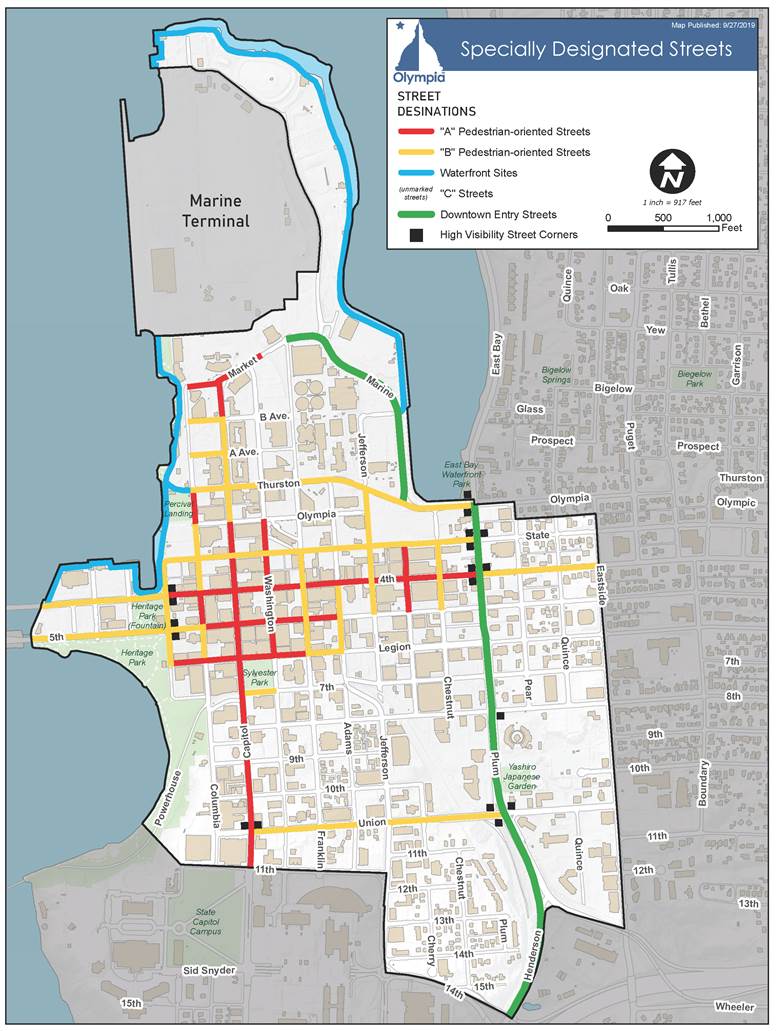
Figure 18.120.140.A.1: Designated streets, waterfront sites and high visibility street corners.
A. Type A Pedestrian Oriented Streets are the most important Downtown pedestrian routes with the greatest volume and concentration of pedestrian activities and attractions. The intent is to ensure these streets maintain that level of pedestrian traffic and amenity. Guidelines for Type A Pedestrian Oriented Streets emphasize a high level of façade transparency (amount of clear ground floor window area), wide sidewalks, non-residential uses on the ground floor, limited vehicle access and parking, and maintenance of a prominent street wall.
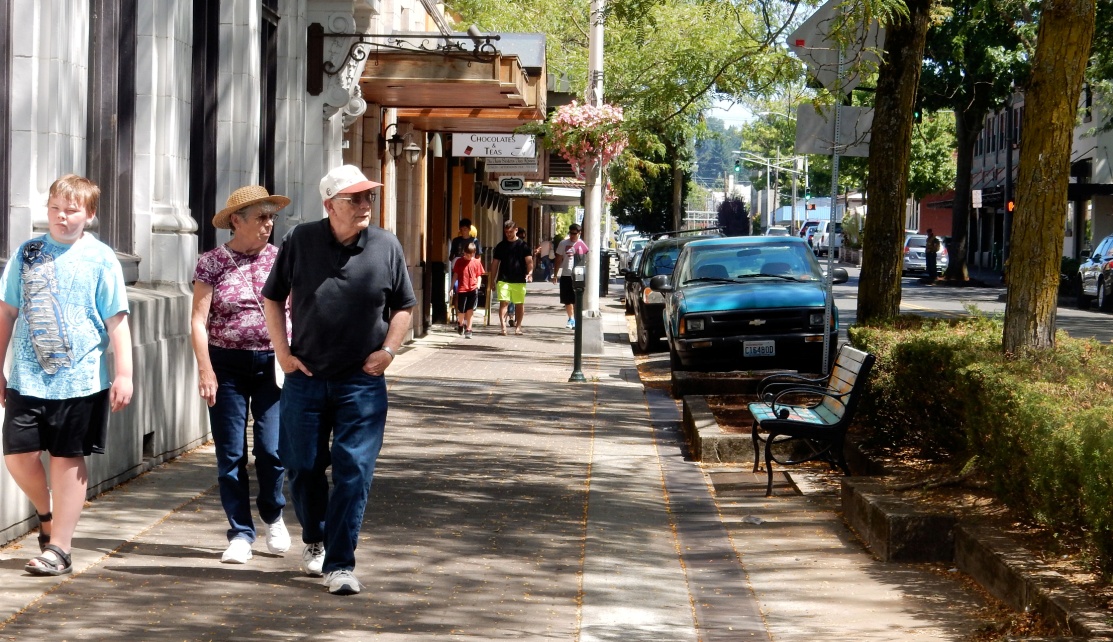
Figure 18.120.140.A.2: Type A Pedestrian Oriented Street.
B. Type B Pedestrian Oriented Streets are also important pedestrian connections but with less pedestrian traffic, amenities, and attractions. The intent is to ensure Type B Pedestrian Oriented Streets are attractive pedestrian connections with sufficient interest at street level to encourage pedestrian traffic. Guidelines for Type B Pedestrian Oriented Streets require some transparency and access limitations.
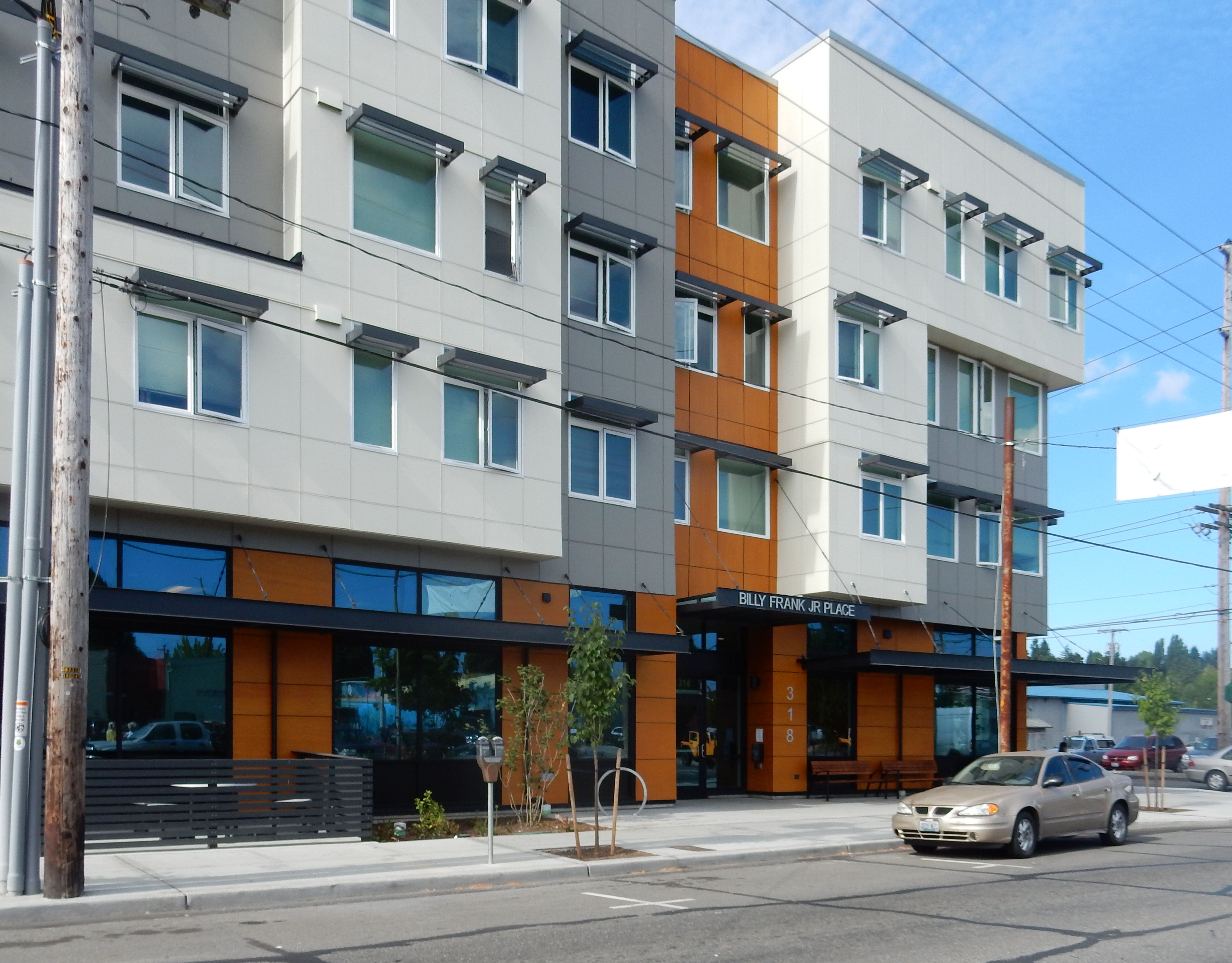
Figure 18.120.140.A.3: Type B Pedestrian Oriented Street.
C. Type C Streets are unmarked on figure 18.120.140.A.1. All streets in Downtown that are not designated Type A Pedestrian Oriented Streets, Type B Pedestrian Oriented Streets, or Downtown Entry Streets are Type C Streets The intent of guidelines in Section 18.120.220.E is to ensure Type C Streets are functional, attractive, and can accommodate a wide variety of uses. Guidelines for Type C Streets typically include a defined edge at the back of the sidewalk (that is either a building, landscaping or pedestrian oriented space rather than an unscreened parking lot), and provide efficient pedestrian access to building entries.
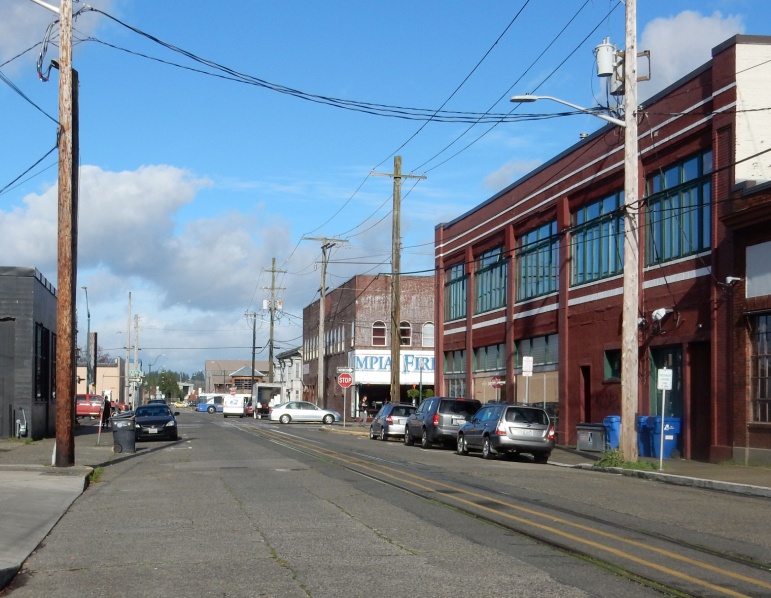
Figure 18.120.140A.4: Type C Street.
D. Downtown Entry Streets are arterials with relatively high vehicle traffic volumes that bring travelers into the Downtown. Because they are highly visible, the intent of the guidelines for Downtown Entry Streets in OMC 18.120.120.C emphasize creating an attractive street front even if the uses may be auto oriented.
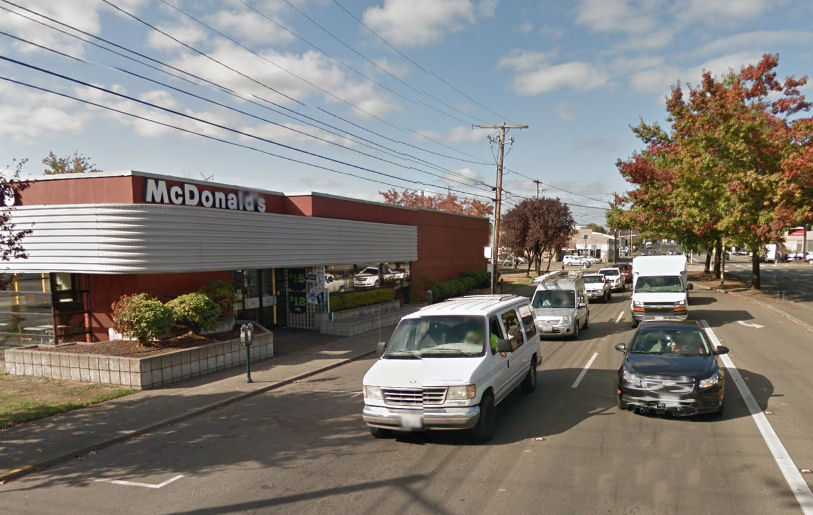
Figure 18.120.130.A.5: Downtown Entry Street.
E. Waterfront Sites are those that directly face the shoreline; guidelines support an attractive and active pedestrian esplanade.
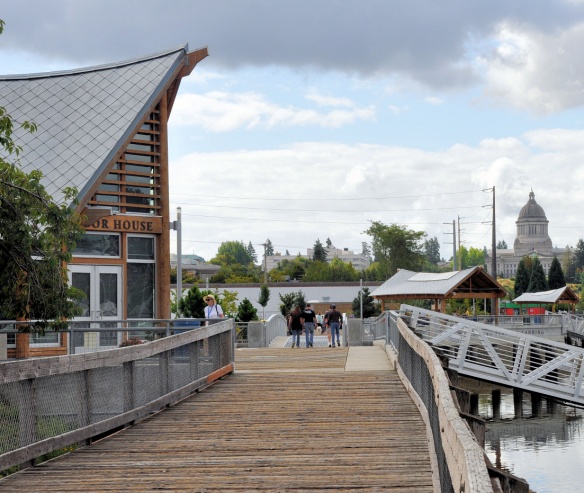
Figure 18.120.140A.6: A Waterfront Site.
F. High Visibility Street Corners are located at prominent intersections; the guidelines call for an enhanced design feature to support the importance of these corners.
(Ord. 7244 §1 (Exh. A), 2020).
18.120.200 Site planning
Section contents:
18.120.210 Introduction.
18.120.220 Street fronts.
18.120.230 Pedestrian circulation.
18.120.240 Buildings with ground-related residential units.
18.120.250 Multi-building and multi-block sites.
18.120.260 Solid waste facilities, service areas, and mechanical equipment.
18.120.270 Multifamily open space.
18.120.280 Security.
18.120.210 INTRODUCTION
Site Planning addresses the visual qualities of Downtown streetscapes and developments such as building orientation and location, service areas, and pedestrian and vehicular access.
(Ord. 7244 §1 (Exh. A), 2020).
18.120.220 STREET FRONTS
A. INTENT
This section focuses on the relationship between the street and site with the intent to:
1. Assist in the implementation of City and regional transportation plans by establishing a pedestrian street overlay designation that results in a network of active, aesthetically pleasing, and interesting streets that link the Downtown retail core, the Capitol Campus, the waterfront, and residential neighborhoods.
2. Increase architectural and historic continuity between the retail core and the remainder of Downtown.
3. Increase walkability by creating a high quality, compact, pedestrian-oriented environment so that people will be encouraged to work, shop, play, and live Downtown.
4. Provide strong, continuous edges that clearly define public open spaces and rights-of-way.
5. Contribute to the streetscape by incorporating human scaled, artistic elements or public art, or historically inspired elements into building design.
6. Provide direct visual contact between activities occurring inside buildings and the street environment.
7. Establish attractive Downtown Entry Streets that enhance the visual appearance of entrances and prominent corridors into and around Downtown.
8. Acknowledge the need to accommodate arrival by vehicle while supporting increased arrival by transit, carpool, bike, and on foot.
B. APPLICABILITY AND STREET TYPE DESIGNATIONS
Street Front requirements apply to façades of buildings facing Type A Pedestrian Oriented Streets, Type B Pedestrian Oriented Streets, Type C Streets, Waterfront Sites, and Downtown Entry Streets as indicated in Figure 18.120.140.A.1.
C. REQUIREMENTS FOR TYPE A PEDESTRIAN ORIENTED STREETS
The following requirements apply to building façades facing Type A Pedestrian Oriented Streets:
1. Façade details. The building façade must conform to the “Pedestrian Oriented Façades” requirements set forth in OMC 18.120.460.
2. Ground floor use. On ground floors, only non-residential uses are allowed; residential uses are not allowed, except that hotel and multifamily residential lobbies, common rooms, and entries are allowed.
3. Ground floor setbacks. The building façade must have ground floor setbacks at least 12 feet from the face of curb. The building façade on upper stories may extend to the property/right-of-way line. On the ground floor, pilasters or similar façade extensions may be located out toward the curb a maximum of 12 inches if the pilasters are no more than 3 feet wide measured parallel to the front building façade. Surfacing materials on ground floor facades must be approved by the City for compatibility with the sidewalk materials.
Exceptions:
i. Buildings on properties with street frontage less than 100 feet, measured horizontally along the right-of-way, are not subject to the requirements of this subsection 3.
ii. The requirements of this subsection 3 do not apply to the redevelopment of an existing building.
4. Street wall definition. The ground floor street wall must extend to the property/right-of-way boundary unless the setback from the curb required in subsection 3, above, is applicable (for example, align the building along the right-of-way unless the resulting sidewalk area is less than 12 feet wide from back of curb to the first floor building wall at grade).
Exception: Up to 80% of a building front (measured parallel to the right-of-way line) may be set back up to 60 feet from the right-of-way if the setback is occupied by pedestrian-oriented open space as described in OMC 18.120.330 and the façades facing the open space meets the Pedestrian Oriented Façades and Weather Protection requirements in OMC 18.120.460.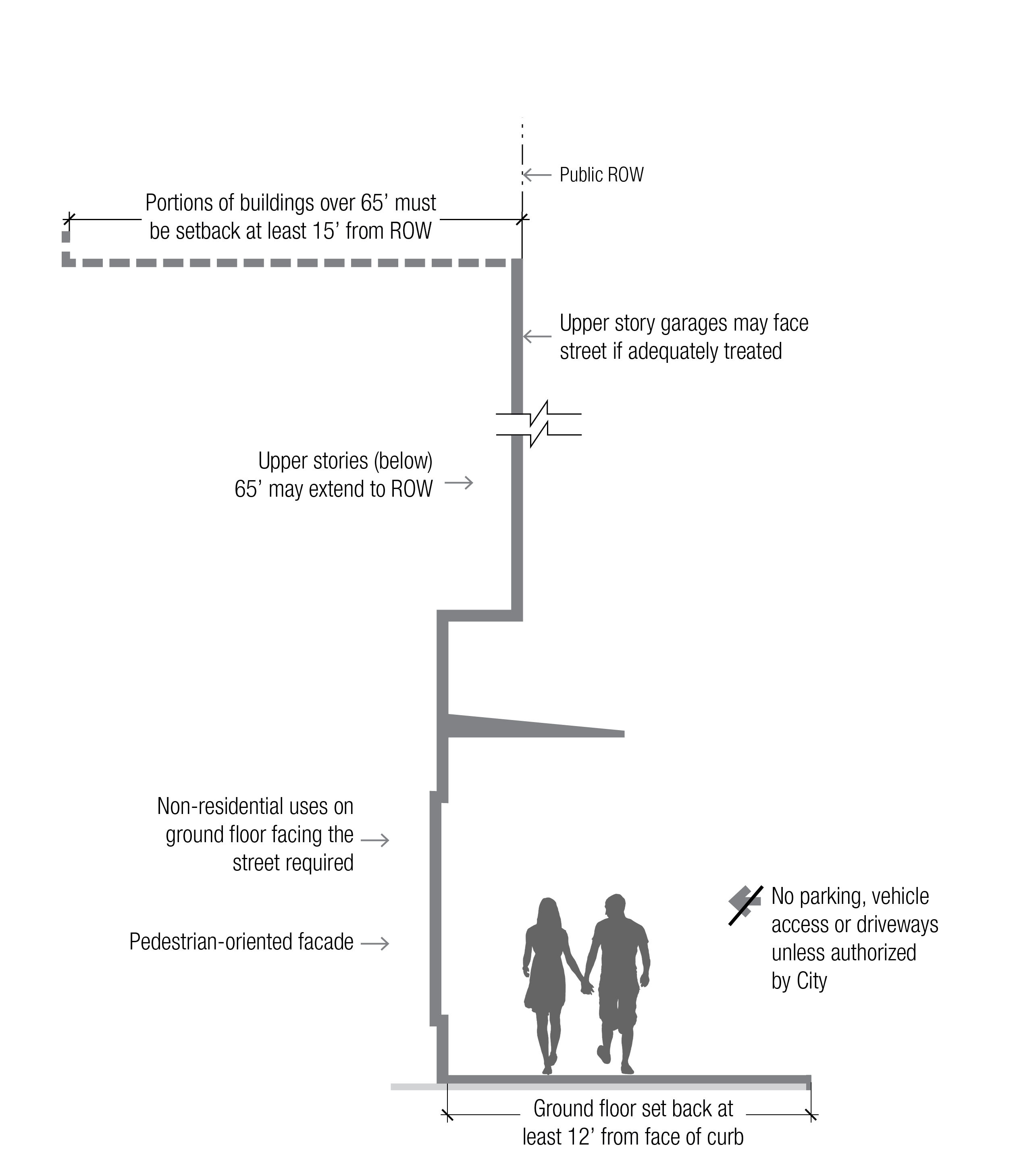
Figure 18.120.220.C.1: Summary of requirements for building façades facing a Type A Pedestrian Oriented Street. This diagram is for illustrative purposes only. See OMC 18.120.220.C for applicable requirements.
5. Vehicle parking. Surface vehicle parking directly fronting a Type A Pedestrian Oriented Street and ground floor structured parking directly adjacent to a Type A Pedestrian Oriented Street are prohibited. The City may allow upper story parking facing the street if the façade is suitably treated to appear as an occupied building or incorporates articulation treatments that break up the massing of the garage and add visual interest as described in OMC 18.120.440.B.1.
6. Vehicle access (driveways). All vehicle access must be from another street or alley unless approved by the City. For example, if the property is on the corner of two Type A Pedestrian Oriented Streets or fronts a designated Arterial and a Type A Pedestrian Oriented Street, the City will determine which street fronts may feature vehicle access (a driveway).
7. Stepbacks. Upper story stepbacks for building elements or stories over 65 feet above grade must be set back at least 15 feet from the public right-of-way.
Exception: Architecturally treated parapets and roof garden railings may extend up to 5 feet above the 65 feet façade face limit.
D. TYPE B PEDESTRIAN ORIENTED STREET REQUIREMENTS
The following requirements apply to building façades facing Type B Pedestrian Oriented Streets and to building façades in the Waterfront Sub-District parallel to the shoreline that are visible from a public pathway, including those visible from Percival Landing:
Exception: As an alternative to meeting the requirements of this subsection D, a building façade subject to this subsection is acceptable if it meets the requirements applicable to Type A Pedestrian Oriented Streets.
Note: If the building includes ground-related residential units, the building must also meet the requirements for ground-related residential units in OMC 18.120.240.
1. Façade details. The building must provide pedestrian oriented façades as described in OMC 18.120.460, unless the building façade has ground-related residential units.
Exceptions: In lieu of the building having a pedestrian oriented façade, the City may allow a departure from OMC18.120.460 provided the applicant demonstrates to the City’s satisfaction that alternative design features are equal or superior for the pedestrian environment. Examples of such solutions include a trellised area with seating, a plaza, or substantial artwork.
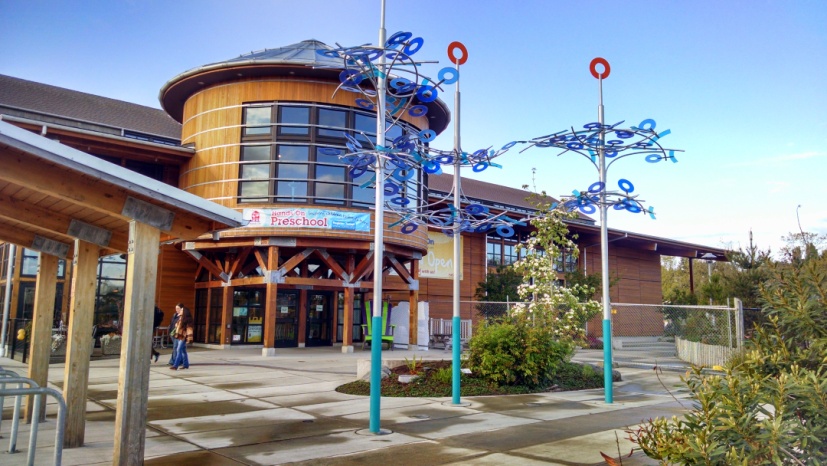
Figure 18.120.220.D.1: The Hands-On Children’s Museum is an example of a pedestrian-friendly site that employs a unique solution rather than strict conformance to Pedestrian Oriented Street requirements.
2. Ground floor setbacks. The building facade must have ground floor setbacks at least 12 feet from the face of curb. The building façade on upper stories may extend to the property/right-of-way line. On the ground floor, pilasters or similar façade extensions may extend out toward the curb a maximum of 12 inches if the pilasters are no more than 3 feet wide measured parallel to the front building façade. See Figure 18.120.220.D.2. Surfacing materials on ground floor facades must be approved by the City for compatibility with the sidewalk materials.
Exceptions:
i. Buildings on properties with street frontage less than 100 feet, measured horizontally along the right-of-way, are not subject to the requirements of this subsection 2.
ii. The requirements of this subsection 2 do not apply to the redevelopment of an existing building.
3. Street wall definition. The ground floor of buildings must extend to the property/right-of-way boundary unless the façade features ground-related residential units or the setback from the curb required in subsection 2 is applicable.
Exception: A building front may be set back up to 60 feet from the right-of-way if the setback is occupied by pedestrian oriented open space as described in OMC18.120.330 and the façade facing the open space meets the Pedestrian Façades and Weather Protection requirements in OMC 18.120.460.
4. Vehicle parking. All vehicle parking must be accessed from a lesser street type or alley unless the applicant demonstrates to the City’s satisfaction that there is no other way to provide safe vehicle parking. Surface vehicle parking directly fronting a Type B Pedestrian Oriented Street is prohibited.
5. Vehicle access (driveways). All vehicle access must be from a lesser street type or alley unless approved by the City. For example, if the building site fronts on two or more Pedestrian Oriented Streets or on a Pedestrian Oriented Street and a designated arterial, the City will determine which street front may feature vehicle access (driveway).

Figure 18.120.220.D.2: Summary of requirements for building façades facing a Type B Pedestrian Oriented Street (this diagram is for illustrative purposes only. See Section 18.120.220.D for applicable requirements).
E. TYPE C STREET REQUIREMENTS
The following requirements apply to building façades facing Type C Streets:
Exceptions:
a. As an alternative to meeting the requirements of this subsection, a building façade subject to this subsection is permitted if it meets the requirements applicable to Type A Pedestrian Oriented Streets or Type B Pedestrian Oriented Streets.
b. A building with ground-related residential units is also subject to the requirements of OMC 18.120.240, in addition to the requirements of this subsection.
1. Street Edge: The street edge must be physically defined with building(s), landscaping, or other features as approved by the City.
Exception: A building in the Residential Neighborhood Sub-District may feature a front yard along the street edge that includes lawn or other landscaping, a pedestrian-oriented open space, or other treatment as approved by the City. No definition between the street and the site is required if the front yard is a public pedestrian-oriented open space such as a plaza, courtyard café seating area, or similar feature.
2. Ground Floor Setback: The building façade must have ground floor setbacks at least 10 feet from the face of the curb to provide sufficient room for a sidewalk at least 10 feet wide or sidewalk plus planting strip (total 10 feet wide). Pilasters or similar façade extensions may extend out toward the curb a maximum of 12 inches if the pilasters are no more than 3 feet wide measured parallel to the front building façade (See Figure 18.120.220.E.1). Surfacing materials on ground floor facades must be approved by the City for compatibility with the sidewalk materials.
Exceptions:
i. Buildings on properties with street frontage less than 100 feet, measured horizontally along the right-of-way, are not subject to the requirements of this subsection 2.
ii. This subsection 2 does not apply to the redevelopment of an existing building.
3. Surface Parking. Surface parking areas adjacent to the street must be screened as required by OMC 18.120.340.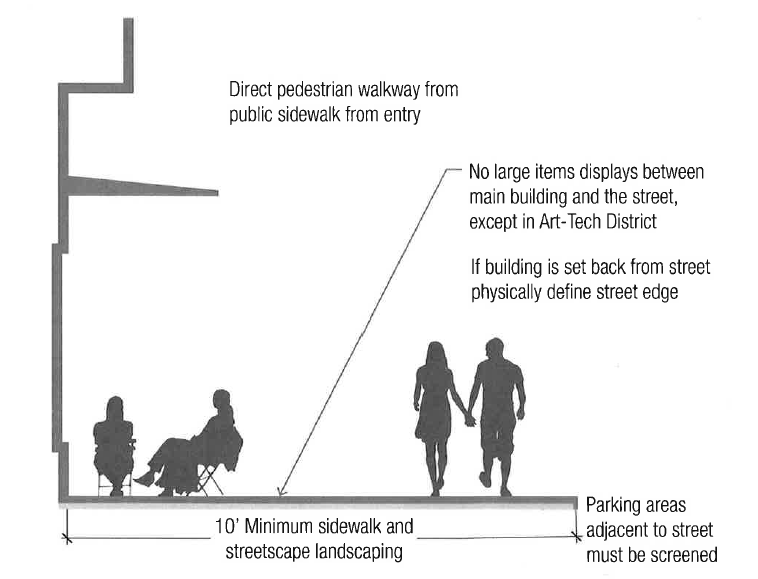
Figure 18.120.220.E.1: Requirements for development adjacent to Type C Streets (this diagram is for illustrative purposes only. See section 18.120.220.E for applicable requirements).
4. Sidewalk access. Primary building entries must face the street and provide direct access to the public sidewalk. Side entries must provide connectivity to the street by a pedestrian pathway and must be visible from the street.
Exceptions:
a. Properties fronting directly on the shoreline in the Waterfront Sub-District are not subject to this requirements of this subsection 4.
b. A departure from the requirements of this subsection 4 may be approved by the City if the applicant demonstrates to the City’s satisfaction that the design provides direct access to the street to the greatest extent possible and that alternative design features are equal or superior at achieving the design intent.
5. Display items. Large item display areas are prohibited between the main building and the street front (e.g. auto sales in the front yard area). Sidewalks may not be enclosed as space for retailing. Small, temporary displays, and outdoor seating are permitted if pedestrian sidewalk traffic is not impeded as set forth in the City’s Street use regulations.
Exceptions: Large item display areas are permitted between the main building and the street front in the Art/Tech Sub-District and properties north of Market Street.
F. REQUIREMENTS FOR WATERFRONT SUB-DISTRICT SITES FRONTING DIRECTLY ON THE SHORELINE
Buildings on sites fronting directly on the shoreline and not separated by a street as identified in Figure 18.120.140.A.1 must comply with the following requirements:
1. Shoreline facing façades. Building façades facing the shoreline must have a Pedestrian Oriented Façade as required by OMC 18.120.460.
2. Façades perpendicular to the shoreline. Building façades roughly perpendicular to the shoreline must comply with provisions for Type B Pedestrian Oriented Streets unless the applicant demonstrates to the City’s satisfaction that there is a compelling reason to waive this requirement due to unusual use or site constraints.
G. DOWNTOWN ENTRY STREET REQUIREMENTS
The following requirements apply to developments proposed for sites fronting designated Downtown Entry Streets (see Figure 18.120.140.A.1).
Exception: As an alternative to meeting the requirements of this subsection G, a building subject to this subsection is acceptable if it meets the requirements applicable to Type A Pedestrian Oriented Streets or Type B Pedestrian Oriented Streets.
1. Non-residential buildings. Commercial and mixed-use building façades facing Downtown Entry Streets located within 15 feet of the right-of-way must conform to the following:
a. The building must have at least 50% transparency (clear window area) on the ground floor façade between 2 feet and 8 feet above street level.
b. The building must have a front entrance visible from the public street and a direct walkway between the public sidewalk and the main entrance.
c. The building must have weather protection over the front entry as required by OMC 18.120.450.B.2. The weather protection must be at least 5 feet deep over at least 75% of all portions of the façade adjacent to a pedestrian path or walk.
d. The building may not have fences or screens (except for parking lot screening) taller than 4 feet or retaining walls higher than 30 inches within 15 feet of the right-of-way of the Downtown Entry Street, unless the applicant demonstrates to the City’s satisfaction that there are unusual site constraints and the departure is the minimum necessary to alleviate that constraint.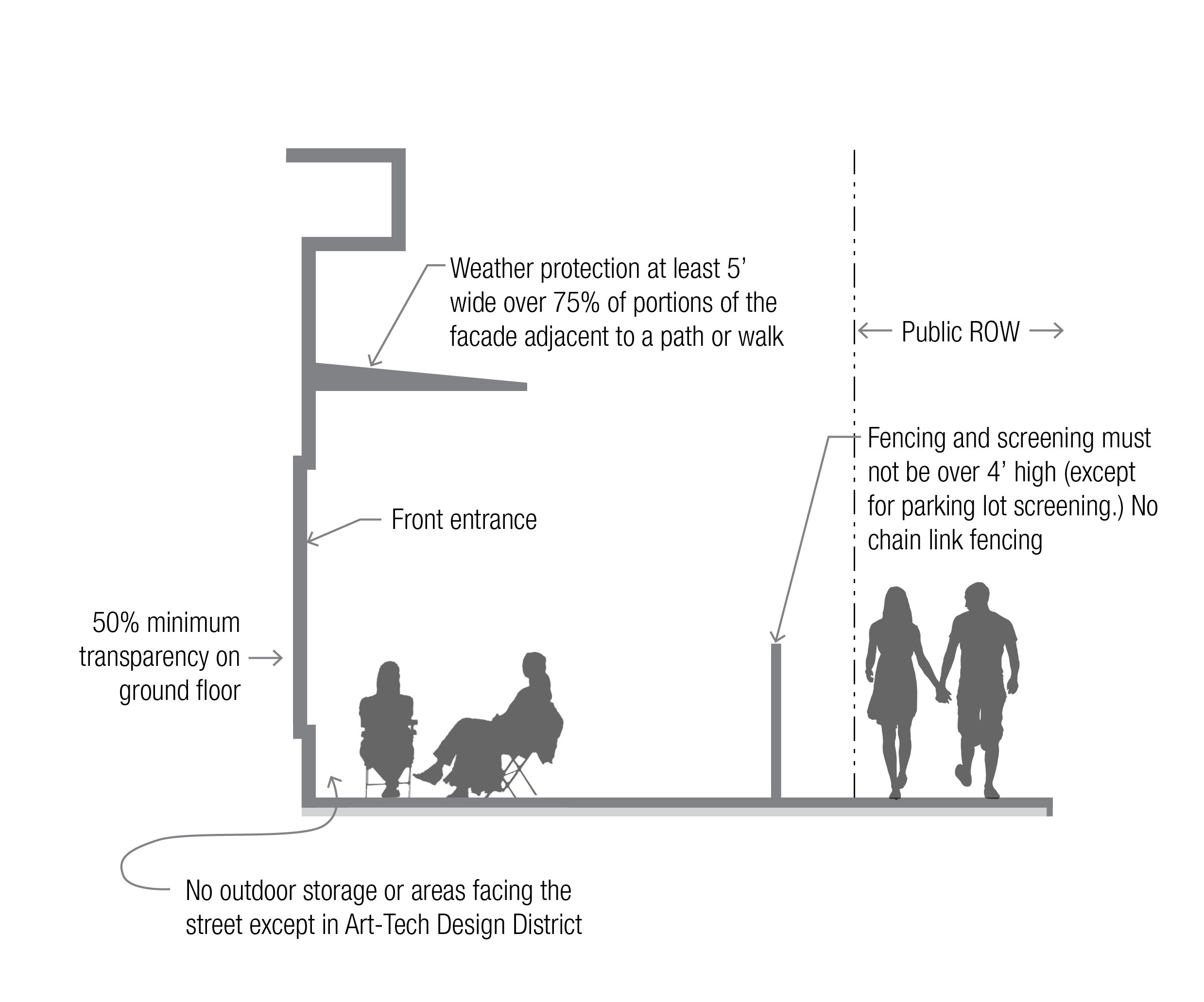
Figure 18.120.220.G.1: Requirements for non-residential buildings within 15 feet of an Entry Street right-of-way (this diagram is for illustrative purposes only. See OMC 18.120.220.G for applicable requirements).
2. Residential buildings. Residential buildings located within 30 feet of the right-of-way must conform to the following:
a. The building must have at least 15% transparency on the ground floor.
b. The building must have a covered porch, stoop, or patio for individual ground floor unit entries, or a clearly recognizable, covered shared entry pursuant to OMC 18.120.450.B.2.
c. The development may not have fences over 4 feet or retaining walls taller than 30 inches within 15 feet of the Downtown Entry Street right-of-way, unless the applicant demonstrates to the City’s satisfaction that there are unusual site constraints and the departure is the minimum necessary to alleviate that constraint. Fences and walls are permitted when used to for parking lot screening.
d. Garages and storage spaces are prohibited along the ground floor front façade facing the Downtown Entry Street.
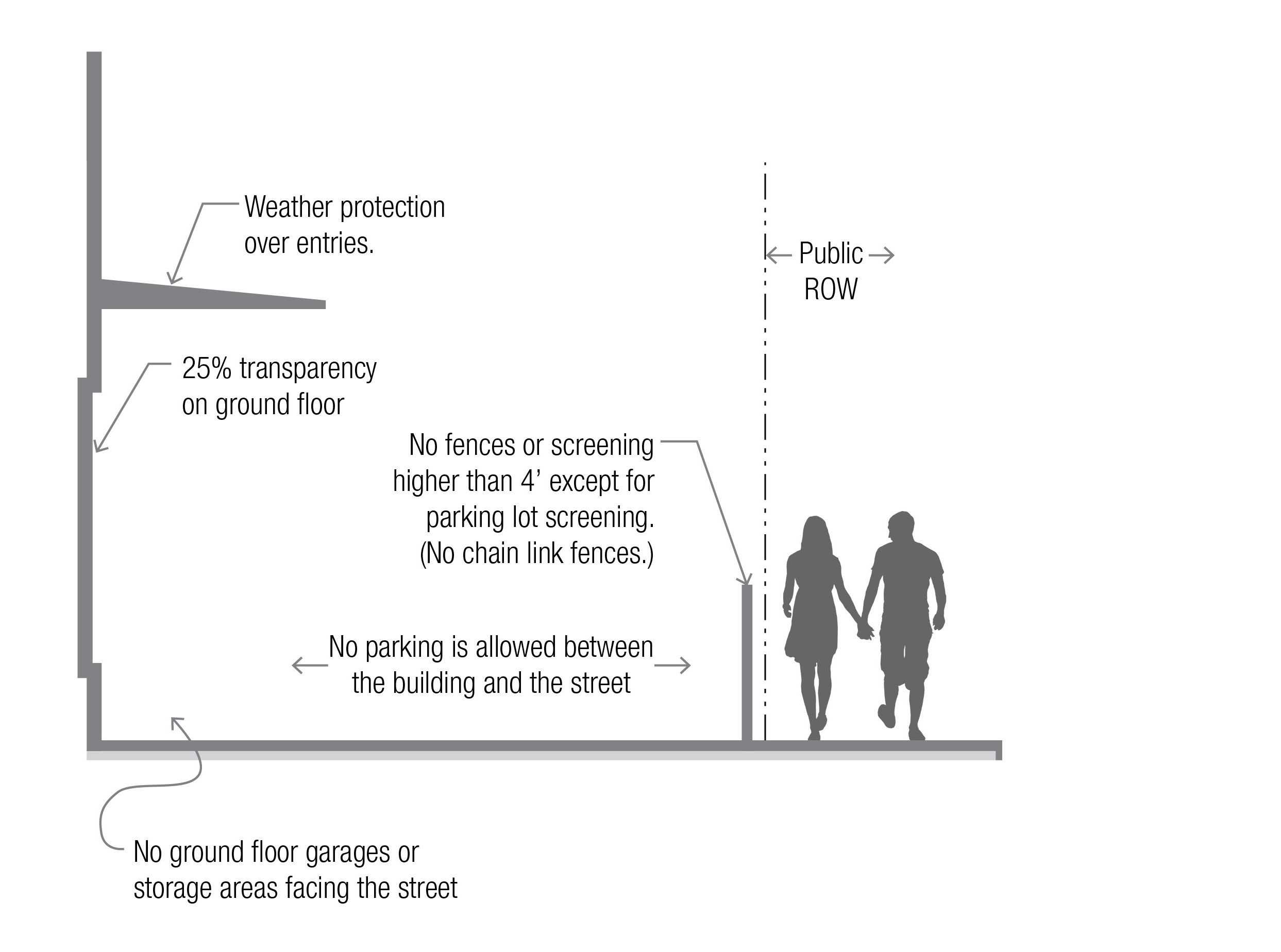
Figure 18.120.220.G.2: Requirements for residential buildings within 30 feet of an Entry Street right-of-way. This diagram is for illustrative purposes only. See OMC 18.120.220.G for applicable requirements.
3. Location of surface parking. Surface parking must be located behind, underneath, or to the side of the ground floor use facing the Downtown Entry Street; parking is prohibited between the building and the street.
Exceptions: If the parking is on the side of a building, or there is no building, parking may not exceed 65 feet of the street frontage. If the lot is wider than 130 feet, parking may occupy up to 50% of the width of the lot facing the street.
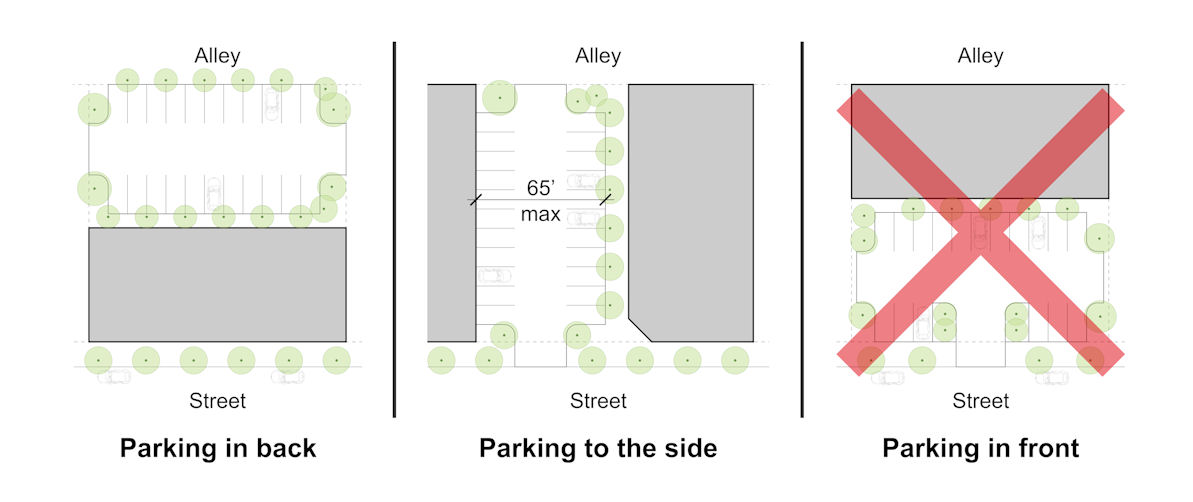
Figure 18.120.220.G.3: Requirements for surface parking location (This diagram is for illustrative purposes only. See OMC 18.120.220.G for applicable requirements).
4. Outdoor display areas. Large item display areas are prohibited between the main building and the street front. Sidewalks may not be enclosed as a space for retailing. Small, temporary displays and outdoor seating are permitted if pedestrian sidewalk traffic is not impeded as set forth in the City’s Street use regulations.
(Ord. 7244 §1 (Exh. A), 2020).
18.120.230 Pedestrian circulation
A. INTENT
The requirements of this section are intended to:
1. Provide convenient pedestrian circulation connecting all on-site activities to adjacent pedestrian routes and streets.
2. Improve the pedestrian environment by making it easier, safer, and more comfortable for people to walk between businesses and residences, to transit stops, and through parking areas.
3. Provide people access to transit services.
B. REQUIREMENTS
The following requirements apply to all new development or substantial redevelopment in all Downtown Design sub-districts:
1. Pathways. Developments with multiple residential ground-related units or entries must have pathways between dwelling units and the street.
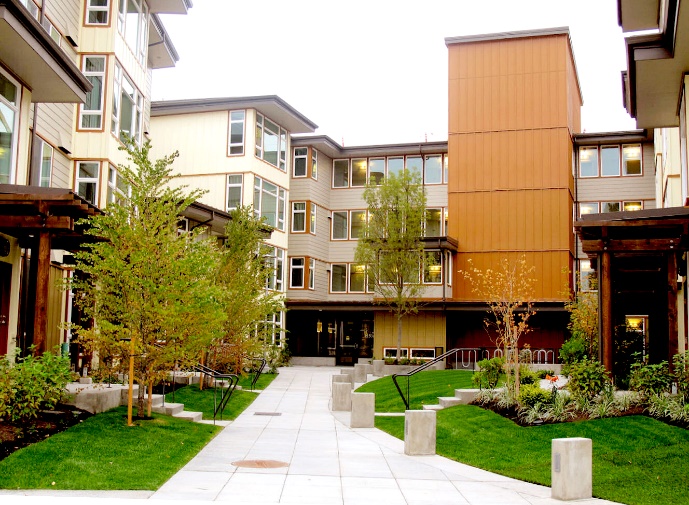
Figure 18.120.230.B.1: A good example of pedestrian connections between units. The pathway leads to the street. Note the positive security measures including bollard lighting, open landscaping with no hiding spaces, passive surveillance from windows, and sense of enclosure that implies ownership of the space.
2. The pedestrian circulation system must connect all main (primary) entrances on the site. For townhouses or other residential units fronting the street, the sidewalk may be used to meet this standard. Pedestrian connections to other areas of the site, such as parking areas, recreational areas, common outdoor areas, and any pedestrian amenities must be provided.
3. The pedestrian circulation system must have pedestrian walkways to adjacent public rights-of-way, trails, existing or planned bus stops, site features such as mailboxes, solid waste storage areas, and other shared facilities, and to adjacent properties where access exists or reasonable connections are possible.
4. Elevated walkways. External elevated walkways which provide pedestrian access to dwelling units located above the ground floor are prohibited, unless the applicant demonstrates to the City’s satisfaction that there is a compelling reason to the contrary and if the walkway(s):
a. Do not compromise the privacy of the individual units (no walkways adjacent to residential unit windows).
b. Do not compromise visual access from dwelling units into a courtyard.
Note: This section is not intended to prohibit skywalks, pedestrian bridges between buildings, or external stairways to access an upper story.
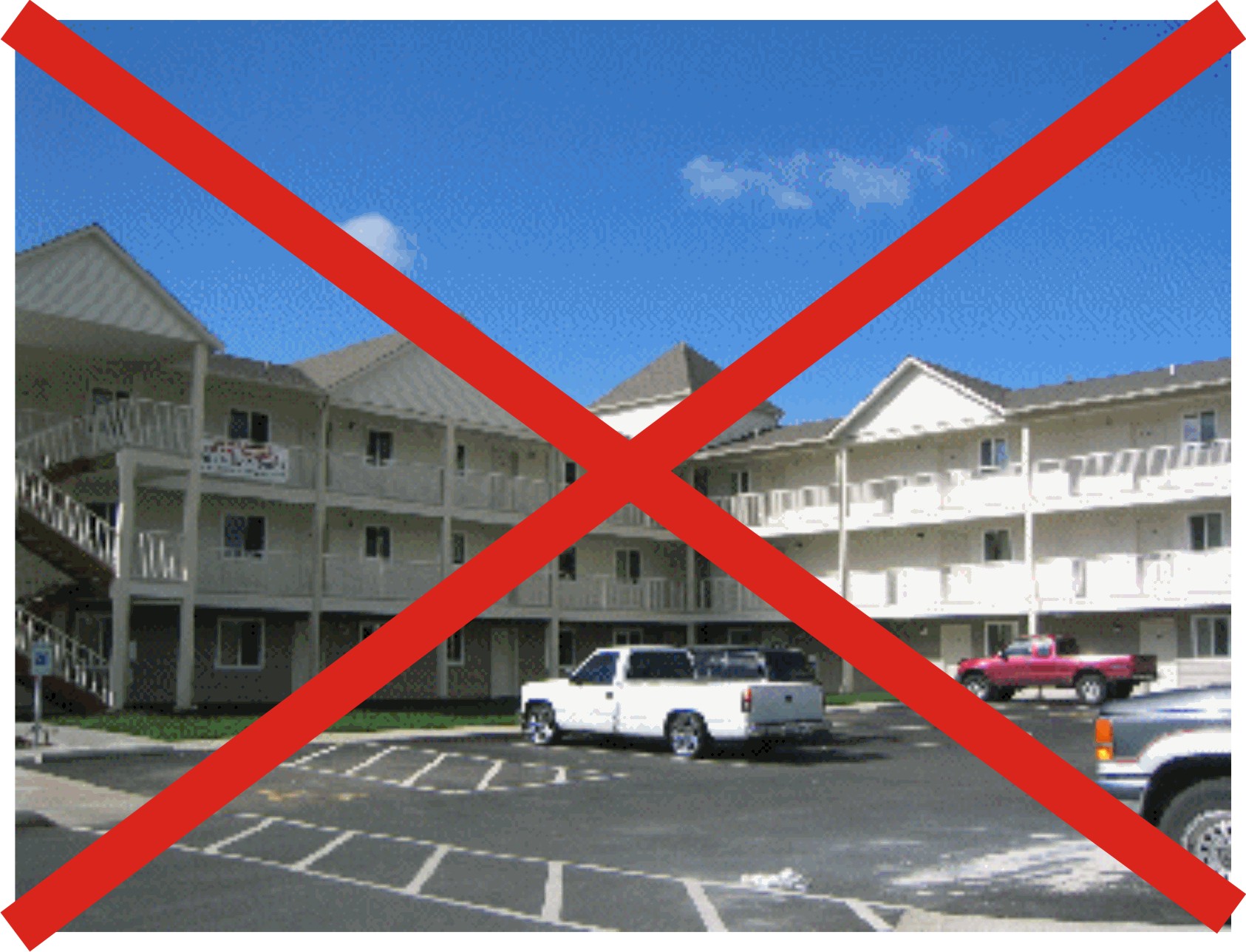
Figure 18.120.230.B.2: Elevated external walkways such as this are not allowed.
(Ord. 7244 §1 (Exh. A), 2020).
18.120.240 Buildings with ground-related residential units
DEFINITION. As used in this Chapter, “ground-related residential unit” means a residential unit such as a townhouse, ground floor apartment, cottage housing unit, etc. that faces a public right-of-way and has a ground floor at or near the street grade. A residential units that has pedestrian access directly from a street or pathway without passing through a lobby or common room is also a ground-related residential unit.
A. INTENT
The requirements of this section are intended to:
1. Provide for the privacy, comfort, and livability of the residential units.
2. Provide an attractive streetscape.
3. Allow for friendly communication between residents in an outdoor space and pedestrians on the sidewalk.
4. Provide an inviting entry into the units.
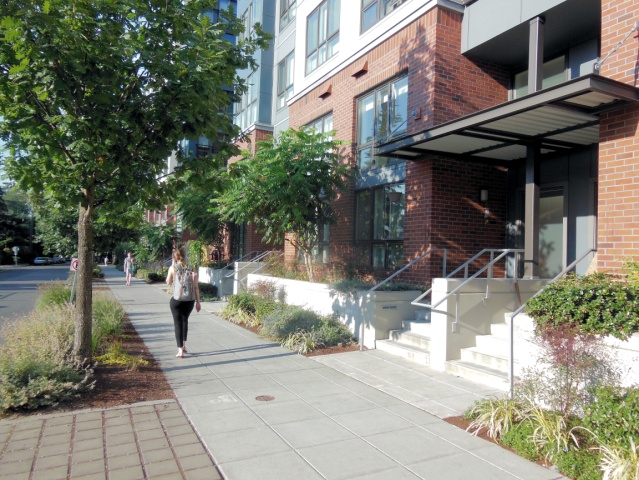
Figure 18.120.240.A.1: Desirable ground-related residential example with raised unit, landscaping, and small porches to enhance privacy while providing a welcoming streetscape. Units front on the street. Garages are off the alley.
B. REQUIREMENTS
The following requirements apply to all buildings in all Downtown Sub-Districts with ground-related residential units. Where the requirements of this section conflict with the requirements of OMC 18.120.220.C, .D, .E or .F (guidelines for designated street types), the guidelines of this section apply unless the City determines otherwise. Note: Ground–related residential units are not allowed on Type A Pedestrian Oriented Streets or in the Waterfront Sub-District.
1. Street access. Each ground-related residential unit fronting a street must have its own individual entry accessible from the street.
2. Setback or elevate units for privacy. Ground-related residential units must have all of the following elements that provide for internal privacy for people living in each such unit:
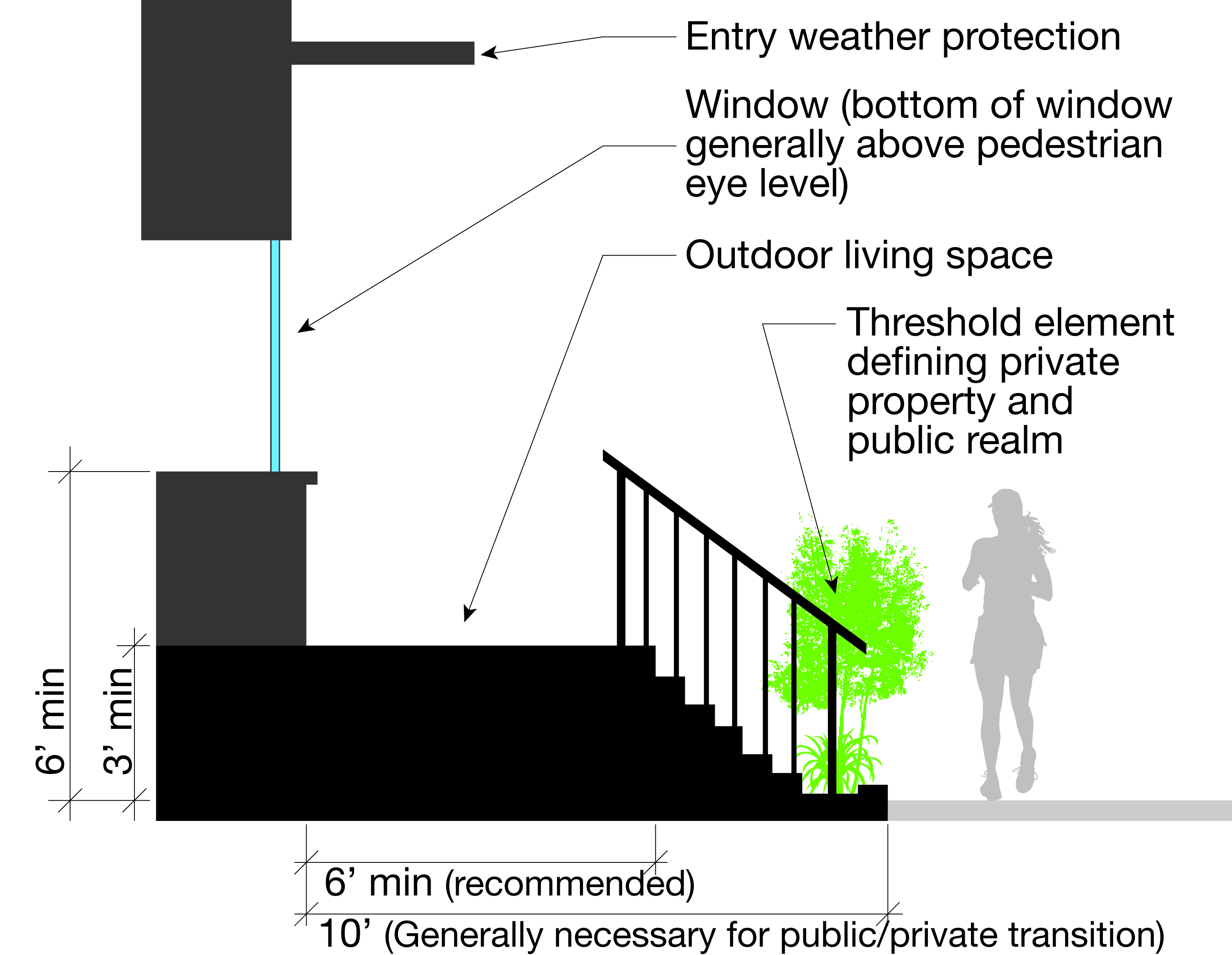
Figure 18.120.240.B.1: Dimensional relationships to maintain privacy and provide a successful transition between public and private realms.
a. The unit must be set back at least 10 feet from a public right-of-way or elevated at least 3 feet above the sidewalk grade (or, preferably, both). If the building front is less than 10 feet from the public right-of-way, the bottom of the ground floor windows facing the street must be at least 6 feet above sidewalk grade.
b. The unit must have a physical “threshold” feature such as a hedge, retaining wall, rockery, stair, gate, railing, or a combination of such elements on private property that defines and bridges the boundary between public right-of-way and private entry, porch, yard, or patio. Thresholds may screen but must not block views to and from the street. Retaining walls may not be taller than 30 inches. If additional height is required to accommodate grade conditions, then terraces edged by stepped retaining walls, each no more than 30 inches high, are permitted. Fences and screens may not be higher than 4 feet above the sidewalk.
c. The unit must have an outdoor space at least 6 feet in depth and 6 feet wide (36 square feet minimum) in the front yard, such as a porch, patio, deck, or similar space. Where feasible, this space must be at the same level as the interior of the unit. This space may include landscaping areas and may count as part of the entry space required below. The City may allow an exception for an outdoor space with other dimensions if the space meets the intent of providing a transition between the street and the private space. If there is an entrance facing the street, the front door and entry area must be designed to enhance privacy. Windows and transparent doors must be located and sized so that pedestrians on the sidewalk cannot see directly into the lower half of the ground floor living space of the unit.
d. The unit must have a covered area, porch, or protected entry space, or other architectural weather protection at least 4 feet deep that provides cover for a person entering the unit and a transitional space between outside and inside the unit.
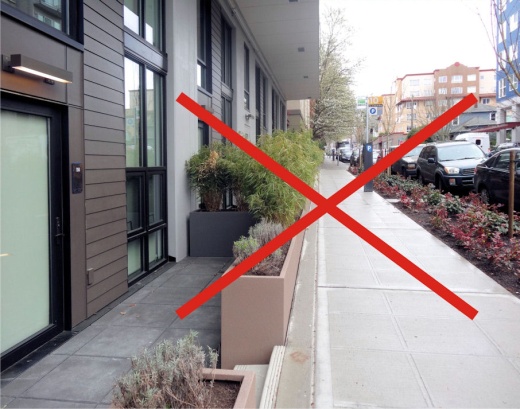
Figure 18.120.240.B.2: Ground floor residential units often lack privacy and livability of outdoor spaces is limited. Locating the ground floor at grade or below the sidewalk with insufficient setback results in an uninviting space even with the planter. This should be avoided.
e. Garage configuration. Where the primary pedestrian access to the unit is on the same façade as vehicular access, the width of the driveway must be no more than 12 feet. Entry into the garage must be set back at least 5 feet from the front of the street-facing building wall. All interior vehicle storage areas (garages) must have a door. Where there is storage space for more than one vehicle, a single-width “tandem” parking configuration is required to minimize the impact of garage doors on the streetscapes.
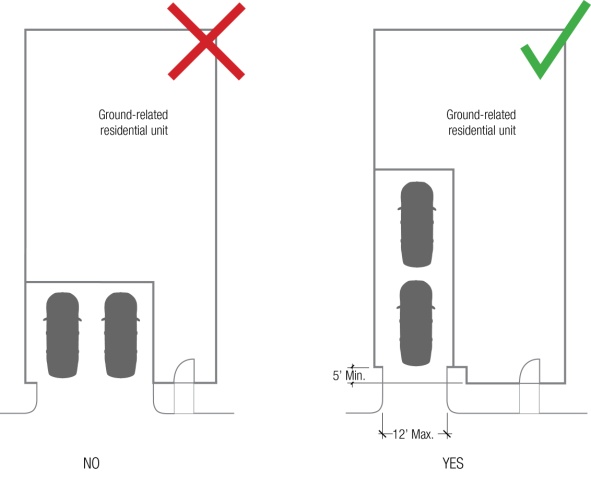
Figure 18.120.240.B.3: Driveways serving ground-related residential units must be no more than 12 feet wide. Tandem parking is allowed. This diagram is for illustrative purposes only. See OMC 18.120.240 for applicable requirements.
(Ord. 7244 §1 (Exh. A), 2020).
18.120.250 Multi-building and multi-block sites
A. INTENT
The requirements of this section are intended to:
1. Create integrated development plans and phasing strategies.
2. Reduce negative impacts to adjacent properties.
3. Enhance pedestrian and vehicular circulation while maintaining the City’s street connectivity engineering standards.
4. Provide usable open space.
5. Create focal points for pedestrian activity for developments.
6. Enhance the visual character of the community.
B. REQUIREMENTS
The following requirements apply multi-building and multi-block developments in any Downtown Sub-District;
1. Unified site plans. A development that includes two or more buildings must be based on a unified site plan that meets the following criteria:
a. The site plan must incorporate pedestrian pathways or open space with landscaping as a unifying element.
b. The site plan must provide for safe, efficient internal vehicular circulation that does not isolate the buildings.

Figure 18.120.250.B.1: Two examples of unified site plans illustrating the provisions of Guideline 18.120.250.B.1: Note the incorporation of a public passageway in the left example and the use of open space as an organizing feature in the right example.
c. To achieve direct, safe, and comfortable pedestrian connections, the site plan must provide for building entrances that are not focused around a central parking area, but instead are connected by a pathway system or open space(s), or both, unless the applicant demonstrates to the City’s satisfaction that this is infeasible or undesirable and the applicant demonstrates to the City’s satisfaction that the alternative design is equal to or better at achieving the design intent.
d. The site plan may provide for a major public entry serving several spaces rather than providing a separate storefront entry for each space. If the development employs the combined-entry option, then the entry must be prominent with special features such as recessed entries, transparency, prominent canopies, landscaping, lighting, and expression of the entry in the façade’s upper stories. See Figure 18.120.250.B.2 below.
e. The site plan must provide for publicly accessible pedestrian connections between public streets where the City determines that such connections would not adversely impact the development.
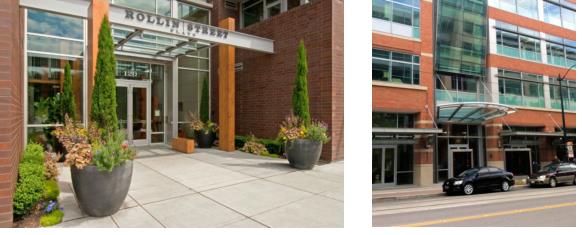
Figure 18.120.250.B.2: Prominent entries meeting the intent of Guideline 18.120.250.B. Note the recessed entries, transparency, prominent canopies, landscaping, lighting, and expression of the entry in the façade’s upper stories.
(Ord. 7244 §1 (Exh. A), 2020).
18.120.260 Solid waste facilities, service areas, and mechanical equipment
A. INTENT
The requirements of this section are intended to:
1. Minimize adverse visual, olfactory, and noise impacts of mechanical equipment, utility cabinets, and service areas at ground and roof levels.
2. Provide access for service vehicles to remove waste and maintain service elements.
3. Provide adequate, durable, well-maintained, and accessible service and equipment areas.
4. Protect residential uses and adjacent properties from impacts due to location and utilization of service areas.
B. REQUIREMENTS
The following requirements apply developments in all Downtown Sub-Districts:
1. Location and screening. In order to avoid negative visual, auditory, olfactory, and physical impacts on the streets, sidewalks, or residential environment, site service areas and mechanical equipment areas must be sited as follows:
a. Service areas and mechanical equipment areas must be located to have the least negative visual, auditory, olfactory, and physical impact on the street and sidewalk environment and adjacent residential properties. Service areas must be sited to be accessible from an alley, if available.
b. Screening: Service areas must be located so that they are, to the greatest extent possible, not visible from any street, sidewalk, or adjacent property. If a service area or equipment is located so that it is visible from a street, sidewalk, or adjacent property, it must be fully screened with a structural enclosure constructed of masonry, heavy-gauge metal, or decay-resistant composite wood. The City may approve other materials for the structural enclosure if the City deems them to be of similar quality and consistent with the approved building materials. The walls of the enclosure must provide full screening from the street, sidewalk, or adjacent properties. Gates must be made of a heavy-gauge, site-obscuring material. The materials, colors, and design of the enclosure must be compatible with those of the principal structure. Art work such as paint schemes or coverings may be used to help blend equipment into the background. Gates must be kept closed except at time of servicing.
Exceptions:
∙ Development in the Art/Tech Sub-District need not meet the location and screening requirements of subsections B 1 a and b, above (Note: Screening requirements of OMC 18.36 and 18.40 apply).
∙ While exterior service areas must be screened, screening requirements may be reduced by the City at access points for service areas inside buildings.
c. Service areas used by residents must be located and configured to avoid entrapment areas and other conditions where personal security is a concern. The City may require pedestrian-scaled lighting or other measures to enhance security.
d. In the Residential Neighborhood Sub-District, exterior loading areas for commercial uses must not be located within 20 feet of a residentially zoned property, unless the applicant demonstrates to the City’s satisfaction that there are unusual site constraints that would prohibit adequate service vehicle access. In such cases, the loading area and vehicle access drive must be separated from the residential lot by a masonry wall at least 8 feet high.
e. Ground-mounted mechanical equipment, utility meters, electrical conduit, and other service and utilities apparatus must be located and screened to minimize visual and noise impacts to streets, sidewalks, and adjacent properties.
f. Roof-mounted mechanical equipment must be located and screened on all sides so the equipment is not visible from the ground level of any street, sidewalk, or adjacent property within 20 feet of the structure. The color of roof mounted equipment must match with the exposed color of the roof to minimize visual impacts when equipment is visible from higher elevations nearby.
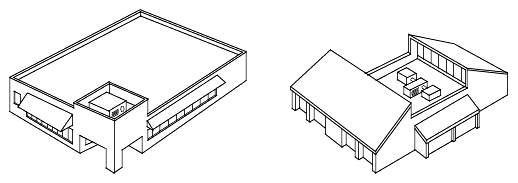
Figure 18.120.260.B.1: Examples of how to screen roof-mounted mechanical equipment.
g. Utility meters, electrical conduit, and other service and utilities apparatus must be located and screened so they are not visible from any street, sidewalk, or adjacent property.
h. All service connections and on-site utilities, including wires and pipes, must be located underground unless the applicant demonstrates to the City’s satisfaction that there is a compelling public purpose to the contrary. Utility meters may be attached to buildings and screened. The applicant is required to coordinate with the local electric utility provider to locate electrical service facilities in the least obtrusive way.
i. The locations of all mechanical equipment and utility vaults must be shown on both site plan and landscape plans no later than the conceptual design review stage of the permitting process.
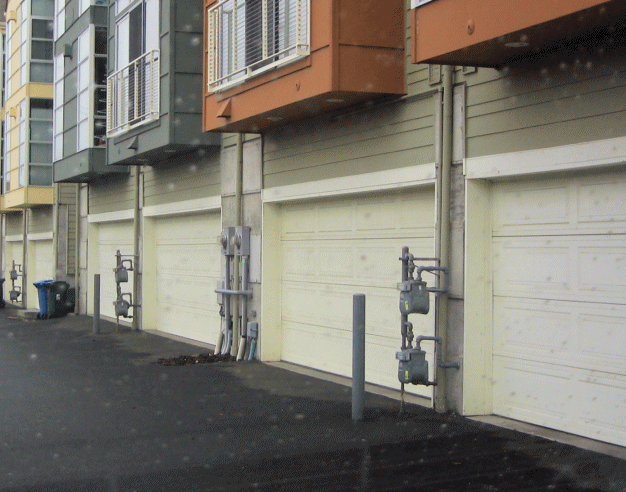
Figure 18.120.260.B.2: Place utility meters in less visible locations. Note that this example is acceptable on a service alley but not near a street or residential walkway.
C. REQUIREMENTS FOR SOLID WASTE STORAGE AND REMOVAL FACILITIES
The location and configuration of solid waste storage must conform to the Engineering Department Development Standards (EDDS).
(Ord. 7244 §1 (Exh. A), 2020).
18.120.270 Multifamily open space
A. INTENT
The requirements of this section are intended to:
1. Promote the health and well-being of downtown residents.
2. Create usable space that is suitable for leisure or recreational activities for residents.
3. Create open space that contributes to Downtown’s residential setting.
4. Provide open spaces for new developments with five or more residential units.
B. REQUIREMENTS
The following requirements apply to multi-family residential buildings in any Downtown Sub-District:
1. Amount of required residential open space. All new multifamily buildings with five or more residential units must have on-site open space of at least 100 square feet per dwelling unit or 10% of the residential unit floor area, excluding hallways and common areas, that provides functional leisure or recreational activities. The lesser amount of the two calculations is acceptable. Required setback areas may count as part of the required open space requirement if the applicant demonstrates to the City’s satisfaction that they meet the requirements in OMC 18.120.270.B.
Exceptions: This subsection does not apply to remodeling of existing residential units or additions to existing residential structures.
a. Common outdoor open space. “Common outdoor open space” includes landscaped courtyards or decks, entrance plazas, gardens with pathways, children’s play areas, pools, water features, accessible areas used for storm water retention, or other multipurpose recreational or green spaces. The following special requirements apply to common outdoor open spaces:
i. Only spaces with a minimum dimension of at least 15 feet in depth qualify as common outdoor open space. This is to ensure that the area can provide space for functional leisure or recreational activity.
Exception: The City may exempt special purpose recreation facilities such as bocce or tetherball courts, play areas, and vegetable gardens from this dimensional requirement provided the space is appropriate and configured with appurtenances/equipment for the use.
ii. Common outdoor open space must have paths or walkable lawns, landscaping, seating, lighting, play structures, sports courts, raised garden beds, or other pedestrian amenities to make the space more functional and enjoyable for a range of uses.
iii. Common outdoor open space must be oriented to receive sunlight by facing east, west, or preferably south, when possible.
iv. Landscaped internal pathways may be counted as common outdoor open space if they meet the other criteria within this subsection.
v. Common outdoor open space must be separated from ground level windows, streets, service areas, and parking lots with landscaping, low-level fencing, or other treatments as approved by the City that enhance safety and privacy for both the common outdoor open space and dwelling units.
vi. Common outdoor open space must be accessible to all building residents and must be oriented to encourage activity by building residents.
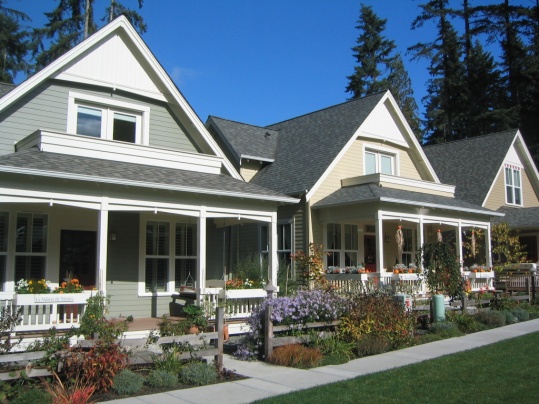
Figure 18.120.270.B.1: The privacy and identity of these ground-related residences are achieved by the fencing, landscaping, and slight elevation of the porches.

Figure 18.120.270.B.2: Good examples of common open space including a pedestrian corridor, street level courtyards, and a children’s play area.
b. Balconies. To qualify as open space, balconies or patios must be at least 35 square feet, with no horizontal dimension less than 5 feet.
c. Rooftop decks and terraces. Decks and terraces accessible to all building residents may be used to meet open space requirements, if the following conditions are met for the space:
i. The deck or terrace must be accessible to all building residents.
ii. The deck or terrace must provide amenities such as seating areas, landscaping, or other features that encourage use.
iii. The deck or terrace must feature surfacing that enables residents to walk on and use the open space.
iv. The deck or terrace must incorporate features that provide for the safety of residents, such as enclosures and appropriate lighting levels.
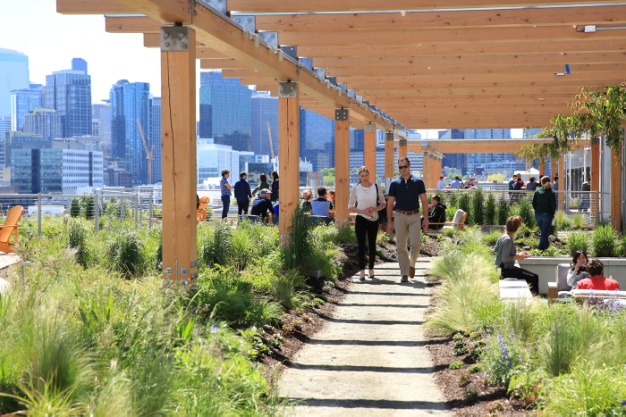
Figure 18.120.270.B.3: An attractive roof deck.
d. On-site indoor recreation areas such as exercise studios, lounges, and play areas may be used to meet the required open space if the following conditions are met:
i. The space must be accessible from all dwelling units.
ii. The space must be designed for and include equipment for a recreational use (e.g., exercise or group functions).
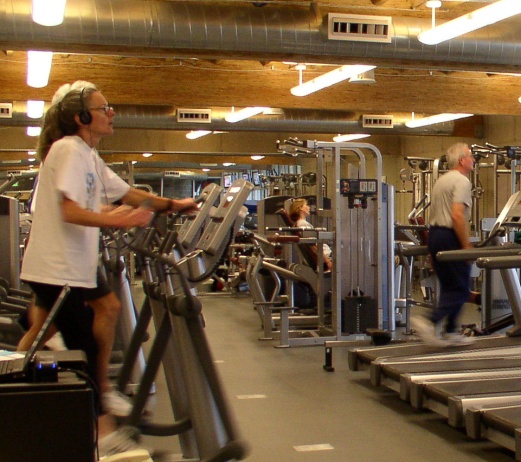
Figure 18.120.270.B.4: An indoor recreation space. Other less intensive spaces may also meet common space requirements provided they are primarily for leisure, social, physical, or recreational activities.
(Ord. 7244 §1 (Exh. A), 2020).
18.120.280 Security
A. INTENT
Crime Prevention through Environmental Design (CPTED) principles address elements of the built environment ranging from small-scale elements such as the strategic use of shrubbery and other vegetation to larger scale considerations such as the configuration of buildings, open spaces, and human experience of an entire urban neighborhood. This section incorporates CPTED principles with the intent to:
1. Increase personal safety and property security.
2. Assist law enforcement within the Downtown.
3. Provide an indication that unlawful and uncivil behavior is not permitted.
ii. REQUIREMENTS
The following requirements apply to all developments and substantial re-developments in all Downtown Sub-Districts:
1. Entrapment areas. The development design must ensure that the development does not include “entrapment areas,” where a person could become trapped with no exit route. The design must provide for two or more means of egress from all outdoor spaces or a wide and visible exit to allow a person to avoid a threat. The design must ensure entrapment conditions are minimized in the design of rooftop decks, parking areas, waste recycling stations, and other shared areas.
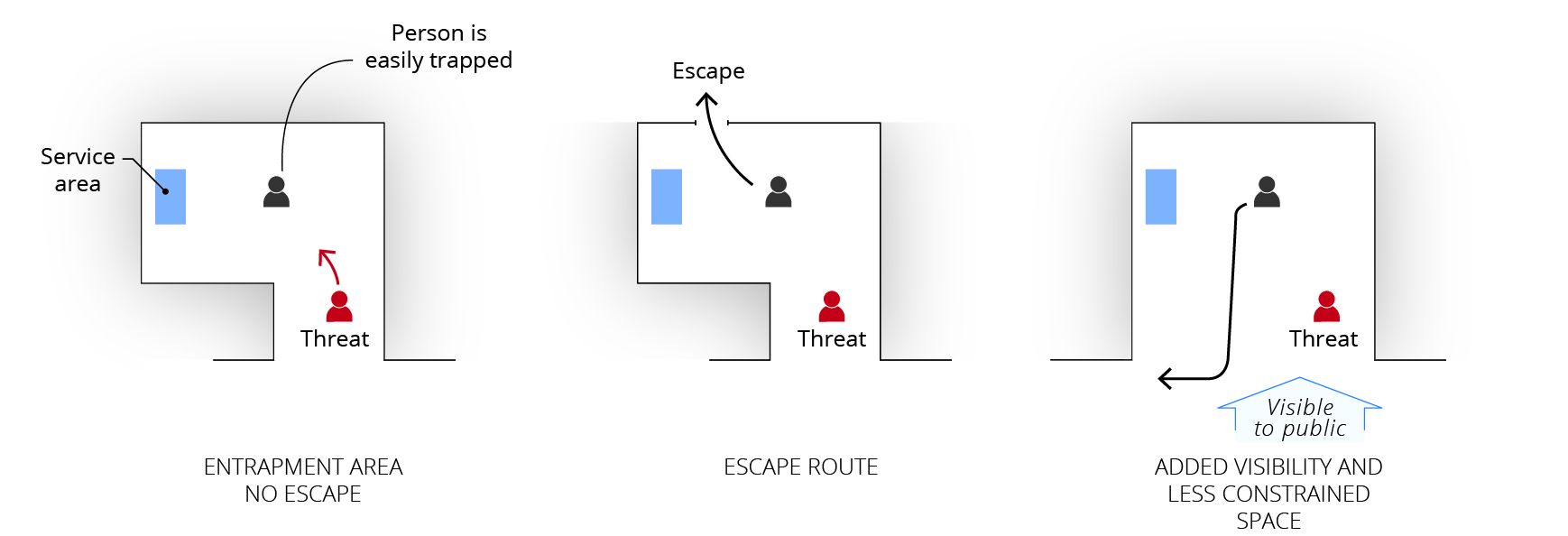
Figure 18.120.280.B.1: Measures to avoid entrapment areas.
2. Visibility. The development design must ensure that all physically accessible areas are well lit or visible from a publicly owned space or public right-of-way. The design must have lighting that complies with OMC 18.120.360 Site Lighting.
3. Visual obstruction. Vegetation and fences must be sized to allow visibility into open space, pathways, and building entries. Structures, vegetation, opaque fences, or other objects (e.g. a storage enclosure) that blocks visibility into a space or provides places to hide are prohibited.
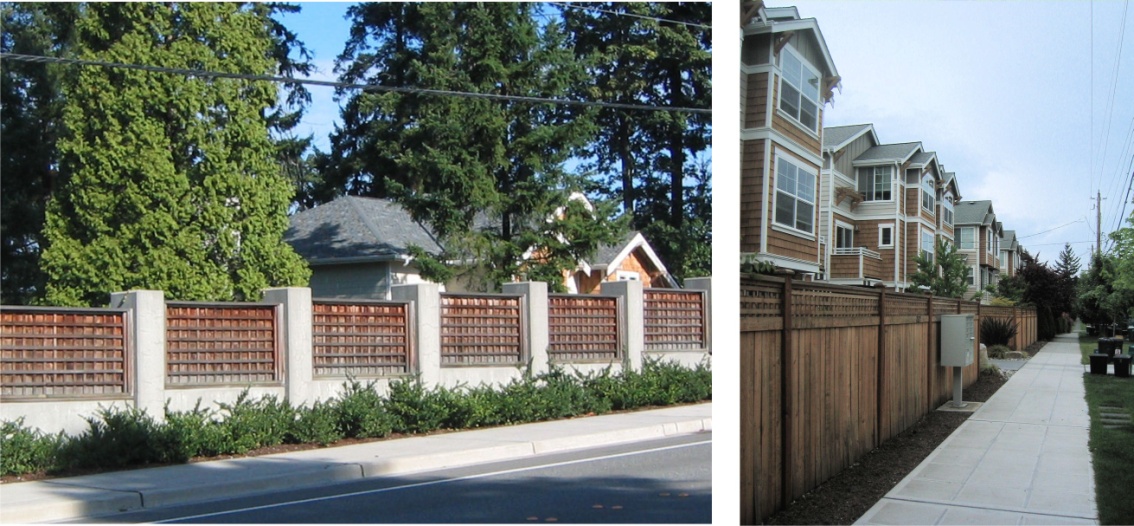
Figure 18.120.280.B.2: Fences that prevent visibility from public right-of-way and open spaces can decrease security.
4. Motorists’ view. Screening and landscaping must not block motorists’ views of pedestrians crossing streets, driveways, and vehicular circulation areas. Where visibility is necessary to avoid creating an unsecure area and to reduce the potential for pedestrian/vehicle collisions, vegetation that will not obstruct views between 3' and 8' above the ground is required. (See Figure 18.120.020.H.2.c.)
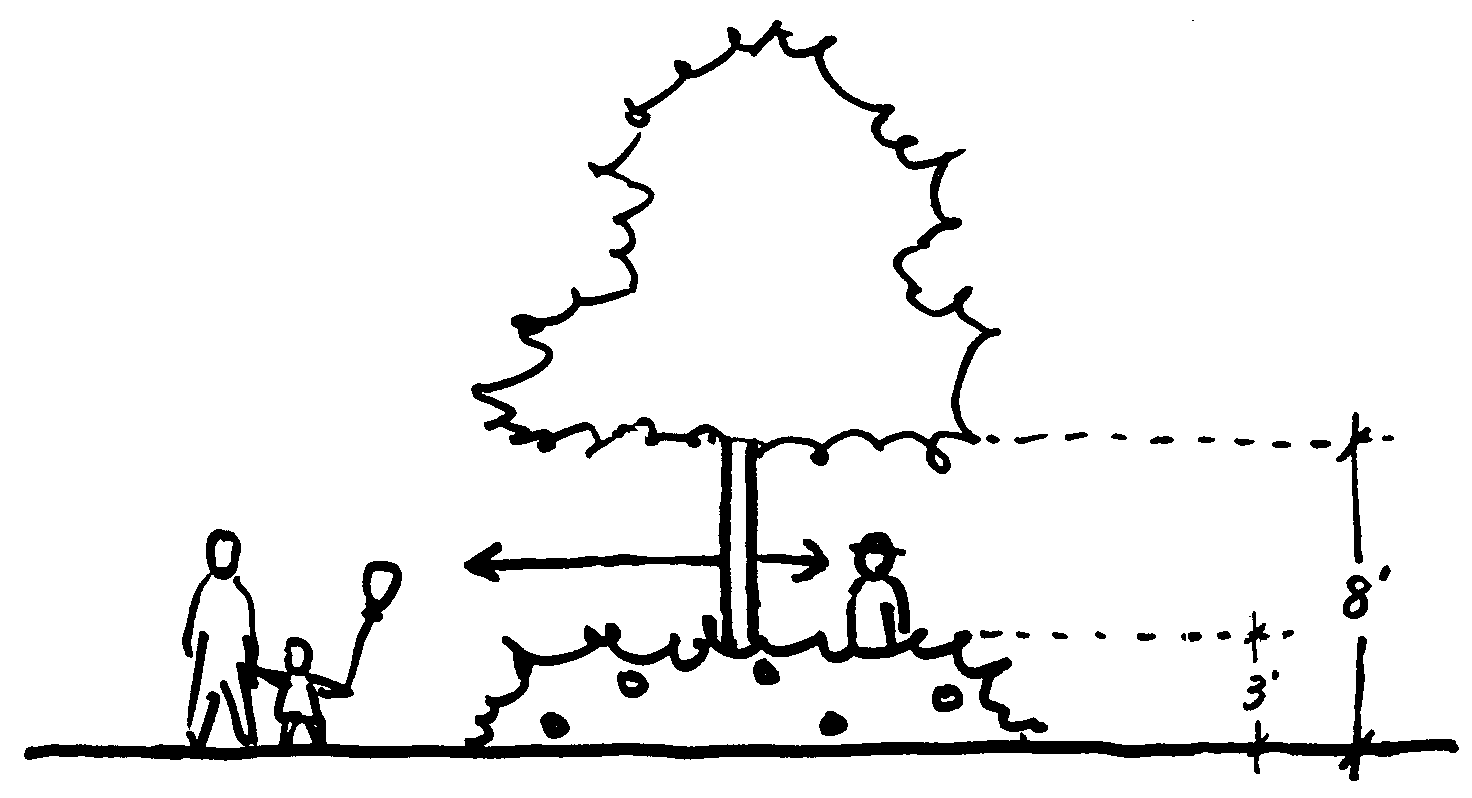
Figure 18.120.280.B.3: Keep landscaping open between 3 feet and 8 feet above grade where there is the need for visibility.
5. Passive surveillance. Structures and site elements must be designed to provide for “passive surveillance,” the ability of people occupying buildings and public spaces to view all parts of accessible spaces.
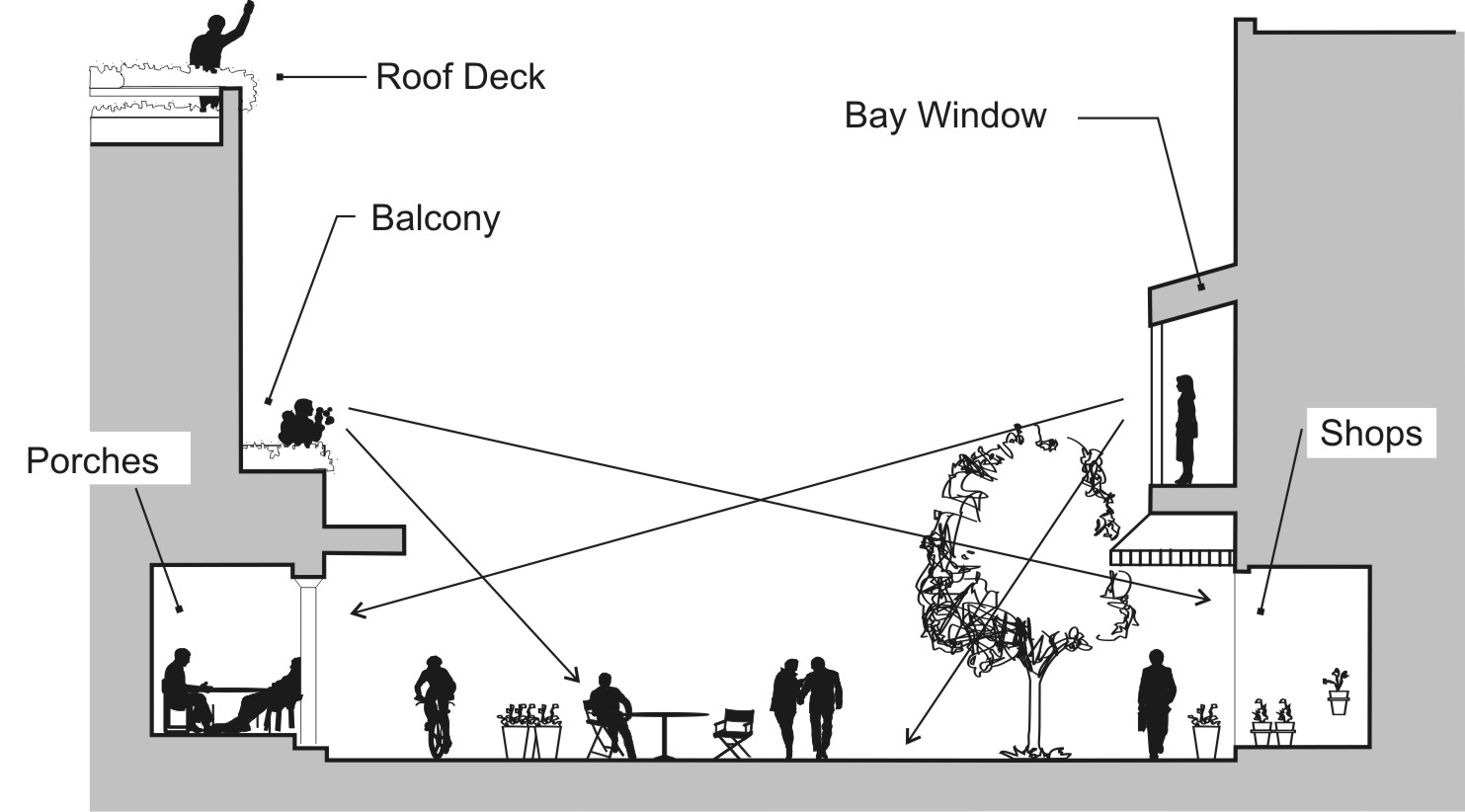
Figure 18.120.280.B.4: Passive surveillance, or the ability of people in buildings or traveling along roadways to see outdoor spaces, increases security.
6. Access control. The development design must have appropriate natural access control. The design must employ features, as necessary, that delineate where the general public should not enter without an invitation. For example, a low fence or hedge can indicate that people should not enter a yard or open space except through a gate or opening. Access control should not limit visibility or passive surveillance.
7. Territorial definition. The development design must clearly indicate through site planning and design measures which parts of the site are and are not open to the public. See Figure 18.120.280.B.5 below for an example of this technique.
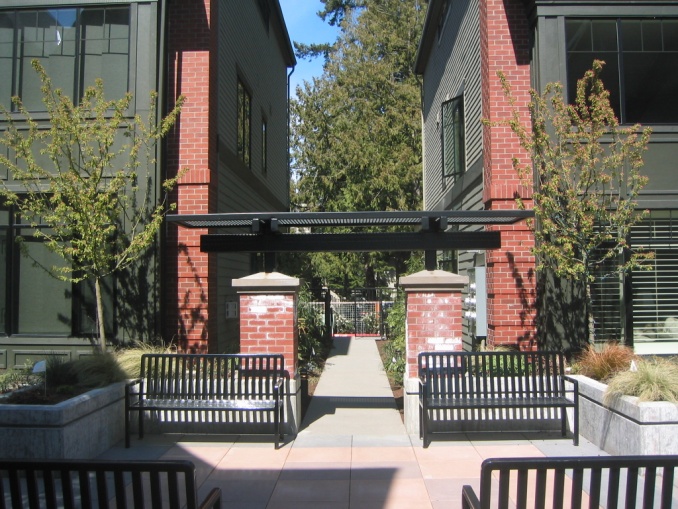
Figure 18.120.280.B.5: Note the use of both territorial definition in the foreground seating area and access control in the gate towards the rear of this picture. The gate, even if unlocked, indicates that the courtyard in the background is private while the benches indicate that people are welcome to use the courtyard in the foreground.
1. Maintainability. The development design must incorporate easily maintained and vandal-resistant elements. See also OMC 18.120.450.B.2, which addresses durable building materials.
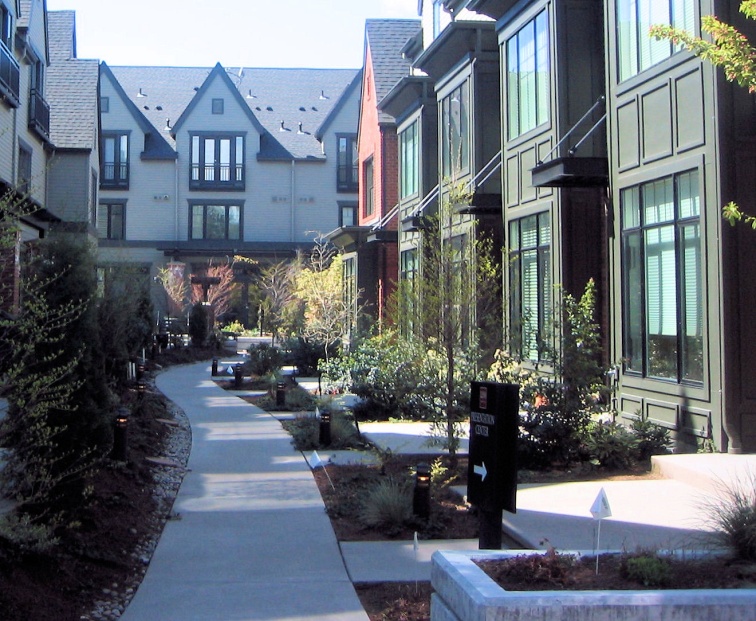
Figure 18.120.280.B.6: This residential complex incorporates passive surveillance, territorial definition, and good visibility and lighting to provide a more secure pathway and open space.
(Ord. 7244 §1 (Exh. A), 2020).
18.120.300 Site elements and design
Section contents:
18.120.310 Introduction.
18.120.320 Parking areas.
18.120.330 Pedestrian oriented open space.
18.120.340 Landscaping.
18.120.350 Walkways and circulation elements.
18.120.360 Lighting.
18.120.370 Other site features.
18.120.310 Introduction
This subchapter addresses the size and design of site elements such as landscaping, parking areas, walkways, open spaces, site furniture, and fences. Whereas OMC 18.120.200 (Site Planning) addresses the location and configuration of such elements within the framework of site planning, this chapter specifies requirements for their physical characteristics. This subchapter does not apply to site features in the public right-of-way.
(Ord. 7244 §1 (Exh. A), 2020).
18.120.320 Parking areas
A. INTENT
The requirements of this section are intended to:
1. Reduce the visibility of parked vehicles from Downtown streets, public spaces, and adjacent properties.
2. Increase pedestrian access.
B. REQUIREMENTS
The following requirements apply to all new development or substantial redevelopment in all Downtown Design Sub-Districts. Note: The requirements in this section are in addition to the requirements of OMC18.36.180 (parking lot landscaping and screening) and 18.38.220 (parking design standards). See also OMC 18.120.220 for parking lot location requirements on designated streets in the Downtown.
1. Walkways through parking areas. Developments must have specially marked or paved walkways through parking areas. Generally, walkways must be provided at least every four rows or at least every 180 feet, whichever will yield more walkways. Walkways must be aligned to connect with major building entries or other sidewalks, walkways, and destinations. Walkway must be a minimum of 4 feet wide (unobstructed clear width excluding vehicle overhang).
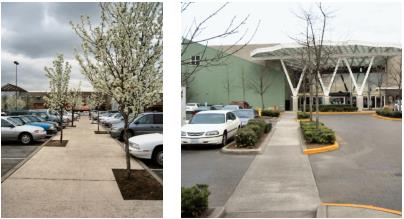
Figure 18.120.320.B.1: Parking area walkway examples. Note that clear walkway width must account for vehicle overhang.
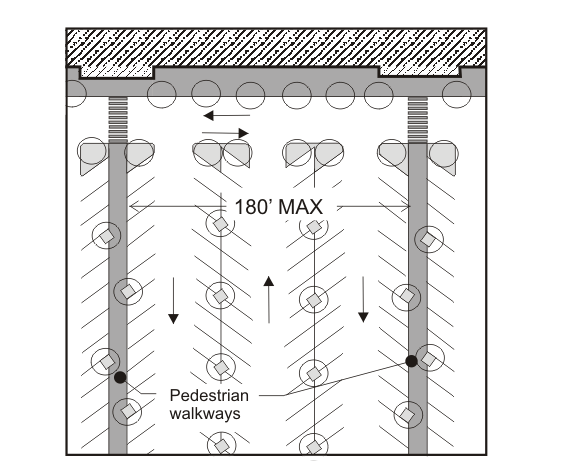
Figure 18.120.320.B.2: Example parking area walkway configuration.
2. Bumper overhang next to walkways and landscaping. Where angle or perpendicular parking abuts a landscape strip or walkway, a 2 feet-wide paved area must be provided to prevent a vehicle’s bumper overhang from infringing on the walkway or landscaping. Alternatively, wheel stops may be utilized to prevent a vehicle’s bumper overhang from infringing on the walkway or landscaping, for example in locations where a walkway is at the same grade as the adjacent parking stalls.
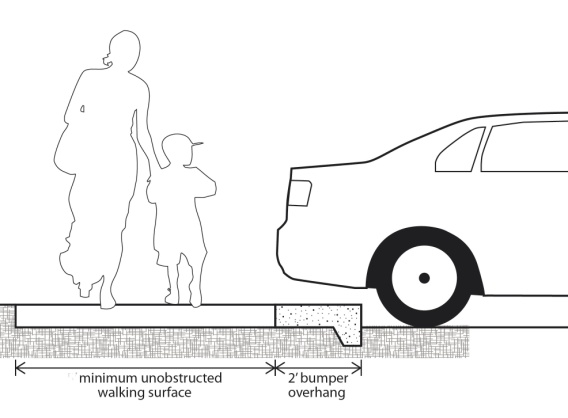
Figure 18.120.320.B.3: Concrete extension to accommodate bumper overhang.
(Ord. 7244 §1 (Exh. A), 2020).
18.120.330 Pedestrian oriented open space
A. INTENT
The requirements of this section are intended to:
1. Ensure that accessible open spaces, whether public or private, are safe, comfortable, usable, and attractive.
2. Provide spaces for informal activities such as picnicking, relaxing, meeting friends, and as appropriate, children’s play.
3. Establish the minimum standards for how pedestrian oriented open space will be developed when it is proposed to satisfy provisions of OMC 18.120.220 C, D, and E or when it is proposed as part of a new development or redevelopment project.
B. REQUIREMENTS
The following requirements apply to all new development or substantial redevelopment in all Downtown Design Sub-Districts:
1. Pedestrian oriented space elements. Providing “Pedestrian Oriented Open Space” is an option for satisfying some requirements in OMC sections 18.120.220.C, D, and E. (Allows buildings on Type A Pedestrian Oriented Streets, Type B Pedestrian Oriented Streets, and Type C streets to be set back from a public right-of-way if the setback area meets pedestrian oriented open space standards). When Pedestrian Oriented Open Space is used to satisfy these requirements, it must meet the following standards:
a. A Pedestrian Oriented Open Space must meet the following requirements:
i. Location: A Pedestrian Oriented Open Space must be located adjacent to areas with significant pedestrian traffic to provide interest and security, such as adjacent to, or visible from, a building entry. Such areas must provide visual and pedestrian access into the site from a street, private access road, or non-vehicular courtyard.
ii. Surface: A Pedestrian Oriented Open Space must have paved walking surfaces of either concrete, walkable crushed rock, or unit paving as approved by the City.
iii. Seating: A Pedestrian Oriented Open Space must have at least 2 feet of seating area (a bench or ledge at least 16 inches deep and appropriate seating height) or one individual seat per 60 square feet of plaza area or open space.
iv. Landscaping: A Pedestrian Oriented Open Space must have components that add visual interest, but do not act as a visual barrier. This could include planting beds, potted plants, or both.
v. A Pedestrian Oriented Open Space may not have unscreened adjacent (immediately next to or adjoining) parking areas or service areas (e.g., trash areas). Such features must be separated with Type I screening as described in OMC 18.36.060.
vi. A Pedestrian Oriented Open Space may not be immediately next to or adjoining a chain-link fence.
vii. A Pedestrian Oriented Open Space may not be immediately next to or adjoining a blank wall, as defined in OMC 18.120.120 B 2, without blank wall treatment as required by OMC 18.120.480.
viii. A Pedestrian Oriented Open Space must be designed to exclude motor vehicles from the area, except for emergency vehicles, maintenance vehicles, and those related to open space activities, such as food trucks. This requirement does not apply to approved woonerfs that meet design principles for shared spaces.
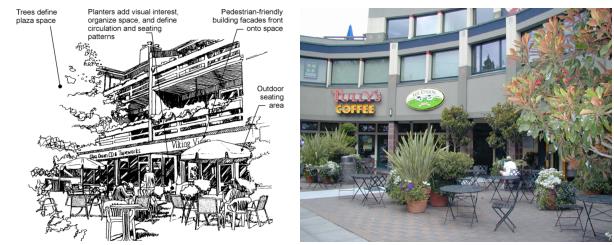
Figure 18.120.330.B.1. Illustration of favorable elements of a Pedestrian Oriented Open Space and example of a successful space on the right.
(Ord. 7244 §1 (Exh. A), 2020).
18.120.340 Landscaping
A. INTENT
The intent of this section is to:
1. Support the provisions of Chapter 18.36 OMC: Landscaping and Screening.
2. Ensure landscaping, including plantings, ground forms, natural elements, paving and hardscape, site furniture, and other site features are an integral part of the overall site and community design.
3. Complement the architecture, other site elements, and the visual appearance of the neighborhood, as well as the Northwest environment.
4. Encourage compositions of plant materials and site features that create an appropriate visual character such as formal, informal, or natural.
5. Use landscape design to help define a distinctive design character that distinguishes different Downtown Design Sub-Districts and Downtown as a whole.
6. Reduce the summertime heat and glare buildup within, and adjacent to, parking lots.
7. Reduce landscape maintenance requirements and help ensure that the landscape elements are attractive and healthy over time.
B. REQUIREMENTS
The requirements of this section do not supersede OMC Chapter 18.36, which establishes development standards for landscaping as part of site development. The requirements in this section augment OMC Chapter 18.36 with design requirements specific to the Downtown. Where there is a conflict between the provisions of this section and OMC Chapter 18.36, the City will determine which provisions apply based on which best meets the intent of the design guidelines. The requirements of this section do not apply to public projects within the public right-of-way. For the purpose of this section, “landscaping” and “landscape elements” include plant materials and their beds, pavements, walls and fences, water features (except shorelines covered by the City’s Shoreline Master Program), site furnishings, trellises, planter boxes, “green walls,” and related elements.
1. Landscaping Requirements for the Core, Business Corridor, and North Capitol Way Sub-Districts:
The following landscaping requirements apply to new developments and substantial re-developments in the Core, Business Corridor, and North Capitol Way Sub-Districts:
a. General Character and Intent: These Sub-Districts are envisioned to be intensively developed, therefore landscaped areas are likely to be limited. Developments must incorporate landscape elements to enhance building forms and provide smaller scale visual interest. Developments must emphasize uniform plantings in a linear or geometric pattern, with plants pruned into regular shapes and symmetric landscape layouts with straight walkways rather than naturalistic landscape layouts.
b. Plant Materials: Landscaping must consist of durable, well-suited ornamental trees and shrubs to complement buildings. Plantings may be structural, space-defining features.
c. Pavements: Hardscaped elements of landscaping must consist of high quality pavements such as concrete and pavers. Asphalt and gravel are prohibited.
d. Furniture and Site Furnishings: Site fixtures must complement the materials and character of the development’s building. Furniture and lighting must reflect the historic character of the Sub-District.
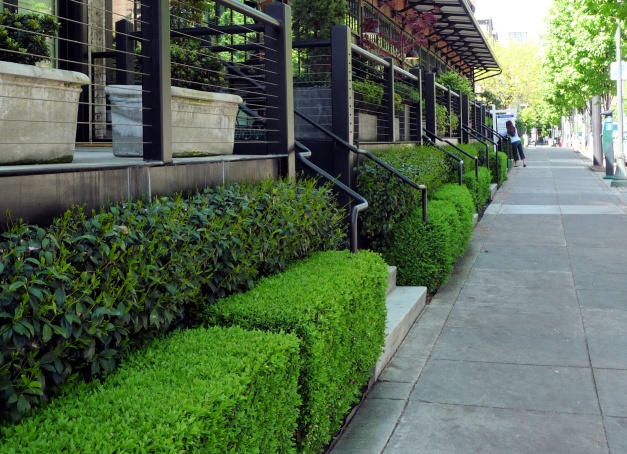
Figure 18.120.340.B.1: Relatively formal space defining landscaping is appropriate where there is room in the Core and along Capitol Way.
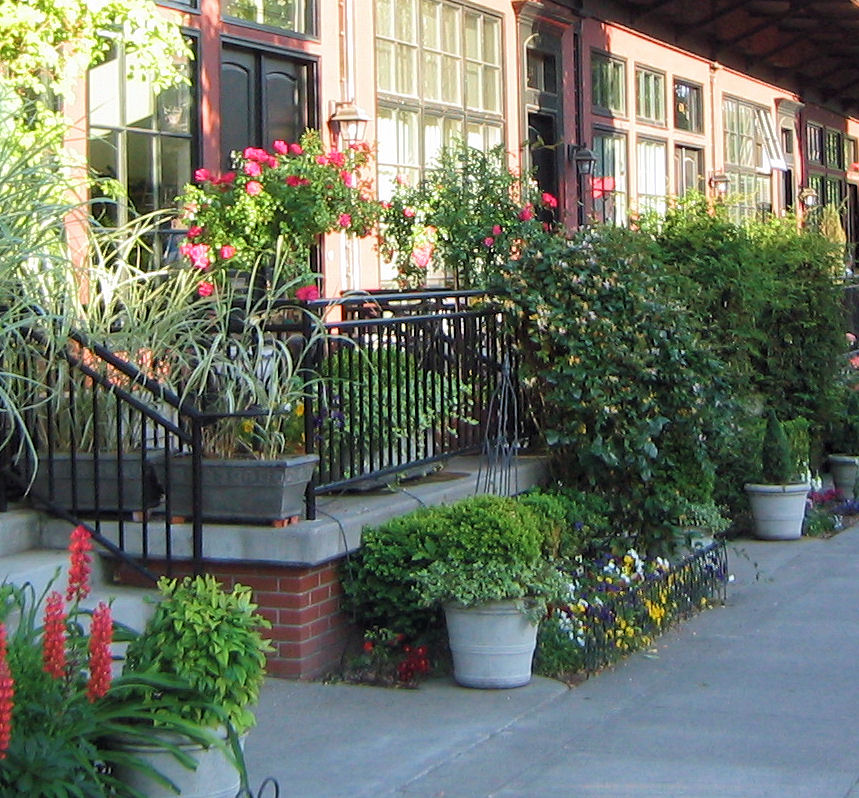
Figure 18.120.340.B.2: Small scale landscape enhancements are appropriate if maintained.
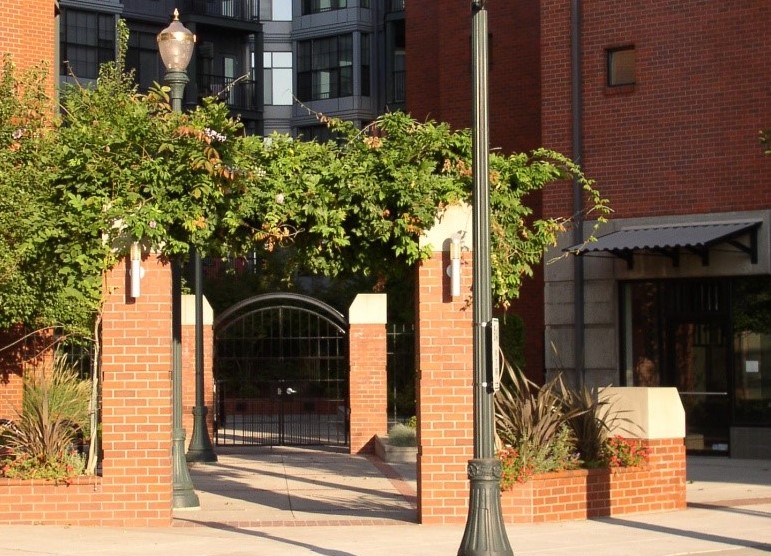
Figure 18.120340.B.3: Landscaping can be effective in enhancing and softening formal building elements, especially in more intense areas such as the Core and along Capitol Way.
2. Landscaping Requirements for the Waterfront Sub-District
The following landscaping requirements apply to new developments and substantial re-developments in the Waterfront Sub-District:
a. General Character and Intent: The Waterfront Sub-District, especially in the Percival Landing segment, features a variety of landscape characters ranging from naturalistic compositions of grasses and driftwood to lawn areas with floral edges. This Sub-District may also feature seasonal displays that enhance specific areas (typically outdoor dining areas) and add color. Landscaping must emphasize naturalistic plantings and, as an option, add seasonal displays in landscape improvements.
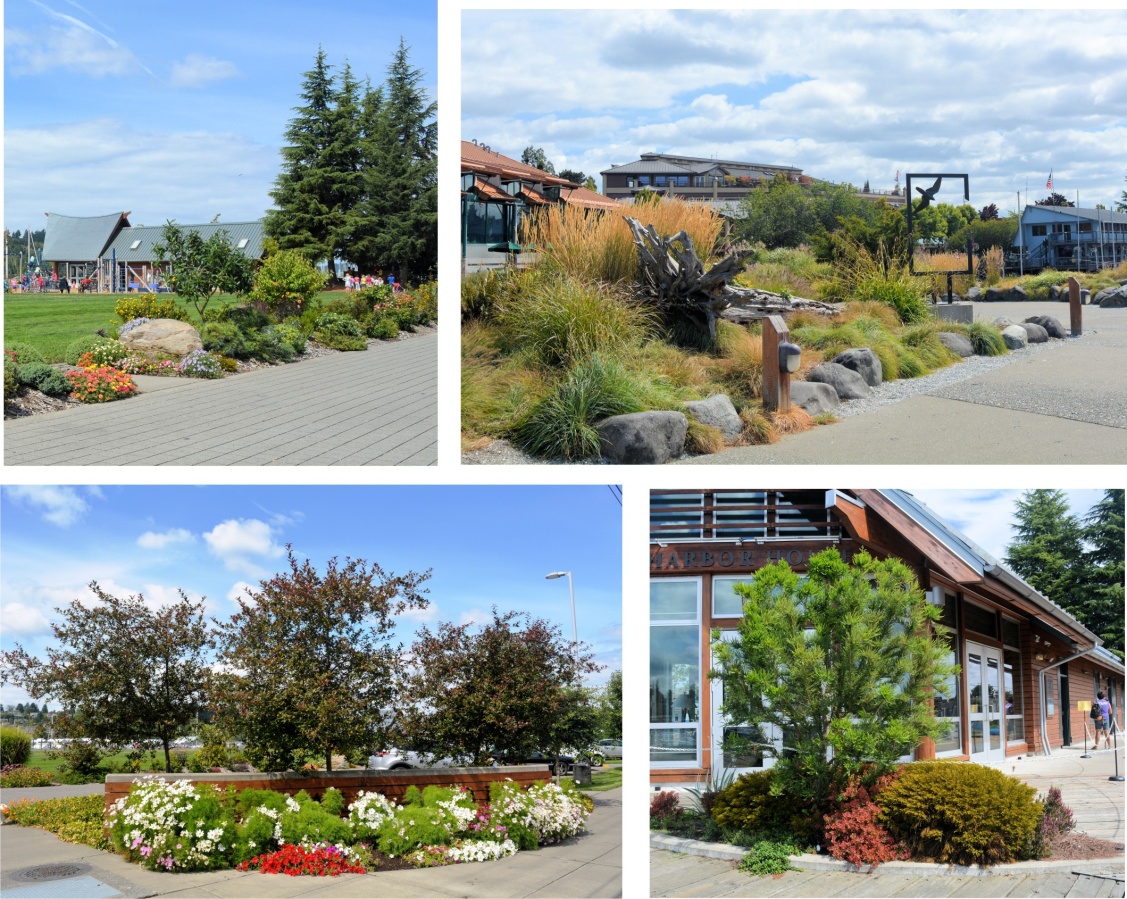
Figure 18.120.340.B.4: Existing landscaping in the Waterfront Sub-District features a wide variety of plantings and characteristics. Note the mix of seasonal floral and naturalistic plantings, and the backdrop of large evergreen trees.
b. Plant Materials: For properties on the West Bay waterfront and Percival Landing, a wide range of landscape characters may be incorporated depending on the available space, pedestrian activities, and adjacent buildings. For properties on the East Bay waterfront, plant materials must reinforce streetscape design and provide screening of unsightly areas. All plants on waterfront sites must be salt and ground water hardy.
c. Pavements: Pavements along an esplanade must conform to standards established by the City. Other pedestrian walking surfaces must meet standards established by the City or feature decorative pavement to accentuate special areas, unless the applicant demonstrates to the City’s satisfaction that site constraints warrant departure from this requirement and that the alternative will achieve the design intent.
d. Furniture and Site Furnishings: Site furniture must be functional and weather resistant. If a more specialized design is desired, the design should reflect a maritime character.
3. Landscaping Requirements for the Art/Tech Sub-District
The following landscaping requirements apply to new developments and substantial re-developments in the Art/Tech Sub-District:
a. General Character and Intent: The Art/Tech Sub-District is intended to provide for a mix of robust activities that may require frequent deliveries and outdoor work space. The character of landscaping in this Sub-District should reflect that quality, so landscape features should be hardy and limited to those areas not needed for active uses. The visual character of the area can be greatly enhanced with compact landscape screening and plantings in areas where people will pass or congregate such as building entrances and outdoor seating areas. Because of the envisioned variety of site uses and conditions, individual, site-specific landscape solutions may be necessary and desirable.
Some developments in the Art/Tech Sub-District, such as those shown below in Figure 18.120.440.B.5, include extensive garden areas in an otherwise industrial setting. Such gardens with plantings, special features, and art are encouraged where they do not conflict with site activities.

Figure 18.120.340.B.5: Some informal landscaping treatments that would be appropriate in the Art/Tech area but not necessarily in other Sub-Districts.
The guidance below is primarily for sites with more intensive industrial activities.

Figure 18.120.340.B.6: Attractive gardens that provide excellent examples of oases within an otherwise light industrial setting. This intimate juxtaposition of workshop and garden experiences is quite unique to Downtown Olympia and a major asset.
b. Plant Materials: Plant materials must be maintainable in the areas they are planted. Large scale trees, used to soften the “semi-industrial” character of this area, may be planted where there is room for the crown and the root system. On sites where vehicle traffic is expected, plantings and their root systems must be protected with measures such as raised beds, bollards, and special soil treatments.
c. Pavements: Hardscape elements of the landscaping may consist of utilitarian pavements such as asphalt or concrete, but artistic pavements and details are permitted and encouraged, especially if they relate to on-site activities.
d. Furniture and Site Furnishings: Site furnishings must reflect the activities and conditions on the site. For example, do not use delicate, residential quality furniture near industrial activities. Artwork installations are permitted.
4. Landscaping Requirements for the Entertainment Sub-District
The following landscaping requirements apply to new developments and substantial re-developments in the Entertainment Sub-District:
a. General Character and Intent: There is generally very little space for substantial landscaping in the Entertainment Sub-District because most buildings front directly on the street. There are exceptions, such as City Hall, which has a small plaza with landscaping and site furniture. The intent of the requirements for the Entertainment Sub-District is to create an especially vibrant, colorful day- and night-time pedestrian environment with interesting details. Where possible, landscaping should emphasize small-scale features such as baskets and planters to enhance the pedestrian experience.
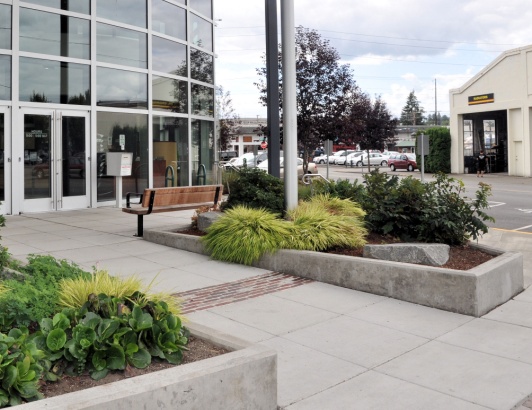
Figure 18.120.340.B.7: Plant beds in front of City Hall. Note the raised beds that enable easy maintenance and the bands of ornamental pavement.
b. Plant Materials: Where possible, landscaping should consist of small-scale ornamental plants to add color and texture to the area.
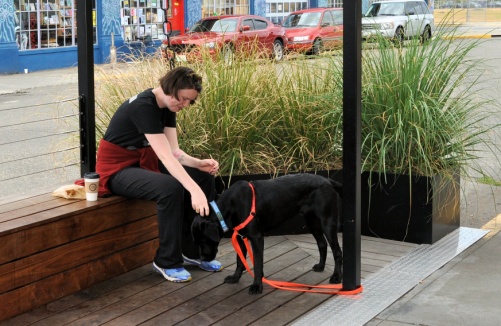
Figure 18.120.340.B.8: Small scale plantings that add pedestrian interest. Note how the simple planter with grass defines the space and makes it more inviting.
c. Pavements: For hardscape elements of landscaping, standard concrete pavements are permitted. Where space allows, such as in entryways, small areas of unique and high quality pavements, such as tile and terrazzo, are permitted and encouraged to add pedestrian interest.
d. Furniture and Site Furnishings: Furniture and site features, such as lighting, must be easily maintainable and made of durable materials and relate to the character of the building’s architecture.
5. Landscaping Requirements for the Residential Neighborhood Sub-District
The following landscaping requirements apply to new developments and substantial re-developments in the Residential Neighborhood Sub-District:
a. General Character and Intent: The Residential Neighborhood Sub-District includes two distinct types of land uses: 1) single and multifamily residences and 2) office buildings, often associated with the Capitol Campus. Additionally, small retail is encouraged in some areas.
For residences and mixed-use projects, landscaping must employ a mix of trees, shrubs, ground cover, and some lawn to both frame and enhance new development. Storefronts must feature pedestrian oriented façades so there may not be opportunities for landscaping if small retail shops are developed. Where appropriate, landscape screens must be installed to enhance privacy and reduce impacts on adjacent properties. Dense screens over 4 feet in height that prevent views from the street into front yards are prohibited as they present a security hazard. Landscape layouts may either be formal with symmetric, space-defining plantings, or may be informal with irregular plantings in a more “natural” composition.
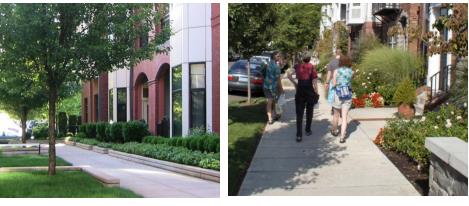
Figure 18.120.340.B.9: Formal residential landscaping (left) and more informal landscaping (right).
New office buildings may either feature one of the residential options described above, or if there is sufficient open space on the site, new developments may emulate the Capitol Campus’s Olmsted landscape character, which is typified by a layering of plant materials from lawn to low shrubs to trees around open areas, to create room-like spaces. Within these spaces, passive, palliative use is encouraged with curving pathways, furnishings, and features that take advantage of the site’s natural assets such as view corridors, landforms, or specimen plants. If the Olmsted design character is selected, the design should feature asymmetric plantings of large (at maturity) trees, ample lawn areas, some ornamental shrubs or beds, and curvilinear walkways.
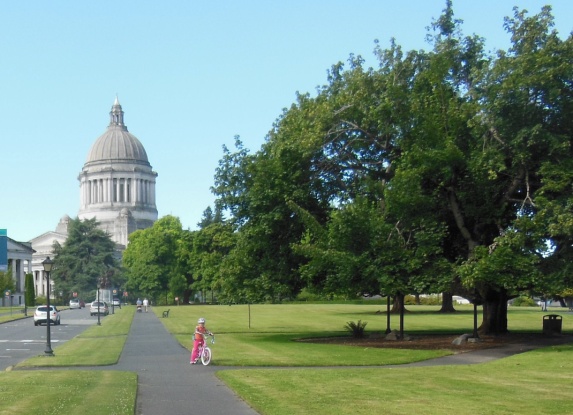
Figure 18.120.340.B.10: The Capitol Campus reflects the Olmsted Firm’s design character with informal groupings of large trees, curvilinear walkways, and lawn areas.
b. Plant Materials: A wide range of plant materials is appropriate for residential developments. Residential lots may feature formal or informal gardens, lawn areas, or more naturalistic landscaping emphasizing native species. Landscaping in residential developments must avoid large paved areas except for small plazas designed for outdoor living that feature ornamental plantings and furniture.
For non-residential developments, if the Olmsted landscape character is selected, large (signature) trees and curving lawn areas must predominate with shrubs and planting beds used as building enhancements and space-defining elements. Residentially scaled landscaping described above is appropriate for small spaces. The use of landscaping to facilitate the transition between large and small buildings or between residential and commercial developments is encouraged.
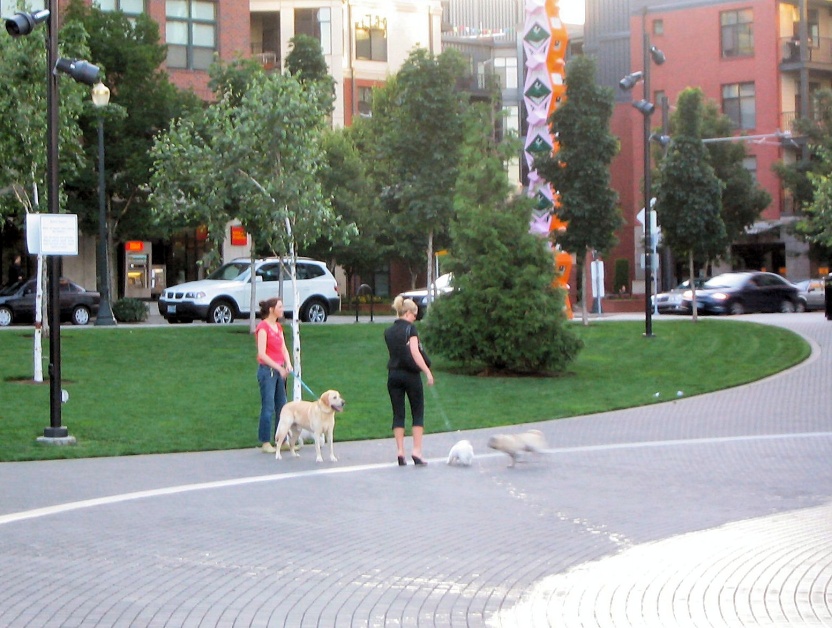
Figure 18.120.340.B.11: An Olmsted-style landscape design approach applied to an urban setting.
c. Pavements: Hardscape elements of the landscaping must consist of concrete pavements, unit pavers, or decorative elements such as tile.
d. Furniture and Site Furnishings: Site furniture is not required in residential development, although trellises, canopies, attractive gateways, and other site features can enhance a residential complex and are permitted and encouraged.
6. Perimeter Landscaping Requirements for Parking Lot Landscaping for all Downtown Sub-Districts:
The following perimeter landscaping requirements apply to parking lots for new developments and substantial re-developments in all Downtown Sub-Districts:
Perimeter landscaping for parking lots must adhere to the requirements in OMC 18.36.180 (which requires a 10 foot wide landscape buffer in the front façade, or 5 feet on the side) or as an alternative, the applicant may elect to install parking lot perimeter screening consisting of the following (interior parking lot landscaping is still required):
a. Provide a planting bed, at least 5 feet wide that incorporates a low masonry wall, 2-1/2 feet to 3 feet tall with landscaping or trellis (or both) as described below. When parking is adjacent to a right-of-way, the planting bed must be on the street-side between the parking area and street facing front of the wall. The planting bed must feature the following plantings:
i. Deciduous or evergreen trees (or both) spaced to create a continuous canopy (approximately 30 feet on center or as directed by the City). Alternatively, a trellis and shrubs, as in Figure 18.120.340.B.13 may be substituted for the trees.
ii. Shrubs spaced to provide complete coverage of the planting strip within three years of planting.
iii. The wall of the planting bed must be constructed of material approved by the City and consisting of brick, stone, decorative concrete or concrete block, or other permanent material that provides visual interest and helps to define the street edge. (See Figure 18.120.340.B.10 for an example). The wall and bed should be relatively continuous but may feature breaks at key points for pedestrian access.
iv. The City may require breaks in the wall and planter strip to facilitate pedestrians entering the site.
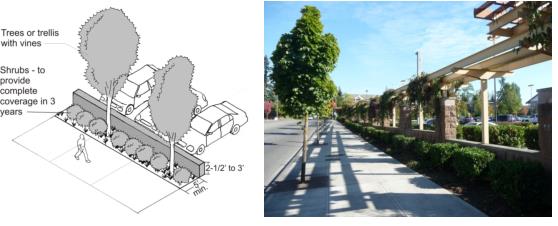
Figure 18.120.340.B.12: Parking area planting buffer with low wall and landscaping. Illustration with trees (left) and example with trellis (right).
7. Green walls. Green walls may be used in all Sub-Districts and on designated historic properties if the applicant demonstrates to the City’s satisfaction that a green wall does not detract from the site’s historic character. Green walls shall be properly irrigated and maintained.
8. Stormwater management techniques. Rain gardens and other landscape techniques to reduce stormwater runoff are encouraged in the South Capitol Way and Residential Neighborhood Sub-Districts.
(Ord. 7244 §1 (Exh. A), 2020).
18.120.350 Walkways and circulation elements
A. INTENT
The requirements of this section are intended to:
1. Provide safe and direct pedestrian access that accommodates pedestrians of all ages and abilities, minimizes conflicts between pedestrians and vehicular traffic, and provides pedestrian connections to neighborhoods.
2. Accommodate people riding bicycles.
3. Provide attractive internal pedestrian routes, promote walking, and enhance the character of the area.
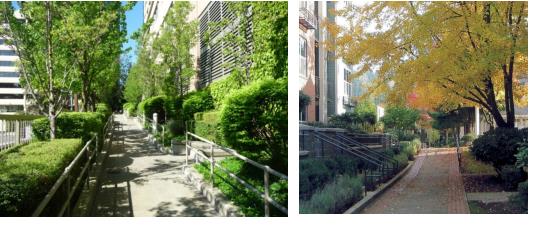
Figure 18.120.350.A: Well-designed pedestrian ways are important in urban areas.
B. REQUIREMENTS
The following requirements apply to all developments and substantial re-developments in all Downtown Sub-Districts. Note: This section does not apply to the areas added to sidewalks to meet the setback requirements to achieve a 12-foot or 10-foot wide sidewalk in 18.120.220. C, .D, and .E.
1. Walkway widths. Walkways (not within the public right-of-way) must be sufficiently wide to serve their intended purpose and level of use. All required walkways are to be clear of permanent obstructions. In addition, all walkways must meet the following specific requirements:
a. All walkways must be at least 4 feet wide with widened areas, at intervals approved by the City, for two wheelchairs to pass, except the width requirements of this subsection do not apply to walkways for very occasional use such as paths to a service area serving a single residential unit.
b. All walkways to main entrances to commercial businesses must be at least 6 feet wide.
c. All walkways to assembly type spaces such as theatres and auditoriums where heavy pedestrian traffic is anticipated must be at least 10 feet wide.
d. All walkways for which bicycle traffic is anticipated must be at least 10 feet wide with a 2 foot wide shoulder (12 feet total width) and signed and configured for safe pedestrian traffic as well as bicycle movement.
2. Walkway safety. The development must have clear visibility along all walkways (outside the public right-of-way). For safety and wayfinding, landscaping may not block visibility to and from a path in a way that conflicts with the requirements in OMC 18.120.280. A walkway must have maximize visibility, as approved by the City, where it crosses vehicle routes such as alleys and driveways so that pedestrians and drivers can clearly see each other.
3. Walkway enhancements. Where a walkway in a development (outside the public right-of-way) is within 5 feet of a blank wall, as defined in OMC 18.120.120 B 2, measured perpendicularly to the wall (see section 18.120.480), at least one of the following elements must be incorporated into the walkway:
a. Blank wall treatment per OMC Section 18.120.480, or
b. A landscaped strip, at least 3 feet wide between the wall and the walkway featuring shrubs, trees, or vines (or some combination of the three) as approved by the City.
4. Pedestrian circulation where façades face parking areas. Where a development includes building with a main entrance or a walkway to a primary entrance that faces an off-street parking area rather than the street, the development must have wide walkways with street trees and pedestrian lighting adjacent to the façades of retail and mixed-use buildings. Such a walkway must be at least 12 feet wide to allow for 8 feet minimum unobstructed width and landscaping and must include the following:
a. Trees, as approved by the City, spaced as directed by the City, considering the size of the trees at maturity. Trees must be placed in grates or landscaped planting beds. Breaks in the tree coverage will be allowed near major building entries to enhance visibility. However, the walkway must have no less than one tree per 60 lineal feet of building façade.
b. Pedestrian-oriented lights spaced no more than 40 feet on center.
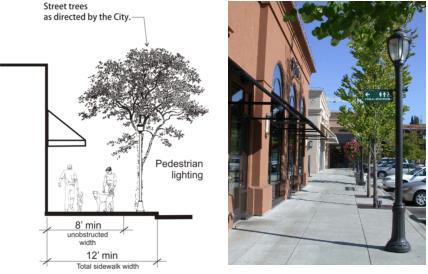
Figure 18.120.350.B.1: Left: Illustration of requirements for a building front facing a parking area. Right: Example of a successful pedestrian sidewalk between parking lot and storefront.
5. Separation between internal walkway and ground related residential units. For residents’ privacy and to maintain a comfortable transition between the walkway and the interior of the residence, ground-related residential units, as defined in OMC 18.120.240, facing a walkway must be set back at least 10 feet from the walkway or raised at least 3 feet above grade (or, preferably, both). The area between the ground-related residential unit and the walkway must be either landscaped, stairs/an entry, or have a deck, porch, or other space for outdoor living.
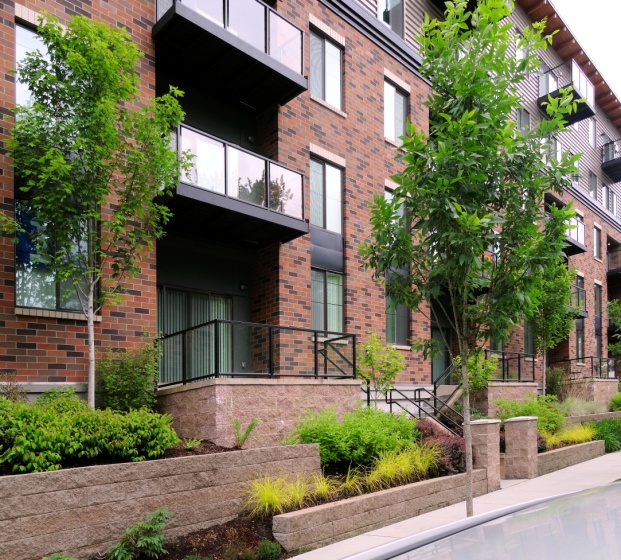
Figure 18.120.350.B.2: The raised floors and setbacks from a walkway provide privacy for the residents and an inviting transition from the public realm to the private living space.
(Ord. 7244 §1 (Exh. A), 2020).
18.120.360 Lighting
A. INTENT
The requirements of this section are intended to:
1. Encourage the use of lighting as an integral design component to enhance buildings, landscaping, or other site features.
2. Increase personal safety and security.
3. Increase night sky visibility and to reduce the general illumination of the sky.
4. Reduce horizontal light glare and vertical light trespass from a development onto adjacent parcels and natural features.
5. Enhance the night time pedestrian environment, especially in the Entertainment Sub-District.
6. Increase design consistency within the development.
B. REQUIREMENTS
The following requirements apply to all developments and substantial re-developments in all Downtown Sub-Districts:
1. Site lighting levels. All publicly accessible areas must be lighted with lighting levels as follows:
|
Condition |
Lighting levels in foot-candles on the ground |
||
|---|---|---|---|
|
Minimum |
Maximum |
Preferred |
|
|
Low- or non-pedestrian and vehicular traffic areas, private parking lots, secure storage areas, etc. |
.5 |
2 |
1 |
|
Moderate pedestrian areas and building entries, most walkways, some pedestrian oriented open spaces, etc. |
1 |
4 |
2 |
|
High pedestrian areas such as building entries and areas where personal security is a concern |
2 |
4 |
3 |
|
Public parking lots |
1 |
2 |
1 |
The maximum exterior light level anywhere within the development is 5 foot candles, measured on the ground. Lighting must be provided at consistent levels, with an average lighting level to minimum lighting level uniformity ratio no less than 3:1, to create gradual transitions between varying levels of lighting and between lit areas and unlit areas. Highly contrasting pools of light and dark areas are prohibited.
2. Light quality, height, and shielding. Lighting must meet the following light quality, height, and shielding requirements unless the applicant demonstrates to the City’s satisfaction that there is a compelling reason these requirements cannot be met:
a. Parking area lighting fixtures must be fully shielded, Dark Sky Approved, and mounted no more than 20 feet above the ground (no more than 15 feet above the ground in the Residential Neighborhood Sub-District), with lower fixtures preferable so as to maintain a human scale.
b. Exterior lighting may not spill onto adjacent properties.
c. Pedestrian lighting may not exceed a height of 15 feet above the ground, except in parking areas as noted in subsection a above.
3. Architectural lighting. Steady, non-flashing lighting of building features, artwork, and special landscape elements may be allowed, if the applicant demonstrates to the City’s satisfaction that the light causes no significant adverse impact.
4. Character of light fixtures and mounting. The design character of site and building-mounted lighting must be consistent with the site’s architecture. Alternatively, the design of site and building-mounted lighting may be unobtrusive without embellishment or specific character, provided the lighting fixture’s visibility is minimized.
(Ord. 7244 §1 (Exh. A), 2020).
18.120.370 Other site features
A. INTENT
The requirements of this section are intended to:
1. Ensure that site features such as walls, fences, poles, gates, and screens are well constructed and easily maintainable.
2. Enhance the pedestrian environment and the general appearance of Downtown.
B. REQUIREMENTS
The following requirements apply to all developments and substantial re-developments in all Downtown Sub-Districts:
1. Fences and walls.
a. Except where used for screening of service areas, utilities, mechanical equipment, or other facilities, fences must not obscure building fronts or site features.
b. Fences and walls must be made of durable, easily maintainable, and vandal-resistant materials.
c. Except in the Art/Tech Design Sub-District and for Port of Olympia properties, chain link fences are prohibited along the street-facing fronts of properties in the Downtown. Chain link fences may be used for temporary purposes, such as construction or short-term security. Where permanent chain link fences are used, they must be black vinyl coated.
d. Wooden fences are prohibited in the Core, Entertainment, and South Capitol Way Sub-Districts as they are less permanent and do not contribute to the historic and urban character desired there.
e. Where a retaining wall adjacent to a public sidewalk is necessary, the wall must be stepped back so that the top of the wall surface closest to the sidewalk is no more than 30 inches high. If greater height is required, terraces must be constructed no more than 30 inches high with at least 18 inches horizontal steps between each terrace riser. See Figure 18.120.360.B.1. The City may allow other configurations, such as a higher wall set back from the sidewalk and landscape, if the applicant demonstrates to the City’s satisfaction that such a wall is necessary for development and the objectives of this section are achieved.
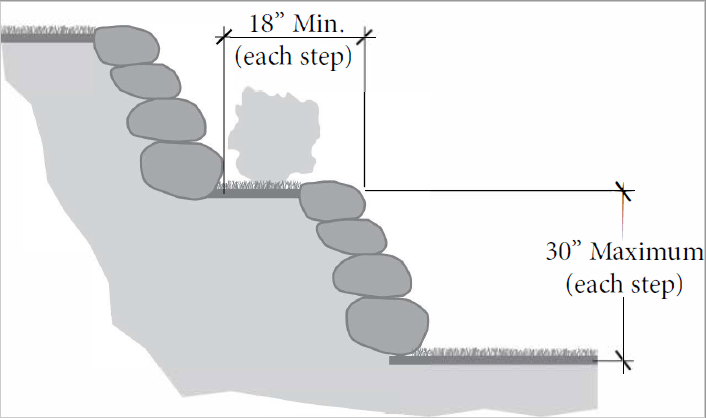
Figure 18.120.370.B.1: Allowable terrace configuration for wall or rockery adjacent to a public sidewalk. Note that this illustration shows a stone wall but other masonry and concrete walls are acceptable as well.
2. Poles and other vertical elements outside of the public right-of-way. Poles and other vertical site elements must be minimized on property outside of a public right-of-way.
a. Wires and other hanging features are prohibited except for otherwise-allowed temporary features such as permitted signs.
b. See also requirements for service areas and mechanical equipment, OMC 18.120.260.
Exception: The requirements in this subsection 2 do not apply to desirable vertical elements intended to enhance the pedestrian environment, such as weather protection, flag poles, banners, art installations, artistic lighting, supports for hanging flower baskets, trellises, and supports for green walls.
3. Alcove (recessed entry) gates.
a. Alcove gates must be made of durable, easily maintainable and vandal-resistant materials. To reduce the likelihood of graffiti, gates with smooth surfaces are prohibited unless they can easily be repainted or cleaned.
b. Chain link or wooden alcove gates are prohibited along the front of properties. The City may make exceptions for creative applications.
c. Alcove gates must be installed in a manner that can be easily removed in the future with minimal damage to the building.
d. For historically designated properties or properties within the Downtown Historic District, see OMC 18.105, Historic Structures and Buildings within Historic Districts, and 18.12.090, Historic Preservation, for additional requirements.
(Ord. 7244 §1 (Exh. A), 2020).
18.120.400 Building design
Section contents:
18.120.410 Intent and exemptions.
18.120.420 Building character.
18.120.430 Registered historic district and sites.
18.120.440 Architectural composition, massing, and articulation.
18.120.450 Human scale building elements and details.
18.120.460 Pedestrian oriented façades and weather protection.
18.120.470 Materials and colors.
18.120.480 Blank wall treatments.
18.120.490 Above-grade structured parking,
18.120.410 Intent and exemptions
A. INTENT
This subchapter addresses the function, quality, and character of building exteriors. The purpose of this subchapter is to:
1. Improve the pedestrian environment.
2. Increase the distinctiveness and individuality of the Downtown Design Sub-Districts.
3. Retain and preserve historic resources.
4. Produce buildings that are more durable, easily maintainable, vandal resistant, and compliment the history of Olympia and its historic resources that give the City a unique sense of place.
5. Enhance buildings’ functionality, especially as it relates to the function of façades and entries.
6. Add to Downtown’s overall visual quality.
B. EXEMPTIONS
Structures within the Downtown Historic District and any properties within the Downtown Design District that are individually registered as historic sites are subject to requirements in OMC 18.120.430 and are exempt from all other requirements found in OMC subchapter 18.120.400.
(Ord. 7244 §1 (Exh. A), 2020).
18.120.420 Building character
A. INTENT
The requirements of this section are intended to:
1. Reinforce a distinct building design character for each of the Downtown Sub-Districts.
2. Retain Downtown’s diversity of design character and to retain and preserve historic resources.
3. Create more design continuity and compatibility between the facades of nearby buildings.
4. Encourage preferred uses in each of the Downtown Sub-Districts.
5. Coordinate with street design measures to create attractive and functional streetscapes.
6. Allow for creativity in the design of new buildings.
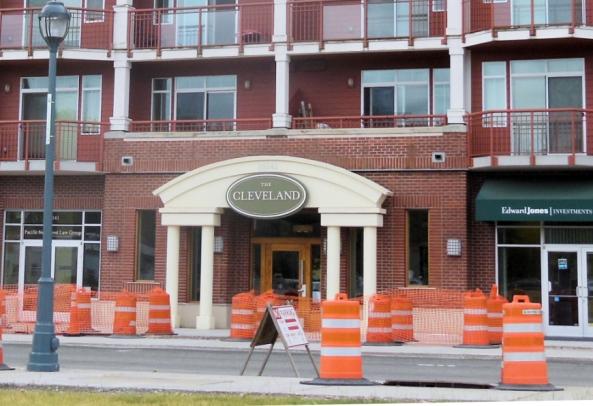
Figure 18.120.420.B.1: While emphasizing the entry is laudable, the classical arch and columns clash with the other more contemporary façade elements.
B. REQUIREMENTS
The following requirements apply to all new development or substantial redevelopment in all Downtown Design Sub-Districts:
1. Design character of building elements and details. A building’s elements and details must be consistent with the building’s architectural style and character. For example, ornate historic elements are prohibited on a contemporary styled building and single family residential details on large buildings are prohibited.
2. Compatibility with the architectural character of individual Design Sub-Districts. Where a development is located in more than one Design Sub-District, the applicant must identify which Design Sub-District identified in 18.120.130 B the applicant has chosen as the applicable Sub-District for the development That Sub-District will be the basis for all the requirements in this section. The development must incorporate the architectural design elements and characteristics described in the subsection for the applicable Sub-District. The City will require revision of an application if it does not meet the applicable design requirements.
Exception: If the project application is for a building remodel or addition to an existing structure, the applicant may either demonstrate that the proposal meets the design requirements of the applicable Sub-District or that the new building elements positively relate to the architectural character of the existing building.
|
Existing Character Defining Buildings |
Buildings with Desired Characteristics |
|---|---|
|
|
|
|
Classic styled building with regular patterns of vertically oriented windows |
Contemporary styled buildings with vertical façade with top, middle, and base |
|
|
|
|
Nicely detailed commercial building with modulation and window groupings |
Traditionally styled buildings with brick on the front facade |
Figure 18.120.420B.2: Desired building characteristics in the Core Sub-District.
a. Core.
i. Description. The early 20th century architecture of the historic retail core sets the design foundation of this Sub-District. The architectural design objective for the Core Sub-District is to reinforce its historic character, which features excellent examples of classically detailed buildings and early 20th century storefronts (see Olympia Downtown Historic District National Register Listing, available online or at City Hall).
ii. Requirements. A building in the Core Sub-District may be modern in appearance, materials, and detailing but must reflect the historic qualities by incorporating at least two of the following design characteristics and elements:
1. A vertical façade composition with a top, middle, and base.
2. Building modulation or upper story setbacks (or both).
3. Groupings or regular patterns of vertically oriented windows.
4. Traditional materials such as brick, tile, and concrete in the front façade.
b. Business Corridor.
i. Description. The architectural design objective for development along South Capitol Way and other Business Corridor Sub-District buildings is to enhance the visual connection between the State Capitol Campus and the Core. Capitol Way is a Type A Pedestrian Oriented Street (See OMC18.120.140). Similarly, the objective along Plum Street (which is a Downtown Entry Street as described in OMC 18.120.140) is to encourage high quality buildings and an attractive streetscape as an entry into Downtown.
ii. Requirements: A Building in the Business Corridor Sub-District must have at least two of the following design characteristics and elements:
1. Welcoming entries or plazas with landscaping or special features.
2. Artwork or other qualifying pedestrian amenities.
3. Ground floor pedestrian activities, especially on Capitol Way.
4. Building modulation or upper story setbacks (or both).
5. Special corner treatment (e.g. corner entry or building element) at intersections.
|
Existing Character Defining Buildings |
Buildings with Desired Characteristics |
|---|---|
|
|
|
|
New mixed-use building |
Hotel with corner feature |
|
|
|
|
Mixed-use building |
Mixed-use building |
|
|
|
|
Mixed-use building |
Mixed-use building with corner feature |
|
Figure 18.120.420.B.3: Desired building characteristics in the Business Corridor Sub-District. Note that high visibility corners, as noted in Figure 18.120.140.A.1 are also subject to provisions in section 18.120.450.B.5. |
|
c. North Capitol Way.
i. Description. The North Capitol Way Sub-District is an important pedestrian connection that has significant development opportunities. Currently there is a wide variety of building types in the Sub-District with the industrial vernacular of the new market buildings standing out. The architectural design objective of the North Capitol Way Sub-District is to enhance pedestrian connections between the Core and the Olympia Farmers Market.
ii. Requirements. A building in the North Capitol Way Sub-District must have at least two of the following design characteristics and elements:
1. Ground floor exterior materials with texture (such as brick or wood siding).
2. Relatively high level of transparency at the ground floor. (See OMC 18.120.220.C and .D) Buildings with ground-related residential units meet this requirement by satisfying OMC 18.120.240.
3. Compliance with Type A Pedestrian Oriented Street requirements as described in OMC 18.120.220.B.
4. Building modulation or upper story setbacks (or both).
|
Existing Character Defining Buildings |
Buildings with Desired Characteristics |
|---|---|
|
|
|
|
Market – Utilitarian with nice detailing |
Small office with ground floor building materials with texture, building modulation, and upper story setbacks |
|
|
|
|
Industrial vernacular adapted to pedestrian-oriented commercial, ground floor materials with texture |
Mixed use with storefronts with high transparency at the ground floor |
|
|
|
|
|
Ground floor residential |
Figure 18.120.420.B.4: Desired building characteristics in the North Capitol Way Sub-District.
d. Art/Tech.
i. Description. The architectural design objective of the Art/Tech Sub-District is to create new or rehabilitate existing buildings that are functional for commercial, light manufacturing, and artisanal activities. The incorporation of “warm industrial” materials—weathered wood, metal, etc.—and design elements—garage doors or large entryways that engage the street, parklets, etc.—are encouraged.
ii. Requirements: A building in the Art/Tech Sub-District must have at least three of the following design characteristics and elements:
1. An eclectic character that accommodates “workshops” (e.g., light manufacturing, commercial kitchens, technical, art, and artisan studios) as well as other similar activities.
2. Adaptive reuse of an existing, structurally sound building or buildings.
3. Simple architectural elements, loading areas, and minimal detailing that echo the character of existing, older warehouse stock; solid massing conveying perimeter walls to the lot line, and expansive interior volumes; and roof systems designed to span large volumes including barrel vault and truss form roofs often with prominent front parapets.
4. Industrial fixtures and materials that are durable, including metal and wood siding, masonry, and durable panel systems.
5. Views into the building so that people can observe the enclosed activities.
6. Unique or colorful lighting.
|
Existing Character Defining Buildings |
Buildings with Desired Characteristics |
|---|---|
|
|
|
|
Repurposed warehouse space – an example of adaptive reuse of a structurally sound building |
Expanded older building with industrial fixtures and durable materials |
|
|
|
|
Industrial building with mural – an example of eclectic character |
New mixed use building with simple architectural elements and minimal detailing |
|
|
|
|
Adaptive use |
New office building with views into the building |
Figure 18.120.420.B.5: Desired characteristics of buildings in the Art-Tech Sub-District.
e. Waterfront.
i. Description. The architectural design objective of the Waterfront Sub-District is to better connect Downtown to its waterfront location— visually, physically, and symbolically. Design elements found at Percival Landing like furnishings, light fixtures, marine hardware, wood pilings, boardwalks, and rope should be incorporated into new developments to help draw the aesthetics of the waterfront deeper into Downtown. Designs and materials might reflect additional waterfront themes of shoreline ecology, Northwest Native American history, historic industrial uses, sailing and boating, fishing and aquaculture, and commercial trading at the Port.
ii. Requirement. A building in the Waterfront Sub-District must have at least two of the following design characteristics and elements:
1. Wide (over 6 feet) overhangs facing the shoreline for weather protection.
2. Large windows (6 feet wide or wider) on the ground floor facing the water. Windows may be multi-paned.
3. Simple building forms with sloped roofs.
4. A simple palette of façade materials. Materials with texture such as wood or metal siding are encouraged.
|
Existing Character Defining Buildings |
Buildings with Desired Characteristics |
|---|---|
|
|
|
|
Waterfront restaurant with maritime character with large windows on ground floor facing the water |
Wide esplanade with shelter with wide overhangs providing weather protection |
|
|
|
|
Hands-on Children’s Museum, a building with a simple palette of façade materials with texture |
Building assemblage with maritime elements |
|
|
|
|
Simple building forms with sloped roofs |
Traditional maritime industrial buildings with simple building forms and sloped roofs |
Figure 18.120.420.B.6: Desired building characteristics in the Waterfront Sub-District.
f. Entertainment.
i. Description: The architectural design objective for the Entertainment Sub-District is to foster artistic and creative expression and create a hub of dining, nightlife, and the performing arts. Architectural elements in this Sub-District should focus on art, theatricality, imagination, with decorative night lighting and expressive detailing. Buildings (and streetscapes) should support entertainment and pedestrian activities, intimate but safe pedestrian spaces, consistent and inviting lighting, windows that put “eyes on the street,” and clear wayfinding.
ii. Requirements: A building in the Entertainment Sub-District must feature at least three of the following design characteristics and elements:
1. Expressive architectural style.
2. Artwork placed at the street level or the exterior of the building.
3. Pedestrian amenities in excess of what is required in OMC 18.120.450.
4. Human-scaled elements with colorful accents.
5. Unique or colorful lighting.
6. Transparency into ground floor activities in excess of what is required by other sections of the Downtown Design Criteria.
|
Existing Character Defining Buildings |
Buildings with Desired Characteristics |
|---|---|
|
|
|
|
Landmark sign and ornate architecture with unique and colorful lighting |
Contemporary building with human scaled elements |
|
|
|
|
Ornate style with excellent street presence, providing transparency into ground floor activities |
New storefront block with human scaled elements and colorful flower displays |
|
|
|
|
Transparency into ground floor activities |
Well maintained renovated buildings with pedestrian amenities |
Figure 18.120.420.B.7: Desired characteristics of buildings in the Entertainment Sub-District.
g. Residential Neighborhood.
i. Description. The architectural design objective for the Residential Neighborhood Sub-District is to create an urban residential neighborhood featuring a variety of residential types and building sizes. While architectural variety is important, emphasis is placed on ensuring the compatibility between old and new structures.
ii. Requirements. Where permitted, new commercial and institutional buildings in the Neighborhood Residential Sub-District must be located and designed to minimize conflict with the Sub-District’s residential emphasis. In the Residential Sub-District all new multi-family projects with 5 or more units and all new commercial buildings must emphasize a pleasant human-scaled character by having at least 3 of the following design characteristics and elements:
1. Residential building elements, such as porches, balconies, and enhanced entries.
2. Design elements that show compatibility between old and new buildings. Project plans must identify potential impacts to existing residences and the design elements intended to mitigate such impacts. Side yard setbacks and step backs of upper stories may be necessary to protect the privacy of neighbors.
3. Front yard setbacks with landscaping.
4. A variety of materials, building elements, and roof forms.
5. Human scaled elements beyond those required in OMC 18.120.450.B.1.
6. Permanent façade materials such as brick, tile, or highly finished concrete. (This is most applicable to commercial buildings but is also appropriated for some residential structures.)
|
Existing Character Defining Buildings |
Buildings with Desired Characteristics |
|---|---|
|
|
|
|
Older house with a variety of building elements and roof forms |
5-6 story multifamily building with design elements such as upper story stepbacks |
|
|
|
|
Institutional building with front yard setbacks and landscaping |
3 story multifamily building with residential building elements such as balconies and varied roof forms |
|
|
|
|
Brick façade materials with porches and front yard landscaping |
Ground-related multifamily residences with a variety of materials and elements |
Figure 18.120.420.B.8: Desired building characteristics in the Residential Sub-District.
3. Exceptions and opportunities for flexibility. The City may allow a building with a special civic purpose (such as a public building, assembly building, museum, or facility built for public activities) that does not meet the requirements of this section but contrasts with its neighbors to create a distinctive and high quality landmark.
(Ord. 7244 §1 (Exh. A), 2020).
18.120.430 Registered historic district and sites
A. INTENT
The requirements of this section are intended to:
1. Support the provisions of OMC chapter 18.12 and the Secretary of the Interior’s Standards for the Treatment of Historic Properties.
2. Reinforce the historic character and pedestrian orientation of the Core Sub-District.
3. Maintain the Downtown Historic District as the “heart” of the community.
4. Allow new development with a contemporary design character provided new buildings do not detract from the overall historic character of the Downtown.
5. Honor the historic scale and massing of downtown buildings, new construction should follow original parcel size and dimensions within the historic district.
B. REQUIREMENTS
1. Properties within the Downtown Historic District are subject to review detailed in Table 120.01 of this section.
2. For the purposes of this section, a “substantial alteration” is defined as:
a. Adding building stories, except that adding one story (e.g.: penthouse) that is setback at least fifteen feet from all facades of the building that face a public street (not an alley) is a minor addition.
b. Adding new rooms, structures, or spaces to an existing building (not including an existing or former single-family residence) that are visible from a public street (not an alley).
c. Adding structural building elements to the building façade facing a public street (not an alley) that alter the building’s exterior appearance, such as new alcoves, entries, storefronts, porches, balconies, windows, siding, etc.
d. Adding any other element to a building visible from a public street (not an alley) that the City may identify as a substantial addition that is not identified as a “minor alteration” below.
3. For the purposes of this section, a “minor alteration” is defined as:
a. Adding new rooms, structures, or spaces to an existing building that are not visible from a public street (not an alley).
b. Adding new rooms, structures, or spaces to an existing or former single-family residence.
c. Adding one story (e.g., penthouse) to an existing building if the added story is setback at least fifteen feet from all facades of the building that face a public street (not an alley).
d. Adding weather protection, such as a canopy, awning, or marquee, provided the addition meets all other applicable guidelines and regulations and when removed does not alter the exterior façade of the building.
4. This section sets forth design requirements applicable to properties that are individually designated historic properties or that are within a designated historic register district. The process for review of these properties is shown in Table 120.01. If there is any inconsistency or conflict between the provisions in this chapter and OMC chapter 18.105 or OMC 18.12.090, the provisions of OMC chapter 18.105 and 18.12.090 apply.
|
Historic Property Designation |
Type of Development |
Secretary of the Interior’s Standards for Rehabilitation (18.105) |
Downtown Design Criteria (18.120) |
Review Authority |
|---|---|---|---|---|
|
Individually Designated Register Property |
Rehabilitation or Minor Alternation |
✔ |
|
OHC |
|
Substantial Alteration |
✔ |
✔ |
JRC |
|
|
“Contributing” Property in Historic District |
Rehabilitation or Minor Alteration |
✔ |
|
OHC |
|
Substantial Alteration |
✔ |
✔ |
JRC |
|
|
“Non-Contributing” Property in Historic District |
✔ |
✔ |
JRC |
|
|
New Construction in Historic District |
✔ |
✔ |
JRC |
|
(Ord. 7244 §1 (Exh. A), 2020).
18.120.440 Architectural composition, massing, and articulation
A. INTENT
The requirements of this section are intended to:
1. Reduce the perceived scale of large buildings and add visual interest from all observable scales.
2. Encourage development that is compatible with buildings on the same block in terms of “architectural scale.” A building’s apparent height and bulk may be reduced by articulating or modulating façades and other means as required by this section.
3. Create a skyline that is visually interesting.
4. Create clear and welcoming building entries.
5. Add visual interest to buildings.
6. Protect designated landmark views and to maintain light and air circulation.
B. REQUIREMENTS
The following requirements apply to all new development or substantial redevelopment in all Downtown Design Sub-Districts, except where otherwise provided. Note: Building elements or features used to meet the requirements in this section may also be used to concurrently meet the requirements in OMC18.120.450 (Human Scale Building Elements and Details) or OMC 18.120.460 (Pedestrian Oriented Façades and Weather Protection), or both, and vice versa, provided the elements or features are identified as options in the applicable sections.
1. Façade articulation for commercial and mixed-use buildings and uses. In order to reflect the original plat divisions and to provide visual interest and variety for a pedestrian walking down a block, at least four of the following elements must be included, at intervals no greater than 30 feet, on the ground floor facades of all mixed-use or non-residential buildings facing either Type A Pedestrian Oriented Streets or Type B Pedestrian Oriented Streets and must be included on the ground floor facades of all above-grade structured parking and parking garages.
Exceptions: Façade articulation is not required in the Waterfront or Art/Tech Sub-Districts.
a. Window fenestration patterns or entries (or both).
b. Non-continuous weather protection features.
c. Vertical piers, pilasters, or columns.
d. Change in building material or siding style.
e. Vertical elements, such as a trellis with plants, green wall, or art element.
f. Vertical building modulation of at least 12 inches in depth combined with a change in roofline modulation pursuant to OMC 18.120.440.B.4 or a change in building material, siding style, or color. The top right example of Figure 18.120.440.B.1 illustrates this option.
g. Built-in pedestrian amenities such as planters or seating.
h. Other design techniques that effectively reinforce a pattern of small storefronts, individual businesses, or uses.
i. Building modulation
j. Roofline modulation pursuant to OMC 18.120.440.B.4.
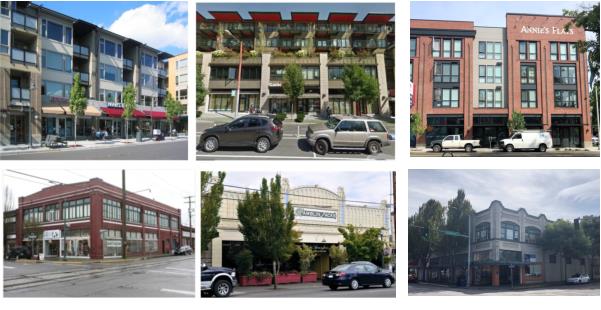
Figure 18.120.440.B.1: Façade articulation examples: Upper buildings use substantial modulation, separate awnings, change in façade materials, and a window fenestration pattern. The lower left building features vertical piers, and a strong window fenestration pattern (note the articulated entry). The lower right image incorporates a roofline change, façade details, and vertical piers with ornamentation to effectively articulate the façade.
2. Façade articulation for residential buildings and residential portions of mixed-use buildings. Residential portions of new buildings must include articulation elements at intervals no more than every 30 feet to break up the massing of the building and add visual interest and compatibility to the surrounding context. The building must have at least three of the following elements at intervals no greater than the width of the residential unit, facing the street, (typically 25-35 feet wide).
a. Window patterns or entries or both.
b. Change in roofline pursuant to OMC 18.120.440.B.4.
c. Change in building material, siding style, or window fenestration pattern. (This option may not be used as an articulation option in the Core Sub-District.)
d. Vertical building modulation of at least 12 inches in depth. Balconies may be used to qualify for this option if they are recessed or projected from the façade by at least 2 feet. “Juliet balconies” (balconies that are so shallow that they cannot be occupied) or other balconies that appear to be tacked on to the façade do not qualify. The depth of the modulation must be at least 3 feet if not accompanied by roof modulation or a change in materials.
e. Vertical elements, such as a trellis with plants, green wall, or art element.
f. Other design techniques that effectively break up the massing at no more than 30 foot intervals.
Exceptions: Façade articulation is not required in the Waterfront or Art/Tech Sub-Districts, regardless of use.
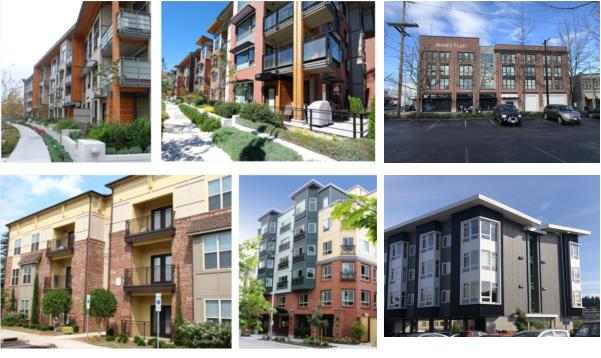
Figure 18.120.440.B.2: Examples of articulation of residential building façades. All examples use window fenestration and vertical building modulation elements. The upper examples use a mixture of material changes and detail components to further articulate the façades. In the lower left example, the balcony element’s mix of color, material, and projection are effective. The lower middle and right examples show a combination of materials, color changes, and building modulation.
3. Maximum façade width. Building façades wider than 120 feet that face a public street or park must include at least one of the following elements to break up the massing of the building and add visual interest.
Exceptions: The City may exempt buildings in the Art/Tech Sub-District from the maximum façade width requirement where the applicant demonstrates to the City’s satisfaction that they require large spaces for fabrication, storage, industrial, or other special activities. Office and retail uses do not qualify for this exemption. Structured parking and parking garages are exempt from this section but are subject to OMC 18.120.490.
a. Vertical building indentation at least 15 feet deep and 30 feet wide. For multi-story buildings, the modulation must extend through more than one half of the building floors.
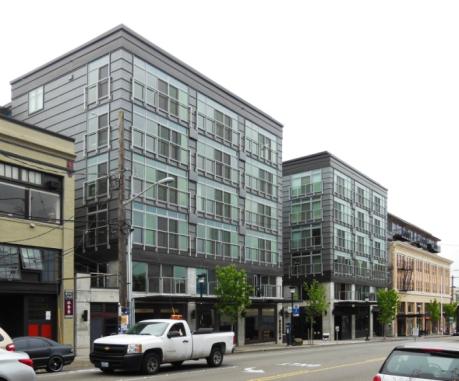
Figure 18.120.440.B.3: Example of vertical indentation to visually break up the scale of a large building.
b. A contrasting vertical modulated design element, such as a turret, glazed area, or set of columns or pilasters featuring all of the following:
i. The element extends through all floors above the first floor fronting on the public street. Exception: upper floors that are set back more than 10 feet horizontally from the façade.
ii. The element utilizes a change in building materials that contrasts from the rest of the façade.
iii. The element includes roofline modulation pursuant to OMC 18.120.440.B.4
c. A façade that includes different sections with contrasting articulation that make it appear like two or more distinct buildings. To qualify for this option, these contrasting façades must employ at least two of the following:
i. Different building materials or configuration of building materials.
ii. Contrasting window design (sizes or configurations).
iii. Different ground floor articulation, entry features, and store front design.
iv. One or more other measures approved by the City, if the applicant demonstrates to the City’s satisfaction that the measure satisfies the intent of this subsection.

Figure 18.120.440.B.4: Examples of architecturally dividing a façade into sections that give the impression of a composition of smaller buildings.
4. Roofline modulation. In order to qualify as a façade articulation feature in OMC 18.120.440.B.2 and subsection 3, above, rooflines must have one or more of the following:
a. Different roof heights. For flat roofs or façades with horizontal eave, fascia, or parapet, the minimum difference between the two sections of roofline or cornice must be 3 feet for one- and two-story buildings and 5 feet for buildings with more than two stories.
b. A pitched roofline or gabled roofline segment. The pitched or gable roof must be at least 20 feet in width with a minimum slope of 4:12.
c. An arched roof line or a roof with a special geometry or an unusual or distinctive roof element such as an arch, tower, clock, or similar feature as an articulating feature.

Figure 18.120.440.B.5: Three local examples meeting the criteria for roofline modulation.
5. New buildings in the Residential Sub-District. New buildings in the Residential Sub-District must minimize shading and impacts to privacy for neighboring residences and must create a harmonious relationship between adjacent buildings and an attractive street front. To meet this requirement, the City may require a proposed building design to:
a. Step back stories four and above up to 15 feet (dependent upon the shade study submitted by the applicant) from the allowed side and rear yard building wall in order to minimize shading to adjacent properties. This requirement is most applicable if the new building’s shadow extends 10 feet onto an adjacent property to the north or east when the sun’s angle is at 45 degrees from the horizontal.
b. Replicate or approximate roof forms and pitch found on existing residential structures in the neighborhood.
c. Have window patterns and proportions similar to those on existing residential structures in the neighborhood, provided they also meet OMC 18.120.450.B.4.
d. Have building façade materials similar to those featured on existing buildings in the neighborhood. Such materials may be secondary or accent materials and need not cover the whole façade.
e. Maintain a relationship to the street that reflects other buildings on the block. This may be by:
i. Setting the building back a distance between the setbacks of buildings on either side of the project site.
ii. Employing landscaping as described in OMC 18.120.340.B.5.
iii. Use similar entry configurations (e.g. walks, porches, etc.) as found on adjacent properties.
iv. One or more similar methods approved by the City, if the applicant demonstrates to the City’s satisfaction that the method satisfies the intent of this subsection.
6. Modulation required to enhance views. In order to enhance the quality of adopted landmark views from designated observation points, vertical modulation is required on the west face of new buildings over four stories on the properties in the following blocks (modulation is not required on the bottom four stories):
a. The block bound by Capitol Way, Washington Street, 8th Avenue, and 9th Avenue.
b. The block bound by Franklin Street, Washington Street, 8th Avenue, and 9th Avenue.
c. The block bound by Franklin Street, Washington Street, 9th Avenue, and 10th Avenue.
7. If a building is located in one of the locations specified above for which vertical modulation is required, the vertical modulation must conform to the following:
a. The west building façade must be articulated at intervals not greater than 60 feet measured horizontally.
b. The west building façade must project out or in from the building face at least 5 feet in depth if the interval is 35 feet or less and 10 feet in depth if the interval is greater than 35 feet.
c. The modulation must be accompanied by roof modulation or the projection must feature a change in materials or colors.
8. A building located in one of the locations specified above for which vertical modulation is required that has west facing façades over 120 feet in length measured horizontally must have modulation projection of indentation at least 15 feet deep and 30 feet wide to break the building face into intervals of no more than 60 feet in width.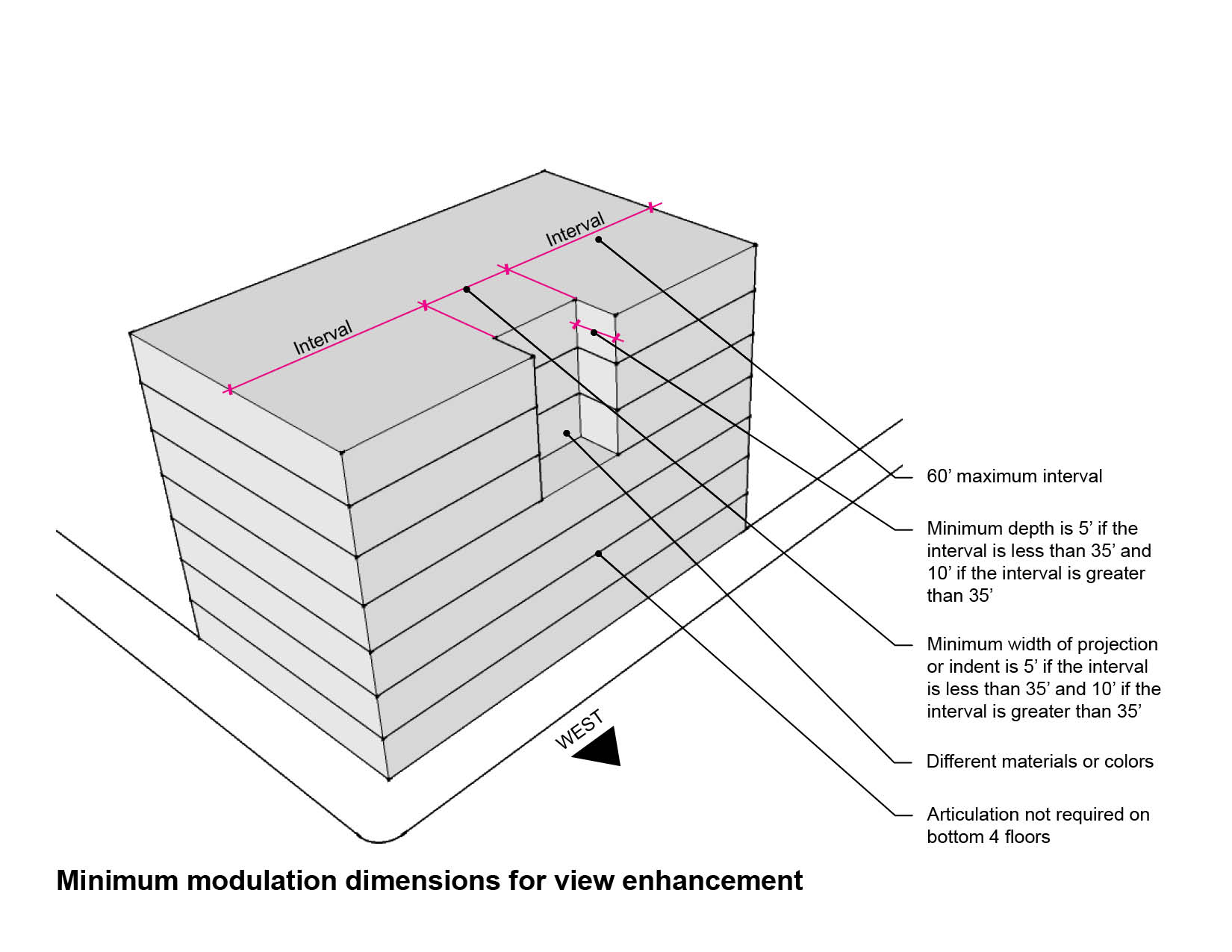
Figure 18.120.440.B.6: Modulation dimensional relationships for specific properties to enhance views. This diagram is for illustrative purposes. Refer to OMC 18.120.440.B.6, 7 and 8 for stated requirements.
9. Multiple sided buildings. A buildings must have a consistent visual identity from all sides visible to the general public, except building walls adjacent to alleys and walls immediately abutting neighboring properties (such as firewalls). A Building must have a comparable level of quality of materials, detailing, color schemes, and fenestration on all sides visible to the general public.
(Ord. 7244 §1 (Exh. A), 2020).
18.120.450 Human scale building elements and details
A. INTENT
Generally, buildings attain a good human scale when they feature elements or characteristics—such as doors, porches, and balconies—that are sized to fit human activities. This section emphasizes use of building elements which are larger building features seen from a distance, and building details which are smaller human scaled elements. The requirements of this section are intended to enhance the human scale of buildings by:
1. Providing attractive and welcoming building façades and pedestrian environments.
2. Increasing the design quality of buildings when viewed close up (roughly within 80 feet of the building).
3. Enhancing the quality of building façades.
4. Providing the building with an appropriate human scale that adds interest and a sense of well-crafted quality.
5. Adding interest to the streetscape for those traveling in vehicles, bicycles, and those on foot.
B. REQUIREMENTS
The following requirements apply to all new development or substantial redevelopment in all Downtown Design Sub-Districts. Note: Building elements or features used to meet the requirements in this section may also be used to concurrently meet the requirements in OMC 18.120.440 (Articulation, Massing, and Composition) or OMC 18.120.460 (Pedestrian Oriented Façades and Weather Protection), or both, and vice versa, provided the elements or features are identified as options in the applicable sections.
1. Human scaled elements. New buildings on Type A Pedestrian Oriented Streets and B Pedestrian Oriented Streets, new buildings facing Capitol Way, a water body, or public park, and new buildings in the Core, Waterfront, and Residential Neighborhood Sub-Districts must have a minimum of four of the following human scale building elements.
Other new buildings for which the above paragraph does not apply must use at least two of the following human scale measures elements.
Human scale elements are:
a. Balconies or decks on upper stories, if there is at least one balcony or deck per upper floor on the façades facing a public street (not an alley).
b. Bay windows or other window treatments that extend out from visible facades of the building.
c. At least 100 square feet of pedestrian oriented space, as described in OMC 18.120.330 (Pedestrian Oriented Open Space), for each 100 lineal feet of building façade facing a public street.
d. Individual windows on the ground floor. Windows must be less than 32 square feet per pane with molding or trim around each window. Windows may not be in the same plane as the wall above or adjacent to them.
e. A porch or covered entry on the façade facing a public street or public space.
f. Spatially defining building elements, such as a trellis, overhang, canopy, or other element that defines space that can be occupied on the façade facing a public street or public space.
g. Upper story setbacks, if one or more of the upper stories are set back from the facade of the building at a depth of at least 6 feet.
h. Placement of smaller building elements near the entry of large buildings facing Type A Pedestrian Oriented Streets or Type B Pedestrian Oriented Streets. Figure 18.120.040.E.2.a illustrates how human scale can be achieved using elements such as multiple canopies, an extended cafe area, or upper deck.
i. Landscaping components that meet the requirements of OMC 18.120.340 (Landscaping).
j. Public art or hand-crafted or detailed ornamental signs that incorporate elements of a human scale (e.g., life size sculpture).
k. Upper story windows with molding at least 4 inches wide or clusters of adjacent windows separated by molding (ribbon windows and curtain walls do not apply).
l. One or more similar elements if the applicant demonstrates to the City’s satisfaction that such element meets the intent of this subsection.
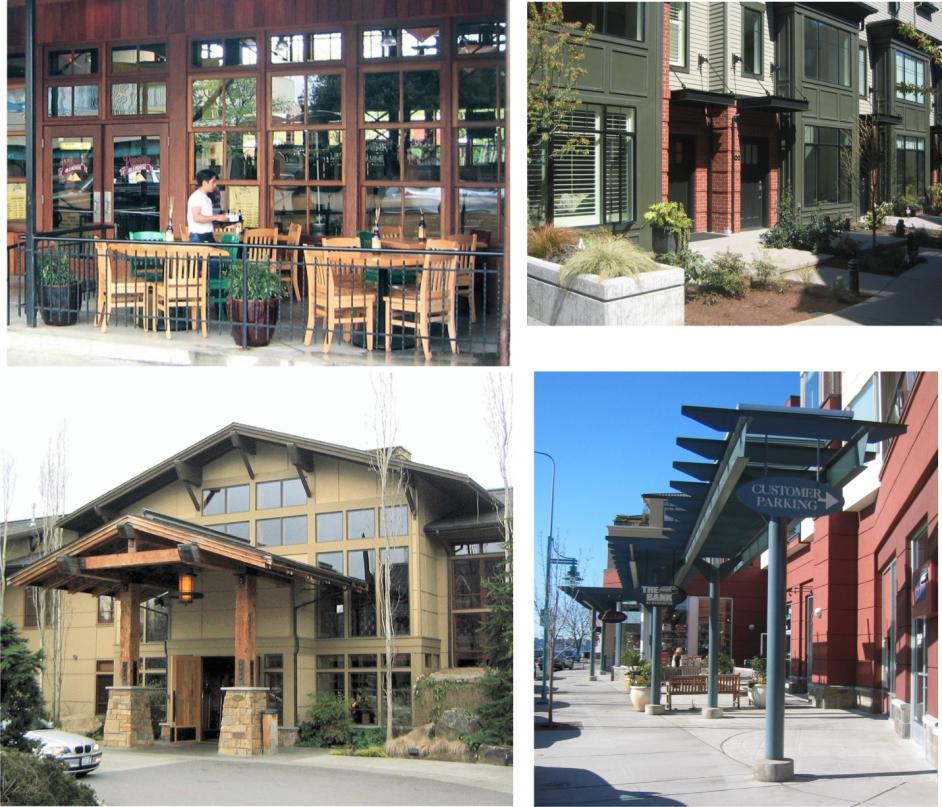
Figure 18.120.450.B.1: Examples of elements that provide a human scale. Human scale elements include outdoor seating and furniture, landscaping, multi-paned windows, canopies, trellises, a porch, lighting fixtures, and traditional materials.
2. Building entries. Building entries must have all of the following:
a. All buildings must have a primary building entrance facing the street or opening onto a courtyard directly facing the public street. Exception: buildings that are situated immediately on a shoreline esplanade or public walkway must have a primary building entrance facing the shoreline.
b. All primary building entries must be covered with weather protection at least 6 feet wide and 5 feet deep.
c. All primary building entries must have lighting for visibility and security.
d. Primary building entries within the Core, North Capitol Way, Business Corridor, Waterfront, and Entertainment Sub-Districts must be enhanced with at least two of the façade details required by OMC 18.120.450.B.3, below
3. Façade details – non-residential and mixed-use buildings. All new buildings and all additions that change the character of an existing building or site must have at least one detail element from each of the three categories below (i.e. one from the “entry treatments” category, one from the “building façade details” category, and one from the “decorative or textural enhancements category”), as follows on all façades facing a public street or public space.
Exception: Ground-related residential units in mixed-use buildings are exempt from the requirements of this subsection.
a. Entry treatments:
i. Display windows divided into a grid of multiple panes.
ii. Transom windows.
iii. Roll-up windows or doors that promote outdoor activities.
iv. Decorative entry door(s) or a recessed entry.
v. Etched or stained decorative glass.
vi. Multi-paned windows on upper stories (at least four panes per window).
vii. One or more similar decorative or specially designed window or entry treatments if the applicant demonstrates to the City’s satisfaction that such treatment meets the intent of this subsection.
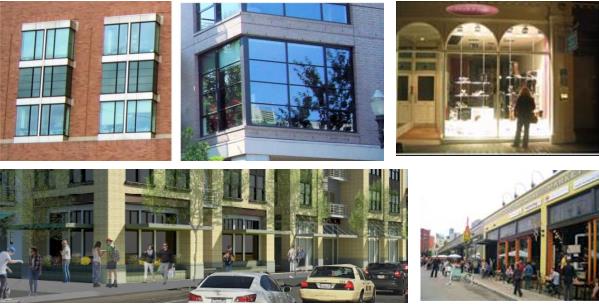
Figure 18.120.450.B.2: Examples of special window treatments. Note transom windows in the lower right image’s façade.
b. Building façade details:
i. Custom-designed weather protection element, such as a steel canopy, cloth, or retractable awning.
ii. Decorative, custom sign or signs with bottom edge no more than 12 feet above grade.
iii. Custom, decorative, or hand crafted artwork.
iv. Decorative building-mounted light fixtures.
v. Bay windows, trellises, towers, or similar elements.
vi. One or more similar details or elements if the applicant demonstrates to the City’s satisfaction that such detail or element meets the intent of this subsection.
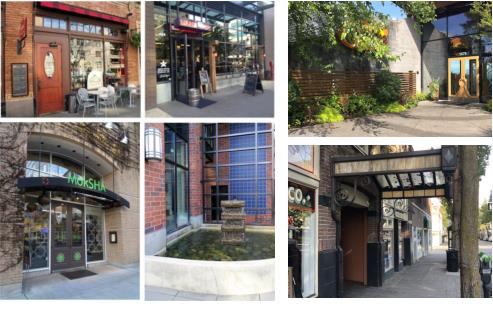
Figure 18.120.450.B.3: Examples of attractive building details including artwork, special lighting, interesting window patterns, special features, and pedestrian oriented signs.
c. Decorative or textural enhancements:
i. Use of decorative or textural building materials such as decorative use of brick, tile, or stonework.
ii. Artwork on the building (such as a mural or mosaic).
iii. Decorative kick-plate, pilaster, masonry beltcourse (a horizontal line of distinctive masonry), or other similar feature.
iv. Hand-crafted material, such as special wrought iron or carved wood.
v. Etched or stained decorative glass.
vi. One or more similar elements if applicant demonstrates to the City’s satisfaction that such element meets the intent of this section.
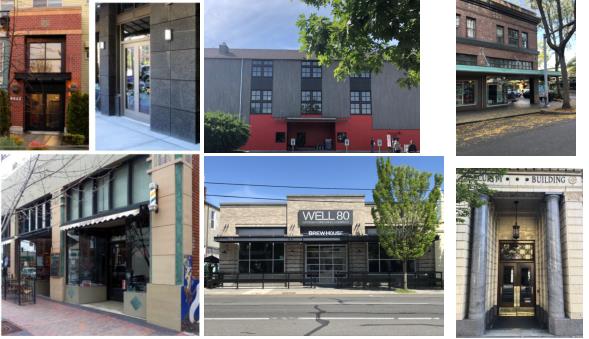
Figure 18.120.450.B.4: Examples of unique use of materials that add façade interest. High quality materials are most important at the ground floor, particularly for commercial and mixed-use buildings in the Core, Waterfront, North, Business Corridor, and Entertainment Sub-Districts where façades are near sidewalks and more exposed to damage and vandalism.
4. Window design. Buildings in all Downtown Sub-Districts, except the Art/Tech Sub-District, must use techniques to add quality and interest to fenestration on building facades. Whereas OMC 18.120.450 (Human Scaled Elements) is focused on storefronts, these requirement apply to upper story windows. At least one of the following techniques is required:
a. Recess or project individual windows above the ground floor at least 2 inches from the façade or incorporate other design treatments that add depth, richness, and visual interest to the façade.
b. Arrange the grouping of windows in a distinctive pattern.
c. Multi-paned windows (more than four panes per window).
d. Visually significant window trim or shading elements such as wider frames, lintels, or casings.
e. One or more similar techniques if the applicant demonstrates to the City’s satisfaction that such technique meets the intent of this subsection.
5. High Visibility Street Corners. For all developments located at High Visibility Street Corners as listed below and as identified on the map at Figure 18.120.140.A.1, a building or structure must be located within 15 feet of the street corner and must include corner design features approved by the City that accentuate the street corner. Corner design features include a cropped building corner with a special entry feature, decorative use of building materials at the corner, distinctive façade articulation, sculptural architectural element, or similar decorative element if the applicant demonstrates to the City’s satisfaction that such element meets the intent of this subsection. Alternatively, the building can be configured with a corner plaza. The following are High Visibility Street Corners:
i. Intersection of Plum Street and Union Avenue – NE, NW, & SW corners.
ii. Intersection of Plum Street and 4th Avenue – NE, NW, & SW corners.
iii. Intersection of Plum Street and State Avenue – NE, NW, & SW corners.
iv. Intersection of Plum Street and Olympia Avenue – NW & SW corners.
v. Intersection of Plum Street at 8th Avenue – SE corner
vi. Intersection of Union Avenue and Capitol Way – NE & NW corners.
vii. Intersection of 5th Avenue and Water Street – NE & SE corners.
viii. Intersection of 4th Avenue and Water Street – NE & SE corners.
Note: Figure 18.120.450.B.5 illustrates acceptable examples.
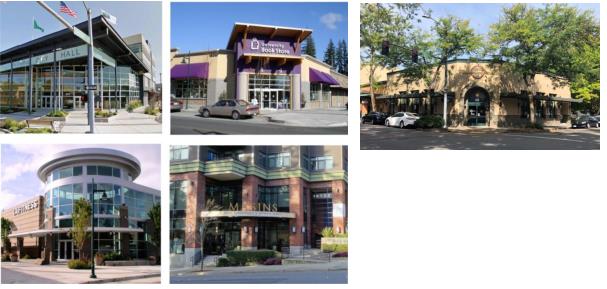
Figure 18.120.450.B.5: Examples of acceptable corner treatments with large scale building elements. Olympia City Hall features a curved glass curtain wall and landscaping. The lower middle example breaks down the building massing to a human scale and adds a corner entrance and canopy
(Ord. 7244 §1 (Exh. A), 2020).
18.120.460 Pedestrian oriented façades and weather protection
A. BACKGROUND AND INTENT
Requirements in OMC 18.120.220.C, D, and F include provisions for “Pedestrian Oriented Façades” on designated Type A and Type B streets and for buildings on sites directly fronting the waterfront. This section establishes the requirements for such Pedestrian Oriented Façades. The requirements of this section are intended to:
1. Provide a consistently interesting pedestrian environment.
2. Encourage walking.
3. Strengthen retail activities in the Downtown.
4. Allow pedestrians to view the inside activities of businesses and associated non-residential uses.
5. Provide accessible ground floor space that is adaptable to a variety of uses.
6. Increase safety by adding “eyes on the street.”
B. REQUIREMENTS
The following requirements apply to all new development or substantial redevelopment in all Downtown Design Sub-Districts:
1. Where Pedestrian Oriented Façades are required pursuant to OMC 18.120.220.C, D, or F, the building must have all of the following:
a. Transparent window areas or window displays over at least 75 percent of the ground floor façade between 2 feet and 8 feet above the sidewalk. The windows must look into the building’s interior or be configured as merchandise display windows. Windows that look into service or storage areas or other similar service-oriented rooms do not satisfy this transparent window area or window display requirement.
Exception: For special purpose buildings not used primarily for the sale of merchandise, such as theaters, an alternate solution to providing an interesting pedestrian experience may be utilized if the applicant demonstrates, to the City’s satisfaction that the alternate solution meets the intent of this section. Buildings housing offices, banks, or restaurants do not qualify for this exception because such buildings can provide the required transparency without compromising their functions. If the applicant’s proposal includes windows that are not fully transparent to satisfy this requirement, the alternative materials must be approved by the City.
b. A primary building entry facing the public street front as required by OMC 18.120.450.B.2.
c. Weather protection (e.g. canopy, awning, or other cover from the rain) at least 5 feet wide over at least 65 percent of the front façade. The weather protection must be located between 8 feet and 15 feet above grade unless the applicant demonstrates to the City’s satisfaction that there is a compelling reason to allow a deviation from this height requirement.
d. A ground floor height of at least 15 feet. If the applicant demonstrates to the City’s satisfaction that there are special conditions, such as the provision of a mezzanine, the City may waive this interior height requirement.
Exceptions: Another method for providing an attractive ground floor building front may be approved by the City if the applicant demonstrates to the City satisfaction that such method meets the intent of this subsection.
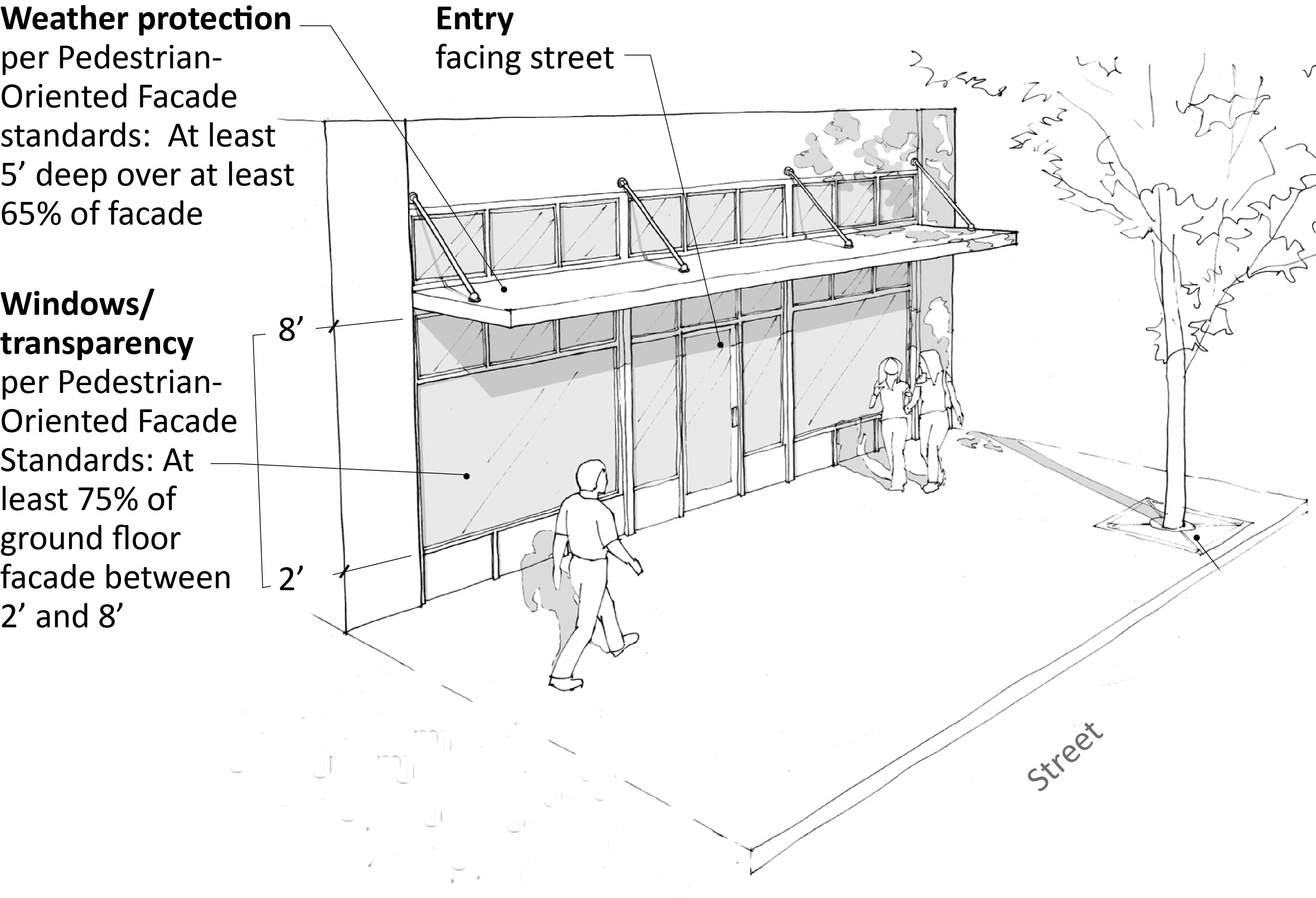
Figure 18.120.460.B.1: An example of a pedestrian oriented façade.
(Ord. 7244 §1 (Exh. A), 2020).
18.120.470 Materials and colors
A. INTENT
The requirements of this section are intended to:
1. Encourage the use of durable, high quality, and urban building materials that minimize maintenance cost and provide visual interest from all observable vantage points.
2. Promote the use of a distinctive mix of materials that helps to articulate façades and lends a sense of depth and richness to the buildings.
3. Place the highest priority for the quality and detailing of materials on the first two to three building floors.
B. REQUIREMENTS
The following requirements apply to all new development or substantial redevelopment in all Downtown Design Sub-Districts:
1. Quality building materials. All building façades must be constructed of high quality durable materials. At a minimum, stone, masonry, or architectural concrete must be used (excluding window and door areas) for first floor building exterior cladding on all non-residential or mixed-use buildings. Surfacing materials on building facades facing Type A Pedestrian Oriented Streets, Type B Pedestrian Oriented Streets, and Type C Streets are subject to City approval under OMC 18.120.220.C, D, and .E.
2. Flood proofing. If there is an unavoidable conflict between the guidelines in OMC chapter 18.120 and the City’s requirements for flood proofing to address sea level rise, the flood proofing requirements apply.
3. Specific material limitations. Buildings must meet the following conditions and limitations for the use of concrete block, metal siding, panel systems (e.g. Hardiplank or Hardie Board), exterior insulation, and finish system (EIFS) cladding.
a. Concrete block (a.k.a. CMU) may be used as indicated in the Permitted Materials Chart in OMC 18.120.470.B.4 if special enhancements such as tile, special finishes and colors, or some other approach approved by the City are included to add a combination of textures or colors (or both).
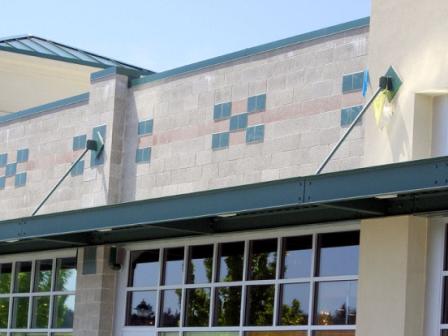
Figure 18.120.470.B.1: Tile used as an appropriate CMU enhancement. Combining split or rock-façade with other masonry or colored tile units with smooth blocks can create distinctive patterns.
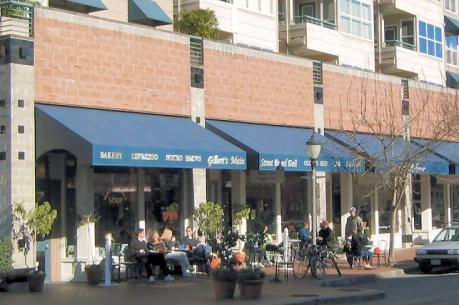
Figure 18.120.470.B.2: The above façade illustrates an acceptable alternative example, as CMU is used as the primary cladding material. Note the use of split-façade CMU above each of the awnings coupled with the use of smooth-façade CMU’s on the vertical columns (which employ black accent tiles for added interest).
b. Metal siding may be used as indicated in the Permitted Materials Chart in OMC 18.120.470.B.4 if it is incorporated with other permitted materials and complies with the following:
i. The metal siding has visible corner molding and trim and does not extend to the ground level of non-residential and mixed-use buildings and extends no lower than 2 feet above grade for residential buildings. Masonry, concrete, or other durable material must be incorporated between the metal siding and the ground.
ii. The metal siding must be factory finished with a matte, non-reflective surface.
iii. Where the metal siding is the primary or secondary siding material on upper floors, the layout of the panels must be coordinated with the location and patterns of windows, balconies, and modulated building surfaces to provide an integrated appearance.
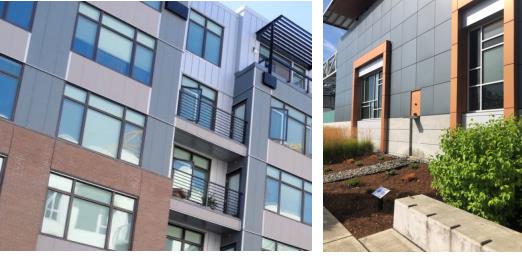
Figure 18.120.470B.3: Metal siding used appropriately in combination with other materials.
c. The use of Exterior Insulation and Finish System (EIFS) is prohibited.
d. Cement board paneling or siding (e.g. Hardie Plank) may be used where indicated in the Permitted Materials Chart in OMC 18.120.470.B.4. If cement board paneling or siding is the primary or secondary material, the paneling or siding joints must be arranged in a pattern that is consistent with windows, balconies, and modulated building surfaces and the cement board paneling or siding must be enhanced with façade details that add visual interest from the ground level and adjacent buildings.
Exception: The requirement above for the arrangement of the cement board paneling or siding does not apply in the Art/Tech Sub-District.
4. Sub-District specific materials requirements. The following chart identifies where materials are permitted in each of the Downtown Design Sub-Districts according to the following markings:
a. The color green indicates the material is generally acceptable in the Sub-District. Yellow indicates there are some conditions or limitations for using the material. Red indicates the material is not permitted in that Sub-District.
b. “Primary material” means any single material that covers more than 35 percent of the façade.
c. “Secondary material” means any single material that covers 35 percent or less of the façade.
d. “Accent material” means any single material used for a small building element such as a door, canopy, weather protection, light fixtures, cornice, trim (e.g. window trim), signs, or artwork.
e. Legend:
P = Permitted as a primary, secondary, or accent material
S = Permitted as a secondary or accent material
A = Permitted as an accent material
N = Not permitted
C = Conditional (see below)
f. “C” means that the material may be permitted but the City may require added conditions in order to ensure the durability and quality of materials provide a high level of design, construction, finish, and increase consistency with the desired design character for Sub-Districts as described in OMC18.120.420.
g. The City may allow materials otherwise prohibited or not listed if the applicant can demonstrate to the City’s satisfaction that the material is durable, appropriate for the proposed purpose and application, and meets the objectives of this section.
|
Materials |
Core - bottom 2 floors |
Core - above 2 floors |
Business Corridor - bottom 2 floors |
Business Corridor - above 2 floors |
North Capitol - bot-tom 2 floors |
North Capitol – above 2 floors |
Waterfront |
Art/Tech |
Residential - ground floor |
Residential - upper floors |
Entertainment - ground floor |
Entertainment upper floors |
|---|---|---|---|---|---|---|---|---|---|---|---|---|
|
Brick, stone, masonry except for CMU |
P |
P |
P |
P |
P |
P |
PC |
P |
P |
P |
P |
P |
|
CMU, Plain |
N |
N |
SC |
SC |
SC |
SC |
SC |
P |
AC |
AC |
AC |
PC |
|
CMU with enhancements |
SC |
SC |
SC |
SC |
P |
P |
S |
P |
P |
P |
P |
P |
|
EIFS |
N |
N |
N |
N |
N |
N |
N |
N |
N |
N |
N |
N |
|
Metal siding |
N |
N |
AC |
N |
PC |
P |
P |
P |
AC |
SC |
AC |
P |
|
Cement panels |
N |
PC |
N |
PC |
SC |
P |
PC |
P |
AC |
P |
AC |
P |
|
Lap siding or similar |
AC |
N |
AC |
N |
P |
P |
P |
P |
P |
P |
PC |
PC |
|
Wood panels with special finish and texture |
AC |
N |
AC |
N |
P |
P |
P |
P |
P |
P |
PC |
PC |
|
Mirrored or highly reflective surfaces |
N |
N |
N |
PC |
N |
PC |
N |
PC |
N |
N |
A |
N |
|
Plastic or sheet fiberglass |
N |
N |
N |
N |
N |
N |
N |
N |
N |
N |
N |
N |
|
Chain link fence (site) |
N |
N |
N |
N |
N |
N |
N |
PC |
N |
N |
N |
N |
|
Ceramic tile and similar |
P |
P |
P |
P |
P |
P |
P |
P |
P |
P |
P |
P |
|
Concrete |
C |
C |
C |
C |
C |
C |
P |
P |
C |
C |
C |
C |
|
Stucco |
C |
C |
C |
C |
C |
C |
C |
C |
C |
C |
C |
C |
5. Building color. Bright, highly saturated colors such as red, yellow, orange, bright green, bright blue, purple, and black may be used only as accent colors on small architectural features such as a door, canopy, weather protection, light fixtures, cornice, trim (e.g. window trim), signs, or artwork.
(Ord. 7244 §1 (Exh. A), 2020).
18.120.480 Blank wall treatments
A. INTENT
The intent of limiting blank walls and requiring blank wall treatments is to:
1. Ensure that large expanses of uniform walls visible from a public street or public park do not detract from the Downtown’s appearance or the pedestrian environment.
2. Add interest to local streetscapes.
B. REQUIREMENTS
The following requirements apply to all new development or substantial redevelopment in all Downtown Design Sub-Districts:
1. New blank walls. A blank wall, as defined in 18.120.120.B, facing a public street, pedestrian oriented space, common usable open space, or pedestrian pathway is prohibited unless treated as provided in this section. For a large blank walls, visible from a public street, pedestrian oriented space, common usable open space, or pedestrian pathway, more than one type of treatment may be required to meet the blank wall treatment requirements of this section. The following blank wall treatments satisfy the requirements of this section:
a. Display windows at least 16 inches of depth to allow for changeable displays. “Tack-on” display cases do not qualify as a blank wall treatment.
b. A vertical trellis in front of the wall with climbing vines or plant materials.
c. Building detailing that adds visual interest at a pedestrian scale. Such detailing must use a variety of surfaces.
d. Artwork.
One or more other blank wall treatments may be approved by the City if the applicant demonstrates to the City’s satisfaction that such treatment or treatments satisfy the intent of this section.
Exceptions:
i. The City may waive or relax the blank wall treatment requirements of this section for a development in the Art/Tech Sub-District if the proposed wall does not face a Type A Pedestrian Oriented Street or Type B Pedestrian Oriented Street, is not visible from a public street, pedestrian oriented space, common usable open space, or pedestrian pathway, and is not within 300’ from Plum Street NE, Union Ave SE, Capitol Way, or 4th Ave SE.
ii. The blank wall treatment requirements of this section do not apply to existing blank walls where improvements are not proposed.

Figure 18.120.480.B.1: Examples of blank wall treatments.
(Ord. 7244 §1 (Exh. A), 2020).
18.120.490 Above grade structured parking
A. INTENT
The requirements of this section are intended to minimize negative visual impacts of parking garages or above grade structured parking in buildings.
B. REQUIREMENTS
The following requirements apply to all new development or substantial redevelopment in all Downtown Design Sub-Districts. These requirements apply to all above-grade structured parking including above-grade parking within buildings as well as stand-alone parking garages.
1. General requirements.
a. Above-grade structured parking and parking garages must be designed to obscure the view from the ground of cars parked in the structured parking or garage. This does not require opaque screening that would create security issues in conflict with OMC 18.120.280.
b. Where the wall of the structured parking or garage is within 10 feet of the sidewalk edge, the grade level façade of the structured parking or garage must have a combination of artwork, grillwork, special building material, design, or other treatments as approved by the City that enhance the pedestrian environment. Small setbacks with terraced landscaping elements are design elements that can be effective in softening the appearance of structured parking or parking garage.
c. Above-grade structured parking and parking garages must have articulation treatments (not necessarily building modulation) that break up the massing of the parking structure or parking garage and add visual interest as described in OMC 18.120.440.B.1.
Exception: Structured parking and parking garages screened from public roadways by a building (i.e. a building located between the garage and the public street) are not required to comply with the above requirements.
2. Lighting requirements: Structured parking and parking garage lighting must be shielded to minimize or prevent direct view of light bulbs from the street level or sidewalk.
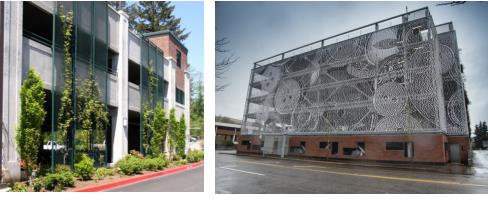
Figure 18.120.490.B.1: The sides of the parking garages include decorative grillwork and landscaping to enhance the pedestrian environment. The photo on the right shows the use of artwork to obscure view of parked cars.
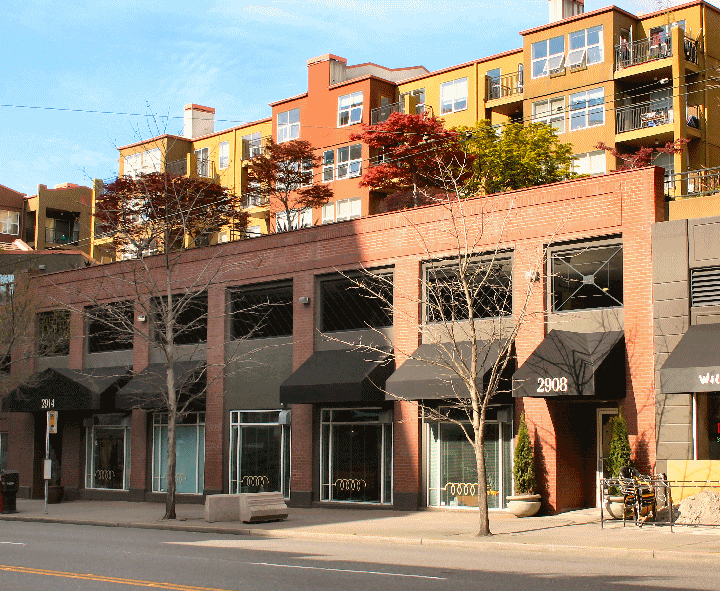
Figure 18.120.490.B.2: This building uses openings on its second level parking area to resemble windows.
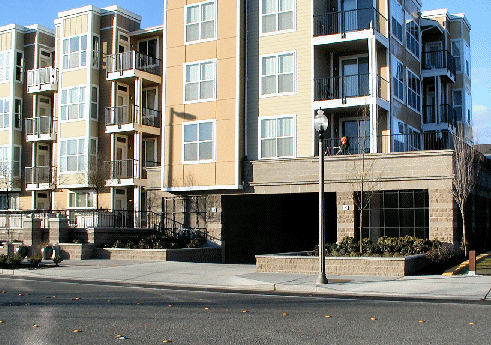
Figure 18.120.490.B.3: Design parking garages to obscure the view of parked cars. Note the landscaping that separates the garage from pedestrians.
(Ord. 7244 §1 (Exh. A), 2020).



